
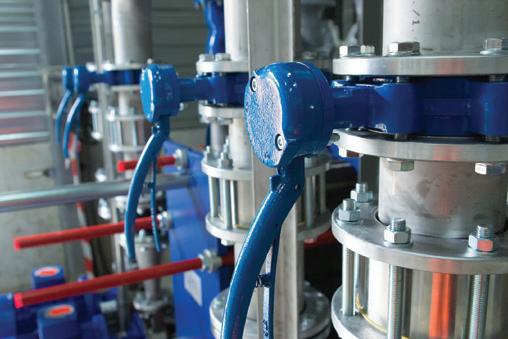
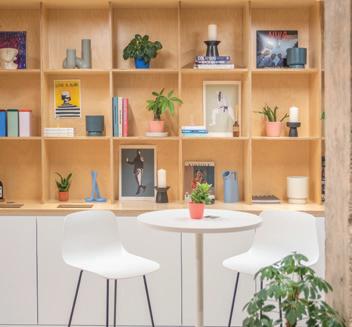




FACILITIES MANAGEMENT JOURNAL VOLUME 30 | 02 FEBRUARY 2022 DIGITAL WORKPLACE ene ts o ec HVAC i in enti ation inno ation 38 34 INTERVIEW ro essor e i ar ot on esearc 30 fficia maga ine FM inic ear how contract caterers are adapting to new ways of wor ing FUTURE FOOD ta ian ervest is supporting foodservice ro otics at cado s head office











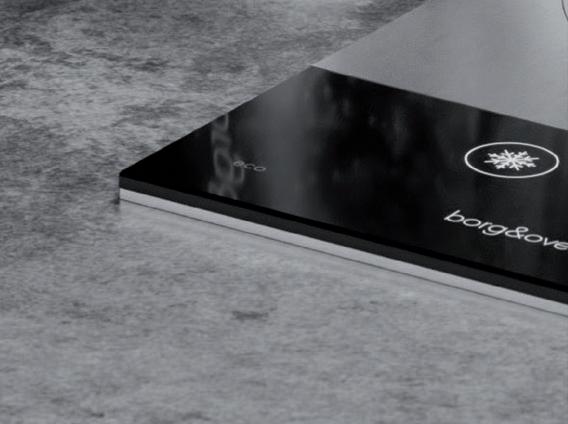
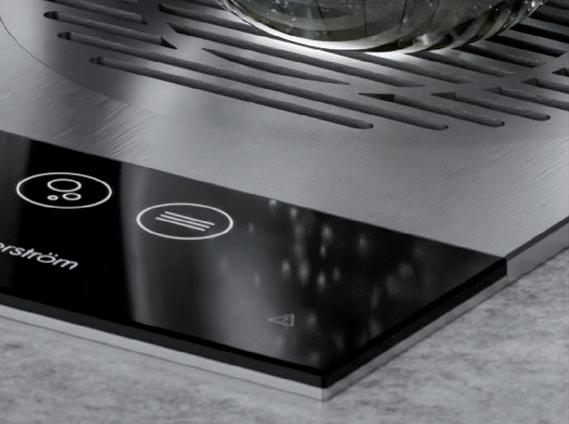
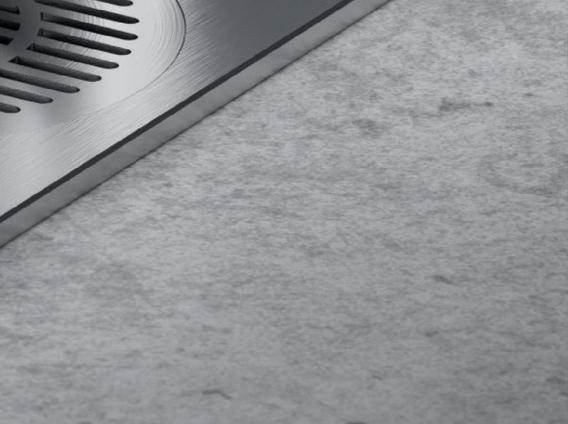







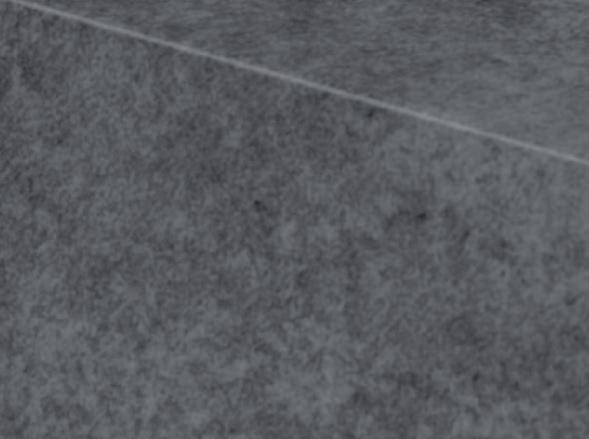
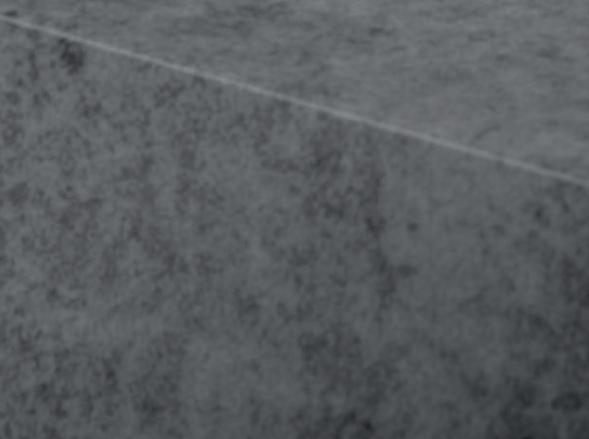



Refined hydration. Digital precision. Introducing the Borg & Overström T2: call: +44 (0)1362 656 993 email: t2@borgandoverstrom.com www.borgandoverstrom.com/t2 A digital tap system for forward-thinking offices and communal workspaces with technology for advanced performance, sustainability, energy efficiency, and hygiene. Discover the next generation tap system
kpm media Unit 1 Mill Place, Platt Business Estate, Maidstone Road, Sevenoaks, Kent TN15 8TB Tel: 01322 662289
Editor Sara Bean sara.bean@kpmmedia.co.uk
Assistant Editor & Social Media Development Sarah O’Beirne sarah.obeirne@kpmmedia.co.uk Tel: 01322 476815
Director & Designer Warren Knight warren.knight@kpmmedia.co.uk Mob: 0780 1947757
Sales Director Danny Grange danny.grange@kpmmedia.co.uk Mob: 07867 418994
Business Administrator Sami Smith sami@kpmmedia.co.uk
Accounts Trish Boakes accounts@kpmmedia.co.uk
Group CEO Nigel Copp nigel.copp@kpmgroup.co.uk
Editorial steering committee
Alan Hutchinson, Facilities Director, Howard Kennedy LLP
Charles Siddons, Head of Operations, NHS Property Services
Darren Miller, Head of EMEA Facilities Operations, PayPal an a e ea o states ritis e ica ssociation
Lucy Hind, Senior FM Lecturer, Leeds Beckett University

Marie Johnson, Head of Workplace & Wellbeing, Nominet
Russell Wood, Facilities Manager at Dentsu Aegis Network
Russell Burnaby, Head of FM, Regeneration and Environment, Brent Council
Simon Francis, Principal Lead, Estates and Masterplanning, ZSL
Simone Fenton-Jarvis, Workplace Consultancy Director at Relogix
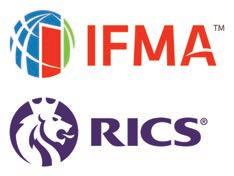
Stephen Bursi, Facilities Lead, BAE Systems
Stephen Vagg, Head of Estates and Strategy, National Express Group PLC
Vicky Thorp, Head of Facilities Management, CLSH Management
kpm media adopts a sustainable policy of using paper from managed forests. Printed in the UK by The Gemini Print Group www.gemini-print.co.uk
The publisher does not necessarily agree with the views and opinions expressed by contributors. No material may be reproduced in part or whole without written permission from the editor. Editorial contributions are accepted on an all-rights basis only. Letters to the editor may be published in their entirety or in edited form and remain the property of kpm media. While due care is taken to ensure the accuracy of information contained in this magazine, the publishers cannot be held responsible for any errors in editorial articles or advertisements. Subscriptions are available to non-qualifying and overseas readers at £120 p.a. (UK), £160 p.a. (EU countries) and £240 p.a. (overseas-other).
this month...
comment

This issue of FMJ takes a look at the way digital technology is revolutionising the FM realm. We’re all a are o t e ter ro ec e ne as t e sion of the words ‘Property’ and ‘Technology,’ to mean all aspects of technology that impacts the built environment, including software, hardware, materials or manufacturing. But there’s now a new more specific FM terminology, described by Cindy Hermsen, CEO of The Global Alliance of Facility Management Innovators (page 42) as FMTech.
This delivers technological solutions to FM specific functions such as access control, workplace management, data driven cleaning, intelligent maintenance management and innovations in food and beverage access and supply.
It’s this latter category that we’ve explored in more detail in the case study (page 24) on how the Semblr robot has been preparing fresh, personalised lunches for up to 4,000 employees at Ocado’s head o ice since last September. It is here, with the world’s first installation of foodservice robotics in a large, high-volume catering environment that we see the creation of another new term, ‘robotics as a service.’ The partnership between Atalian Servest and developers Karakuri is a perfect example of how you can successfully combine a service-led activity such as catering with leading edge technology.
We explore some other working examples of the power of digital data in the feature on page 38. This focuses on the way technology can support the management of workers based in front line operations and those charged with managing workplaces that are adopting hybrid work patterns.
All these technologies do much more than just help streamline operations. By embracing the digital revolution, the facilities management sector can address some crucial challenges; dealing with a shortage of service sta , providing valuable data driven feedback on everything from cleaning regimes to the reduction of food waste and monitoring air quality and space occupancy.
As always, we’d welcome your feedback about any aspect of the magazine, together with your insight into what’s happening in the FM sector.
sara.bean@kpmmedia.co.uk
FEBRUARY 2022 3 FMJ.CO.UK
© Copyright 2022 kpm media
Total Average Net Circulation 10,641 July 2020 to June 2021 SUPPORTED BY
FACILITIES MANAGEMENT JOURNAL JOBS Find your next role with the FMJ Jobboard Visit jobs.fmj.co.uk for hundreds of roles in FM and associated industries jobs. fmj.co.uk
your local waste experts
We provide a Total Waste Management service for the Facilities Management sector, ensuring that you and your organisation are fully compliant with all relevant legislation, providing you with complete peace of mind.
As part of our commitment to providing you with a first-class waste management service, we look to work in partnership with you to minimise the financial and environmental impacts of your waste.

Our team of experts are on hand to provide practical recommendations on the most cost effective mix of services which are tailored to your specific requirements.







Contact us for a quote 01753 686 777 sales@grundon.com













FMJ NEWS
This month’s summary of everything that has hit the headlines in the FM sector.
ASSOCIATION NEWS



The latest news and views from RICS and IWFM.







ADVICE AND OPINION
NEWS & ANALYSIS 10
OPINION
A new frontier of work awaits and 2022 will be a pivotal year for the FM profession, argues David Whiteley of Integral. COMMENT




Nestlé Co ee Partners research reveals that for 68 per cent of employees, the o ice is still critical to their productivity.
COMPLIANCE

John Archer, Solutions Director at Backbone Connect explains how to navigate the cybersecurity risks of smart building technology.
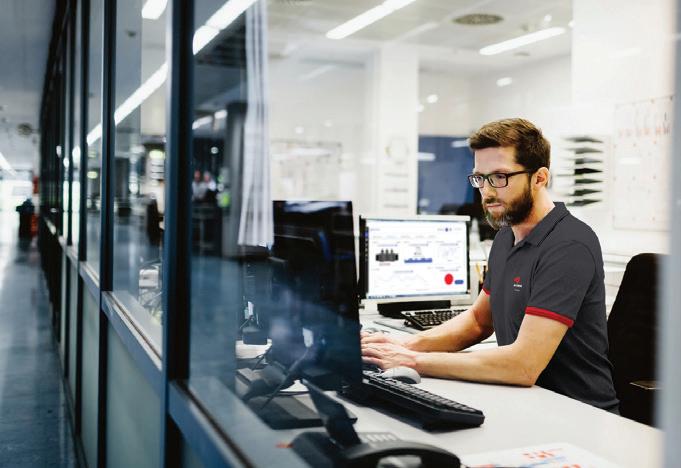
FAST FACTS
As part of a resilient power strategy for the NHS, voltage regulation can lead to real improvements advises Alastair Morris, Chief Commercial O icer at Powerstar.
BLOG & SOCIAL MEDIA


Grundon Waste Management’s Owen George explains why the disposal of lithium-ion and lithium primary batteries pose the biggest challenge.

FM CLINIC
With contract caterers continuing to su er from a reduced footfall in workplaces, how can caterers and their FM clients maintain the supply of reliable and appealing food services to a hybrid workforce, while still remaining competitive?

HVAC
BSRIA’s guide to Water Treatment for Closed Heating and Cooling Systems (BG50) has recently been revised. Tom O’Sullivan of Guardian Water Treatment looks at what’s changed. 36 HVAC specialist Don Foy provides practical tips on how improving building ventilation can reduce the possibility of COVID-19 and other winter viruses circulating indoors.
DIGITAL WORKPLACE



The experts from Over-C and Anders + Kern, two leading suppliers of digital solutions, outline the practical advantages of applying technology to both field and o ice-based FM.
Cindy Hermsen, CEO of The Global Alliance of Facility Management Innovators, describes how the adoption of FMTech can empower the sector.

SUSTAINABILITY
green retrofitting and refurbishment set to become a major trend over the coming decades, Christian Mabey outlines the principles which will guide design approaches.
FIRE SAFETY
MIFM
Next Edition
We visit the new o ices of law firm Kingsley Napley to view its new space, which KKS Savills, the interior architects for the project designed with an ‘activity-based’ flexible working model in mind. In CAFM, the results of a joint SWG/FMJ survey among users on how they’re adopting the latest FM so ware to help facilitate a return to the workplace. We take a look at the innovations in security technology that are predicted to have the greatest benefits for the security of premises; be they o ices, retail, healthcare, manufacturing or healthcare. And in ergonomics, with the move towards agile working models, we explore the fresh challenges for employers who must consider how to provide workstations that can be adapted to di erent users quickly and easily on a day-to-day basis.
To register for your free copy of FMJ visit fmj.co.uk
FEBRUARY 2022 5 FMJ.CO.UK
THIS MONTH...
34
38
42
44
With
46
PEOPLE 55 Find out who’s moving where in the facilities management profession. RECRUITMENT 56 Charles
the
working
TRAINING 57 Now is the
to reassess
and development
hybrid
says
CAREERS NEWS 58 A brief roundup of the latest careers news in the facilities management sector. CASE
24 Robotics
INTERVIEW 30 Alexi
FEATURES 24 FM CAREERS 57
Colt’s Conor Logan on installing and maintaining smoke control systems, which are designed to protect escape routes for occupants to enable safe evacuation.
Butterworth, Director, Access People considers
negative impact of remote
and onboarding on employee wellbeing.
perfect time
learning
programmes for the
world and set sta up for success in 2022,
Juliane Sterzl of CoachHub.
STUDY
developer Karakuri and Atalian Servest have joined forces to install and support Semblr, the world’s leading foodservice robot, which serves fresh, personalised lunches to the employees at Ocado’s head o ice.
Marmot, Professor Emerita of Facility and Environment Management at UCL and a BCO Research Committee member explains how the pandemic has accelerated trends in o ice design.
sara.bean@kpmmedia.co.uk
47 New product and service launches and company news from the FM industry.
10
12
14
16
18
20
06
08
CONTENTS Follow us on Facebook and Twitter @FMJtoday
LEGAL VIEW
HOW TO AVOID GOING TO COURT WHEN YOU ARE GOING THROUGH A DISPUTE
By Pauline Lépissier, Solicitor at law firm Devonshires








Disputes are unfortunately fairly common in any type of business and facilities management is no exception. Over the years I have dealt with many disputes for FM companies but there is one piece of advice I always adhere to – try to settle your disagreement without resorting to the nuclear option of going to court. Why avoid litigation? Put simply it’s expensive, time consuming, public and adversarial. Costs are very significant when you go to court and there is the danger of having to pay the other side’s costs if you lose. It takes up valuable employee time gathering evidence and the whole process can last several years.
Finally, the adversarial nature of trials mean they focus on the differences between the sides rather than finding a resolution. When you may have to continue working with the other side for the length of the contract it is always best to keep the hostilities to a minimum and resolve the dispute early.


How do you avoid a court battle? Fortunately, there are several ways of avoiding court through alternative dispute resolution (ADR). One thing that people do not necessarily realise is that informal ADR happens all the time when parties have a disagreement: they discuss it and see if a resolution can be found. This is always your best starting point.
Most disputes in FM involve contracts, so it is generally a good idea to get some legal advice first to make sure you understand your position and don’t inadvertently admit liability or say something that can hurt your case later. Negotiations with the other party are often best done without prejudice basis, meaning that whatever is said can’t be used against you in court.
If informal discussions are unsuccessful in resolving the dispute there are several options available:
Early Neutral Evaluation (ENE) – This is a process where both parties appoint an independent person, often a former judge, who will assess the documents and say what they think the outcome would be if the case went to court. The decision isn’t binding, but it is quick and cheap and gives both parties a good idea about the strength of their arguments.
Expert Determination – This is similar to ENE but is binding and often used to resolve technical disputes (such as whether an asset was installed or maintained correctly).

Mediation - This can happen before or at any stage in court proceedings and is a useful tool for getting a resolution. I have seen many successful outcomes through mediation of disputes that were seemingly deadlocked. A third party is appointed, often a senior QC or judge, whose job it is to find a resolution that both parties are happy with in the course of confidential discussions. The parties retain control as to whether or not to settle. One of the benefits of mediation is that you can agree things in the settlement that you would never be able to get in a court judgment. Court judgments largely only determine liability and its monetary consequences.
Adjudication – Generally used in construction disputes, adjudication is known as a ‘rough and ready remedy’ as it is so quick – a reasoned decision can be obtained in as little as 28 days. An adjudicator makes a judgment that is interim binding – so it is binding unless the matter goes to court or arbitration. The advantage of this method is that it keeps legal costs down, but the rush can lead to injustice.
Arbitration – This used to be the main alternative to going to court but over time it has become just as time consuming and costly. Both parties agree the rules beforehand. It is still often used for international disputes. The main advantage is the confidentiality of arbitral proceedings.

Overall, it is always advisable to try and resolve any disputes before they get to court. With all of the options available to avoid court, there should be one suitable for any dispute you may have.
LANDSEC JOINS THE CUBE COMPETITION TO TACKLE BUILDING ENERGY USE
Landsec has become the latest participant to sign up to the UK-wide CUBE Competition, designed to help landlords, building managers and occupiers improve energy e iciency in their commercial buildings through gamification and behavioural change.


The UK real estate company has entered three of its buildings as part of the competition, including One New Change, 80-100 Victoria Street and New Street Square, all in London. The buildings are owned and managed by Landsec, who will collaborate with its occupiers, across a combined 1.5m sq. .

Landsec’s involvement in the competition aligns with the announcement of its £135 million net zero transition investment plan at the end of last year, set up to help the Group achieve its 2030 science-based target and drive its transition to net zero.
The nine-year investment plan will support Landsec’s decarbonisation plans through reducing operational energy use and moving to cleaner sources of energy. Importantly, this along with its participation in the CUBE competition, will drive innovation and best practice across the wider industry – changing behaviours and encouraging better understanding of how to drive down energy consumption.
Once the competition begins in March, the participants will be ranked monthly to decide which building has registered the largest energy reduction in percentage terms, measured against their own historic baseline of energy usage.
SODEXO LAUNCHES HEALTH AND WELLBEING INITIATIVE TO SUPPORT UK MILITARY PERSONNEL
Sodexo has launched Mindful Active, an educational tool that provides holistic health and wellbeing guidance for UK military personnel.
Launched by Sodexo at Her Majesty’s Naval Base (HMNB) in Portsmouth, Mindful Active has been developed using Sodexo’s own client and customer insight and influenced by the MoD’s own insight, such as the UK Armed Forces Continuous Attitudes Survey (UKAFCA), to understand the challenges faced by the UK military community.

Designed primarily for physically active personnel, the content is still relevant for what is considered to be the whole force; not only serving military personnel but also partners and civilians who live, work and visit the base.
Mindful Active is accessible at home and at work and provides nutritional information, wellbeing signposting, recipes, and cooking advice. It has been built on four pillars – Fuel, Focus, Perform, Restore - each designed for body and mind.
Mindful Active forms the new approach to catering. Throughout the base Mindful Active messages, tips and guidance are communicated and made available online via a smart phone app, empowering customers to make informed lifestyle choices with ease.
Holistic mental health guidance is also available with everything from simple tips through to links to professional advice and services, helping users learn how to manage stress and discover relaxation techniques.
FEBRUARY 2022 6
www.devonshires.com
NEWS & ANALYSIS FMJ.CO.UK
UK commercial landlords are struggling to find tenants
RISING INVESTMENT DEMAND IN UK COMMERCIAL PROPERTY HIGHER THAN PRE-PANDEMIC
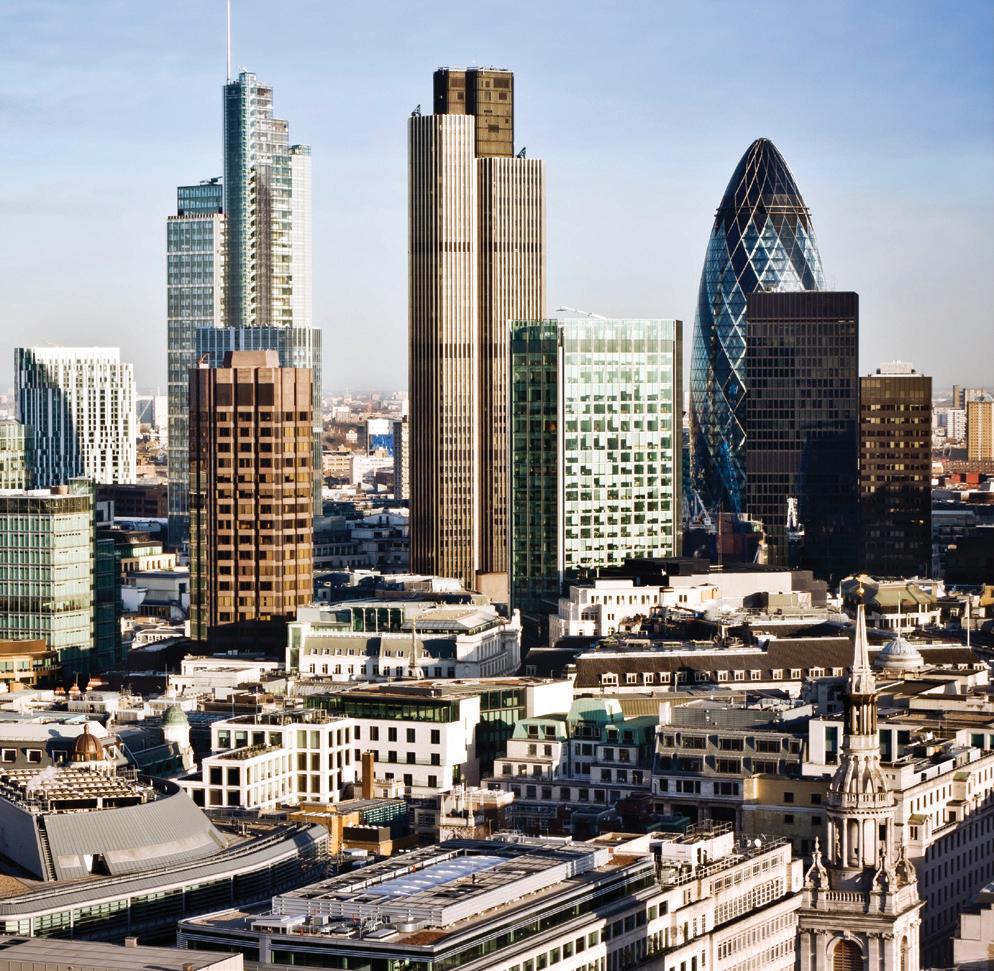
More than three fifths of the UK’s commercial landlords are struggling to attract tenants to traditional offices as businesses’ workspace demands have changed rapidly during the pandemic. This is according to new research by European flexible workspace provider, infinitSpace, who commissioned an independent survey among 204 UK commercial landlords, all of whom own one or more office buildings in the UK.
The findings revealed that 62 per cent are currently struggling to attract prospective tenants to fill their traditional office spaces, and almost two thirds (64 per cent) reported having seen a “notable shift” in tenants’ demands during the pandemic, including terms and use of space.
As a result, seven in 10 (71 per cent) office landlords plan to increase their flexible workspace offering in the coming five years.
infinitSpace’s research found that UK commercial landlords currently dedicate an average of 33 per cent of their office portfolio to some form of flexible or co working spaces. By 2026, this is forecast to rise 11 per cent to 44 per cent.

Since the start of 2020, 59 per cent of office landlords have begun offering shorter and more flexible leases.
Over half (52 per cent) added new facilities to allow tenants to collaborate when inside the building, such as meeting rooms or breakout areas, while 63 per cent have added facilities to improve the wellbeing of tenants, such as a gym or relaxation space.
Property experts have seen positive movements in investment trends across commercial property during Q4, while owners continue to diversify the way we use o ice space.
This is according to RICS Global Commercial Property Monitor – Q4 2021.






Across all sectors, investment enquiries rose for the fourth successive quarter, leading to capital value expectations rising for the year ahead. The strength of the industrial sector continues to standout, with a net balance of +84 per cent of respondents expecting prime industrial values to increase over the next 12 months. The outlook is also positive for prime o ice values, as a net balance of +24 per cent of respondents foresee an increase during 2022 (the strongest reading since Q4 2019).
Looking at the alternative sectors, over 50 per cent of respondents project an upli in capital value expectations for data centres, multifamily residential and aged care facilities, respectively.
As almost two-fi hs of respondents (+39 per cent) believe the market to be in the early phase of an upturn, despite some impact from the latest COVID wave, respondents are more optimistic about the future of the UK commercial property market, with owners in the o ice sector looking at how to attract employees and occupiers back.
As COVID restrictions li ed across the UK, 66 per cent of respondents still believe an o ice is essential for a company to successfully operate. However, 76 per cent of contributors report that they are seeing an increase in demand for more flexible and local workspaces and over two thirds (69 per cent) have reported an increase in space allocation per desk following the pandemic; all highlighting how occupiers are making the o ice place safe and attractive for employees once more.
But traditional set ups are changing as 87 per cent of respondents are seeing a repurposing of o ice space, with 15 per cent highlighting that this is happening in significant volumes.
Interestingly as UK o ice space looks to be repurposed, investment enquiries from the UK and overseas slightly increased this quarter.

22 FEBRUARY 2022 Workplace Futures Conference One Great George Street, London, SW1 www.workplace-futures.co.uk 09 MARCH 2022 SMARTBUILDINGS22 London 22 Bishopsgate, London https://worktechevents.com 03-05 MAY 2022 UK Construction Week London ExCeL, London https://www.ukconstructionweek.com/ 10-13 MAY 2022 Interclean Amsterdam RAI Amsterdam, The Netherlands www.intercleanshow.com/amsterdam 11-13 MAY 2022 Health Estates and Facilities Management Association Forum 2022 Stadium MK, Milton Keynes https://www.hefmaforum.co.uk/ 01-02 JUNE 2022 World Workplace Europe Hybrid Event https://worldworkplaceeurope.ifma.org/ 07-09 JUNE 2022 FOOTPRINT+ A zero carbon future Brighton https://www.footprintplus.com/ 23 JUNE 2022 The NHS Estates and Facilities Conference 2022 https://bit.ly/3dl2fKu 20-21 SEPTEMBER 2022 Workplace & Facilities Expo RDS Dublin, Ireland www.workplaceandfacilitiesexpo.com 17-19 MAY 2022 www.facilitiesshow.com DATES FOR THE FM DIARY FEBRUARY 2022 7
you have any knowledge of FM news from across the world, please feel free to get in touch with our assistant editor Sarah O’Beirne email
If
sarah.obeirne@kpmmedia.co.uk
FMJ.CO.UK NEWS & ANALYSIS
RICS LAUNCHES THE INTERNATIONAL BUILDING OPERATION STANDARD

and perceptions of users in a simple but unique approach to holistic property performance assessment, RICS has developed a methodology that is entirely new to the market.
This month sees the launch of a major new RICS global initiative, the International Building Operation Standard, a data led, people centric framework which identifies the critical areas that need to be measured in order to identify and improve areas for building performance.
worth and its contribution to wider society. Put another way, we need to redefine its relevance to deliver:
Customer-centric real estate
People-centric real estate
Data-centric real estate
Responsible real estate
Real estate as a resource
Bagust - Global Property Standards Director, RICS




The occupation of commercial buildings has changed radically over the past couple of decades. Technology has wrought enormous change; business models and consumer habits have been transformed; environmental concerns have come to the fore; attitudes to health and wellbeing are evolving rapidly; expectations of the workplace are far more sophisticated; and the role of real estate in corporate planning is changing rapidly.
All of these changes mean that we have to redefine real estate. It’s no longer a place we just go to, nine-to-five; it’s no longer separate for the rest of our lives; for many, it’s no longer a single place. It’s no longer a passive investment opportunity, and it’s no longer just a building project. It is no longer ‘let and forget’.
We must change the way that we evaluate its
The purpose of IBOS is to support organisations that wish to measure the operational performance of their property assets in a consistent and holistic manner – irrespective of the type of property or its location. IBOS cuts across asset types and geographical boundaries.
E icient and e ective asset performance is contingent on accurate and timely data being available. That data must look at multiple facets of performance simultaneously, such as utilisation, cost in use and environmental performance.
IBOS adds another dimension – the user experience – and in doing so reaches beyond the more traditional technical aspects of operational performance that have become tried and tested over many decades.
Introducing the user experience into the framework for measuring the operational performance of assets sets IBOS apart from all other methodologies. By reflecting the needs
Not only does IBOS introduce the occupier dimension as a separate consideration when assessing overall property performance, it recognises that the technical performance of an asset also a ects the experience of the user. For example, consider how alternative approaches to space utilisation, maintenance, cleaning or life cycle replacement can impact directly or indirectly on the ability of a workplace to e ectively support the needs of the occupier.
The five pillars of performance that form the foundation of IBOS approach performance from di erent perspectives but with a single unifying thread: the user experience.
The five pillars are: Compliance - Function - CostSustainability - Experience

RICS will shortly launch a free new self-assessment tool available to any organisation that wishes to follow the pillars and maturity levels set out in IBOS.
IBOS is not intended to replace existing standards that are well used, it is more akin to providing a framework to demonstrate their role and context in the wider measurement of building performance.
For more details on the standard and how to support and adopt it please contact me at pbagust@rics.org
BETWEEN EMPLOYEES AND EMPLOYERS
Where America leads, the UK tends to follow, and with ‘The Great Resignation’ making waves across the Atlantic, businesses will be wondering what their sta turnover will look like in 12 months’ time.
A variety of factors will drive one in four of us to leave our employers, but the timing suggests that the pandemic was the catalyst. IWFM’s time-series research - which tracked UK workers’ attitudes towards and experiences of working during the pandemic – o ers some insights.
In the latest phase of our research (December 2021), 21 per cent of UK workers reported that their overall wellbeing had worsened over the past year due to changed working practices. The figures for women (26 per cent), part-timers (27 per cent) and over 55s (31 per cent) underlined the problem.

Why? Again, there will be a variety of factors. What we do know is that some organisations are failing to provide an adequate workplace experience for their people.
Thirty three per cent of those we surveyed said their employers had not equipped them to work from home productively. In an earlier phase of our research (summer 2021), 50 per cent surveyed said they felt more needed to be done to support hybrid working, while 48 per cent of UK workers believed they were more productive working from home. Would that last figure be higher if more workers had the right equipment available to them and a culture that
encouraged them to work where they do it best?
Our latest research also suggests that up to 83 per cent of full-time o ice-based workers will spend all or most of their time in the o ice in future – o en in a mandated schedule, we are hearing.
The interests of some organisations and their people will be best served by returning to the o ice all or most of the time; there is no single answer for all. Equally, I understand that this is a test and learn phase for many of us as we try to find our feet mid-pandemic. However, there is also an evident disconnect between employers and employees that can be explained by many organisations reverting to type and not listening to their people. Disenfranchising our people is a quick route to poor mental health, decreased productivity and resignations.
Our increasing understanding of the implications of di erent work settings should ring alarm bells for any businesses hoping to retain and attract top talent in the future. Employers simply must invest to: a) adapt their workplace strategy to reflect new working realities; b) support employee wellbeing.

You can find out more about workplace wellbeing and workplace optimisation on our website.
In the coming months, we will publish the findings from IWFM’s 2022 Market Outlook Survey which will help us to paint a clearer picture of the state of our sector. Please visit IWFM.org.uk and search ‘outlook’ to complete the Survey. It only takes around 10 minutes and your input is crucial to us understanding the factors a ecting the market.
FEBRUARY 2022 8 ASSOCIATION NEWS
THE DISCONNECT
Paul
NEWS & ANALYSIS FMJ.CO.UK
IWFM CEO, Linda Hausmanis
Poorly maintained smoke control systems can be deadly. Whilst fire grabs more headlines, smoke is the real killer. More than twice as many people die from smoke inhalation than from burns. Often, smoke incapacitates so rapidly that victims are unable to make it to an otherwise perfectly accessible exit.


Why a ‘smoke test’ is not a service

There is no substitute for a proper service. If your current servicer is not conducting full motor resistance and load tests, checking battery charge rates and identifying cause and effect of any failures, then your system is not being tested robustly enough to ensure that it will work in the event of a real fire.


Competency and certification are crucial Colt carries out thorough, notarised testing on each system we maintain and our engineers receive full technical training on all system types when they join. This is refreshed regularly and
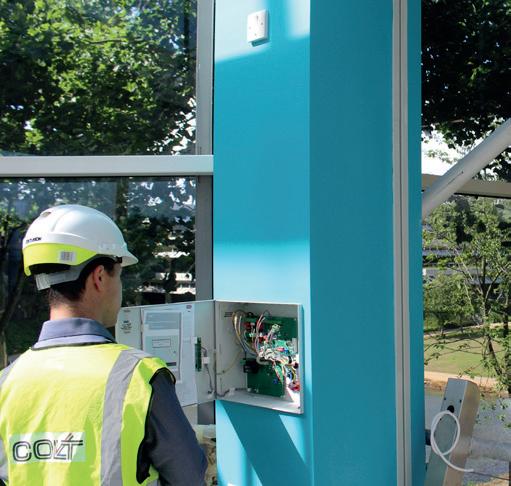

supplemented whenever important developments or updates to the legal requirements occur. Colt has 60 fully trained engineers and is the UK’s first company to be awarded certification to both IFC SDI 19 and SDI 05.
Furthermore, nearly a quarter of our engineers have been with us for over 20 years. That’s truly unparalleled experience. Small wonder then that, when looking for reliable servicing for their smoke control systems, more and more people are turning to the most competent. Colt.
To find out more, visit us at: coltinfo.co.uk/service&maintenance call us on 02392 491735 or email service@uk.coltgroup.co.uk

Don’t discover the hard way that a Smoke Test is not a Smoke Control Service.
Choose Colt Service Expertise built on proven experience.
CONFIDENT FUTURE
example, cutting-edge smart engineering practices can leverage real-time asset data to give facilities managers a better understanding of how building services can be more e ectively controlled in a hybrid work environment.
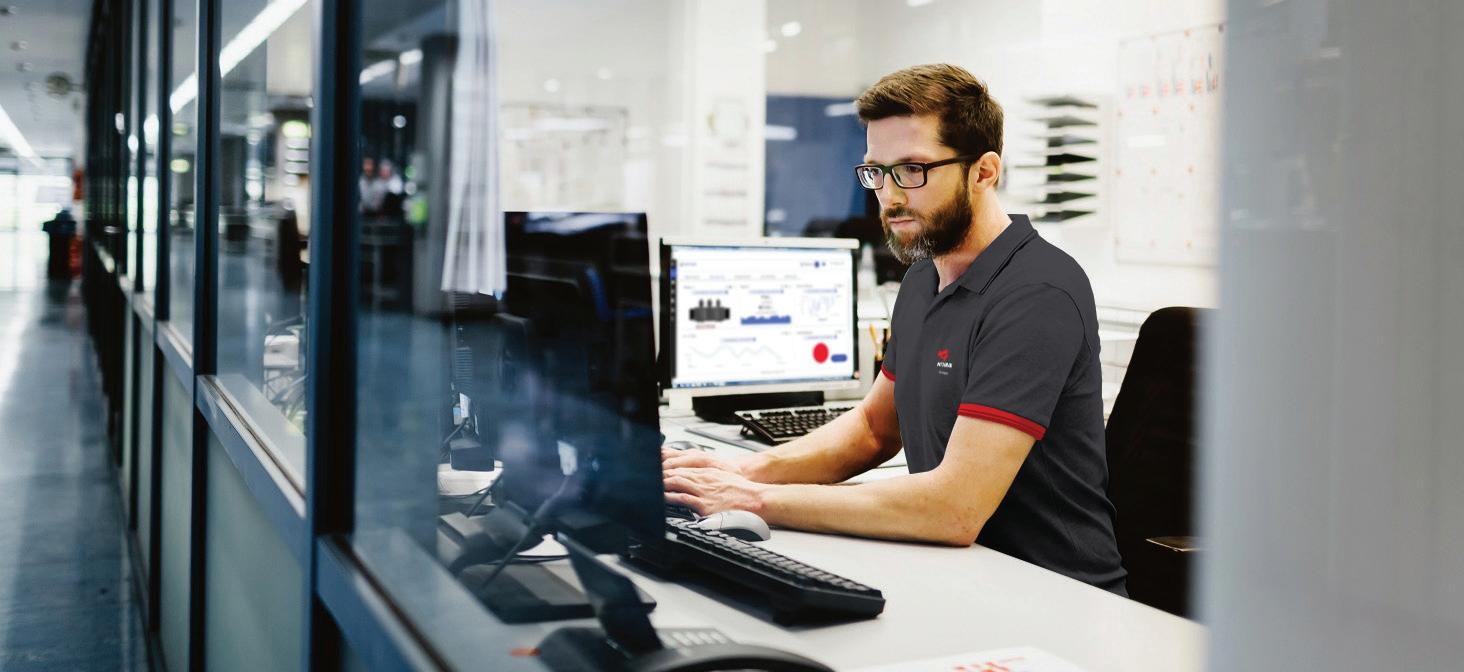

STARTING YOUR SUSTAINABILITY JOURNEY
Another top priority for companies in 2022 is sustainability. COP26 showed that businesses are now outpacing policymakers on net zero commitments by setting targets for 2050 or sooner in response to growing demand from customers, investors, employees, and communities.
The built environment contributes around 40 per cent of global carbon emissions, providing facilities managers with another opportunity to drive change and lead any decarbonisation e orts. The net zero journey is long, but every initiative must begin with a thorough understanding of a building’s carbon output and its assets’ performance. Again, smart engineering can track energy consumption data from equipment, lighting, and energy meters within a single system, giving businesses a clear sustainability baseline for active process improvement as well as future strategic asset management.
Anew frontier of work awaits and 2022 will be a pivotal year for the FM profession. By the time this magazine issue goes to print, the UK government may have set out its plans for ‘living with COVID’, including changes to the rules around testing and self-isolating. Meanwhile, businesses have been developing their own postCOVID property and workplace strategies, and they will need facilities managers to help guide them through this challenging period.
First and foremost, FM teams will play a crucial role in helping rebuild confidence in workplaces by showing employees that they are both safe and able to support their changing needs in an increasingly hybrid work environment. Last year, a JLL global survey of more than 3,300 o ice workers(i) found that 63 per cent of the workforce want to keep the possibility to alternate between di erent places of work in the future, with the majority wanting a mix –three days a week in the o ice and two days a week working remotely on average.
MANAGING THE CHANGING WORKPLACE
The new dynamics of hybrid work, including far greater fluctuance in building occupancy rates, will significantly impact the infrastructure, systems, and services that facilities managers oversee. They will also give FM professionals a critical role in an increasingly competitive talent attraction and retention landscape.
Recently, media reports sparked fears of a ‘Great Resignation’ sweeping the world. One survey by recruitment firm Randstad UK(ii) found almost a quarter of employees planning to find a new job within six months, while the O ice for National Statistics(iii) revealed that nearly a million UK workers switched jobs between July and September 2021.

Many commentators claim the factors driving these numbers are unsurprising: stress caused by the pandemic, the shi to remote working, and the impact on work-life balance. And there’s certainly evidence to back these conclusions. According to the JLL research, 36 per cent of global workers, spanning all industries, lack energy while working and struggle to remain motivated and engaged in their job — heaping the pressure on facilities managers to devise a hybrid work strategy that meets their employees’ changing needs and manages the transition to new ways of working e ectively.
Growing appetite for speed, flexibility and agility is also driving the need for more ‘on-demand’ services and the technology to support new working patterns, providing FM with an opportunity to transform core services such as M&E. As an
Of course, there’s more to sustainability than decarbonising buildings. The pandemic has highlighted the urgent need to create regenerative workplaces(iv) that support mental, social, and physical health. As evidence, employee demand for better indoor air quality at work has grown exponentially since the beginning of the pandemic, while groups such as the British Council for O ices and the Royal Academy of Engineering have called for better ventilation in the UK’s building stock.
Better indoor air quality would not only stop viruses from spreading but would also help employees feel more productive, energised, and engaged at work. From the facilities manager’s point of view, this creates the potential to make a di erence through installing smart environmental controls that can adjust factors such as lighting, heating or humidity in real time, especially useful for any businesses attempting to implement a hybrid working model.
Facilities management has the skills and tools to establish itself as an organisational leader in 2022. Whether the switch to hybrid working, the net zero journey or employee wellbeing, FM can become the change agent that businesses need in the new world of work.
REFERENCE NOTES
(i) www.jll.ca/en/trends-and-insights/research/workerpreferences-barometer
(ii) www.randstad.co.uk/about-us/industry-insight/greatresignation/
(iii) www.ons.gov.uk/employmentandlabourmarket/ peopleinwork/employmentandemployeetypes/bulletins/ employmentintheuk/november2021
(iv) www.jll.co.uk/en/trends-and-insights/research/ regenerative-workplace
OPINION FEBRUARY 2022 10
David Whiteley, Head of Sales and Solutions at Integral believes that in a changed world the prime remit of the facilities management sector will be in delivering con ence in t e ost or ace
ADVICE & OPINION



































Is your existing chiller plant efficient and reliable? We’re here to help. The world is our building. Were all in it together. t 08457 165 162 e customer.care@trane.com www.trane.co.uk
COFFEE POINTS
- out of reach from other teams to prevent noisy gatherings. This close proximity to desks prevents the need for those in focus to leave their area and risk interrupting their state of flow.


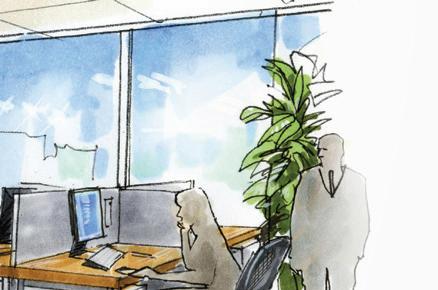
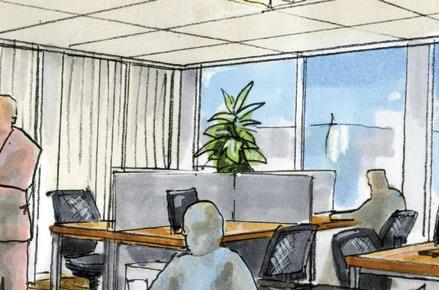


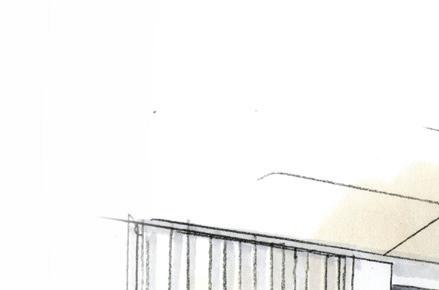
Optimised teamwork and cohesion require faceto-face team contact away from outside distractions. In this context, hot beverages play a key role, encouraging impactful and e icient group meetings and discussions across the team.
Productive behaviour and better time management can be facilitated through providing a hot beverage

Whatever the reason for hybrid working there remains a desire to be in a physical o ice space. Recent Nestlé Co ee Partners research revealed that for 68 per cent of employees, the o ice is still critical to their productivity –with 39 per cent saying they feel more productive in the workplace and 29 per cent preferring a mix of workplace and home. But while many believe o ices are now purely a place for collaboration and engagement, the research also revealed that almost a quarter (23 per cent) of employees say they are more productive there because of the peace and quiet and 24 per cent because of fewer distractions.
and at work, 44 per cent say this is down to
















Face-to-face collaboration and communication remain important. Of the employees who feel more productive at work, 44 per cent say this is down to interacting with colleagues, 33 per cent say it’s the social aspect and collaborating with a team, and 26 per cent put it down to an inspiring atmosphere. This has important implications when it comes to workplace design, giving facilities managers food for thought when adapting spaces to meet diverse workforce needs.
SMART COFFEE BREAKS
Nestlé Co ee Partners has been discussing these findings on employee attitudes towards the workplace with world-leading experts in ‘Smart Co ee Break – The Productivity Podcast’, gathering perspectives and advice from productivity expert, Despina Katsikakis, Neuroscientist and FlowSpecialist, Dr Fiona Kerr, alongside other eminent figures in the field. Adding insight from their expertise, they’ve developed a series of pointers on creating workplaces that both inspire and refresh. Some of these pointers are about the placement of interactive points in the o ice or the provision of workplace beverages.
As Despina Katsikakis states: “Organisations need to adapt to how people will work di erently, to align the space to those new behaviours, and to focus on creating dynamic ways to reinforce those elements of serendipity, of occasion, of memorable and delightful experiences.”
To address this, we recommend designing o ice space around behavioural outcomes. Falling within

point in the meeting room. A centralised space outside but in close proximity
four categories: individual flow and focus, optimised
four categories: individual flow and focus, optimised teamwork, team-to-team and in-team collaboration, and unplanned interaction; each requires di erent environmental considerations to ensure success and productivity. And with seven out of 10 employees saying they have better work ideas and are more productive a er a co ee, it also helps to identify the optimum placement for beverage points in each of these environments.
PROMOTING INTERACTIONS
Carefully placed hot beverages play a valuable role as a powerful attractor, creating moments of planned and unplanned interactions in the workplace.
In fact, encouraging movement through the o ice doesn’t just give employees a chance to refresh and regroup; it boosts productivity. And according to Dr Fiona Kerr, this also enhances flow: “When you look out the window or go for a walk it’s a key part of flow – it allows your brain to relax, so it can pick out bits you want to focus on and put it all together.”

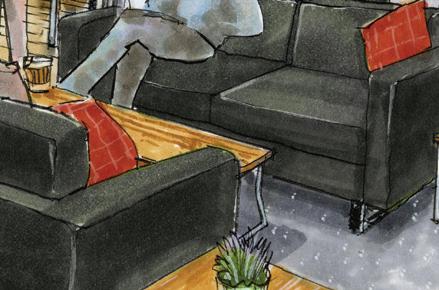

Employees with clear goals that require individual flow and focus need distraction-free working spaces with minimal noise. For these, hot beverage solutions should stage ‘strategic interventions’, rather than ‘unplanned interruptions’, so they can optimise outputs and avoid setbacks in flow-state productivity.










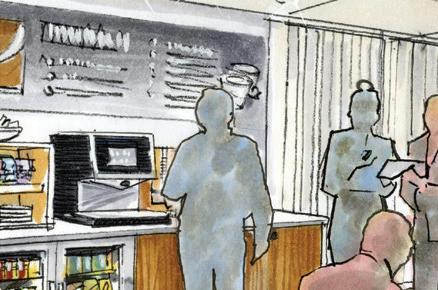
To achieve this, hot beverage points should be strategically placed at the end of each row of desks
hot beverage point in a communal space outside but in close proximity to the meeting room will also ensure more e icient breaks and encourage the continuation of conversations beyond the meeting room. Prevent input from external sources by locating the point in a space where only the chosen group or team can use it and connect.
more e icient breaks and encourage the
Where team-to-team and in-team collaboration are required, goals are less defined, leading input from outside influences to support cross pollination of ideas.
Hot beverages are ideal for staging productive interactions between teams who don’t normally communicate with one another or have limited time for breaks. A centralised hot beverage point at the centre of spaces where teams/departments cross or meet facilitates collaboration. Be mindful that employees should be able to choose when to break away. This is where a kitchen space provides the perfect opportunity for individual space, rest and recuperation when needed.
Unplanned connections build trust, spark new ideas and promote di erent ways of thinking. Here is where the workplace café plays a critical role, o ering employees a relaxed environment for socialising, collaboration, and refreshment. In this context, colleagues may find themselves interacting in a way that’s less formal, and through allowing them to chat naturally, it is likely to breed unplanned interactions, leading to those all-important ‘light bulb’ moments. View the insights here - https://bit.ly/3qmM7za
COMMENT FEBRUARY 2022 12
David Basson, Head of Beverages at Nestlé Professional shares the res ts o researc on t e ro e o coffee rea s in or ace ro cti it an offers ti s on a in t e ost o o ort nities to connect
ADVICE & OPINION





































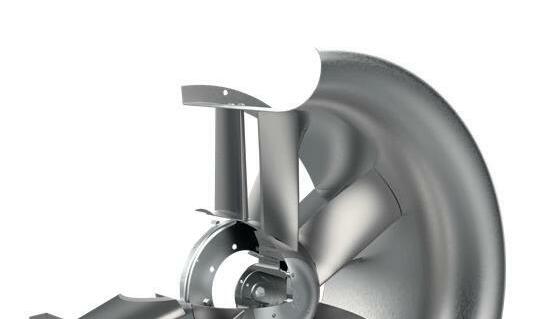
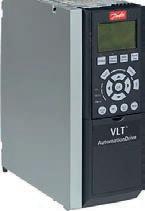



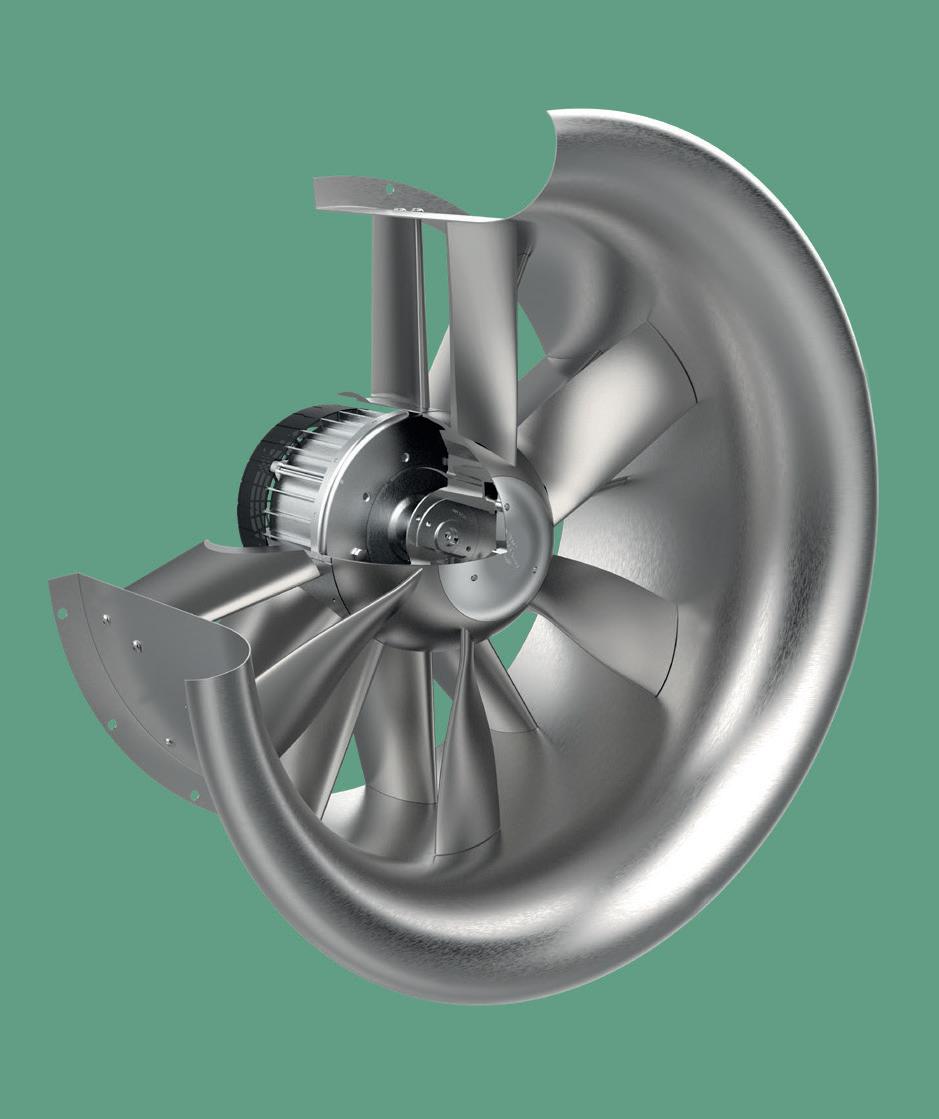










EC+ efficiency 92% x 95% x 98% = 98% save energy with NOVENCO®ZerAx® DANFOSS VLT® FREQUENCY DRIVES PERMANENT MAGNET MOTOR NOVENCO ZERAX® HIGH EFFICIENT AXIAL FAN x= x www.novenco-building.com chu@novenco-building.com T: 0800 681 6009 M: 07748 187424 EC+ Pure competence in air. NOVENCO’s highly efficient EC+ solution with ZerAx® axial fans is the latest market response to growing demands for energy saving. Designed to increase efficiency of HVAC systems, ZerAx® fans radically reduce use of energy in new or existing AHU systems, or any ventilation applications. NOVENCO Zerax fans provide efficiencies of 92%. Combined with best-in-class IE4 and IE5 permanent magnet (PM) motors with efficiency of 95% and independent high quality Danfoss VFDs with efficiencies of 98%, they provide the highest possible total system efficiency of 85%, which outperforms the closest alternative solution of EC plug fans by 20-25%.
COMPLIANCE
TAKE ACTION TO SECURE SMART BUILDINGS
Smart devices are often connected using unsecured internet such as guest Wi-Fi in buildings, which makes them vulnerable to hackers. John Archer, Solutions Director at Backbone Connect explains how to navigate the cybersecurity risks of smart building technology

There is a tech revolution happening at our workplaces. Landlords and building tenants are investing in an array of smart building systems, from apps that allow heating, lights and even kettles to be controlled remotely, to facial recognition powered security. Facilities management teams are at the heart of the shi , using new technology to improve the user experience and help make workspaces more productive and e icient. In fact, it’s fast topping occupant’s priority list – we know for example that 69 per cent of tenants would pay more for tech that helps them achieve net zero goals and boost sta wellbeing and performance.
But what many people don’t realise is that the more smart tech they install, the more vulnerable their buildings and the businesses working within them can be to cyber-attacks. As systems become more complex, facilities management teams need to understand these vulnerabilities and be aware of the potential risks, helping to protect landlords and occupiers’ businesses and reputations.
UNDERSTANDING THE RISK
The first thing to know is that the smart building industry isn’t regulated. Technology is frequently installed in a piecemeal fashion, one device at a time without a wider over-arching framework. Why does that matter? O en these devices are installed on guest WiFi networks or connected ad-hoc to various broadband lines – this becomes a weak point which hackers can take advantage of to access wider networks.
At best, this could lead to them wreaking havoc with internal systems like building access or lighting, inconveniencing workers and disrupting businesses. However, attacks are typically far more malicious in intent, with criminals using the devices as a stepping stone to steal or ransom data. This can lead to GDPR breaches as well as significant potential financial losses and reputational damage for businesses. For o ice landlords these attacks can lead to serious consequences for their portfolios, limiting their ability to attract new tenants if their buildings are perceived
as unsafe. They may even be seen as culpable for failing to secure assets properly. For occupiers themselves, being the victim of a hacker could substantially harm their relationships with investors, customers, partners and suppliers.
Since the pandemic, cybersecurity attacks have been rising exponentially. There has been a 62 per cent increase in ransomware globally since 2019, according to the 2021 SonicWall Cyber Threat Report. Without su icient protection against dangers like this, the very technology which is being used to improve the workplace experience could actually significantly damage businesses.
WHO IS RESPONSIBLE?
The good news is that facilities management teams can act as the first line of defence against attacks on smart buildings. At design and installation stage, teams have an important advisory role to play, encouraging occupiers or building owners to embed cybersecurity considerations within an overall technology strategy. This should include setting up a separate, secure and ring-fenced ‘internet of things’ network which will only be used for smart devices.
For buildings where technology is already installed,


TOP TIPS FOR FMS
The steps to safer smart
teams should consider conducting a cybersecurity audit to identify weak points which hackers could exploit. At Backbone Connect, when we conduct audits we typically find that it’s the very simplest measures which get overlooked – teams failing to change default passwords, create separate IoT networks or run so ware updates. Ongoing, FM providers should maintain good security hygiene, following best practices such as changing passwords, making sure system updates are installed and keeping sta (their own and at tenants’ businesses) reminded of the dangers of common phishing scams.
buildings
Assess smart devices within the context of a wider cybersecurity strategy – if devices are being installed make sure they are set up on a distinct, secure network; change default passwords; and ensure firewalls are in place
Carry out annual cybersecurity audits – third-party providers will often do this for free
Practice good cybersecurity hygiene – change passwords often, remind employees of the risks of potential phishing scams, update systems regularly and be alive to new and emerging threats
Smart buildings are undoubtedly the future. But this technology also brings new responsibilities for everyone involved, including FM teams. Consider the advent of electric vehicles, car mechanics no longer just have to be experts in engines – they now need an understanding of complex computer programmes and electrical systems to keep vehicles running. In the same way, modern facilities management teams have to be trained not only to manage the physical needs of a building and its occupants, but also how to run and safeguard an asset’s associated smart systems. Failing to understand the risk smart buildings can pose for landlords and workplace occupiers could bring significant financial and reputational harm. FM providers have a duty of care to clients to ensure they are ready for and protected against cybersecurity threats.

14 FEBRUARY 2022 ADVICE & OPINION
with
https://backboneconnect.co.uk In association




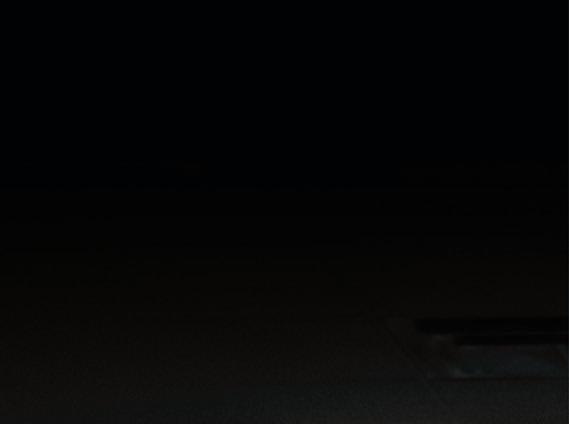








































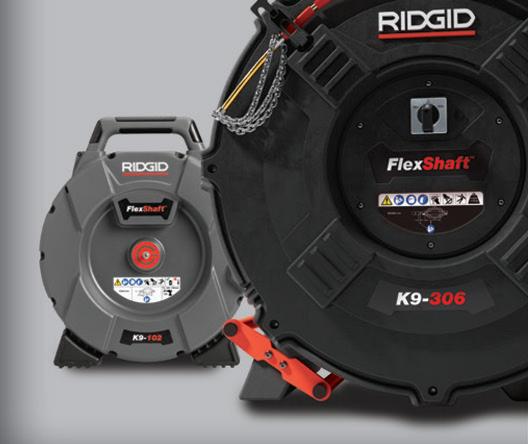

RIDGID® FlexShaft™ Machines are lightweight, portable and can be operated with your SeeSnake® inspection camera in the line while you run it. Combining steps gets you on the next job faster. See the tool that has the drain cleaning industry buzzing. MACHINES DELIVER WALL-TO-WALL CLEAN WITH ASTONISHING SPEED RIDGID.COM/FLEXSHAFT RIDGE TOOL UK c/o Emerson Electric UK Ltd, 2nd Floor Accurist House, 44 Baker Street, London, W1U 7AL T: +44 (0) 808 238 9869 UK, T: +353 1 800 936 397 Ireland, ridgid.gb@emerson.com
POWER TO THE NHS
FMJ AIMS TO SUPPORT TECHNICAL EXPERTISE IN THE FM MARKET

astair orris ie o ercia cer at o erstar escri es t e ro e o ta e re ation can a as art o a i er ener ana e ent strate or ea t care
works towards NHS net zero targets. A critical aspect of voltage reduction, and one which is highly beneficial to the NHS, is the protection that modern voltage reduction technology provides to vital equipment. Life expectancy of expensive and specialist kit is increased and maintenance costs reducedhelping with budgetary constraints and o ering longer-term carbon emission reduction through less frequent need for replacement.
While the benefits of a power resilience strategy are obvious within the context of large-scale hospitals, similar benefits are equally evident for smaller-scale and more locally focused NHS providers. One such practice is Widnes Health Care Resource Centre. Opened in 2006, the Centre and its infrastructure is relatively new and home to Oaks Place Surgery, a small GP practice that has been serving the people of Widnes for more than 30 years. The aim of the Centre is to promote and deliver e ective, comprehensive primary health care services, to the highest standards, within a friendly and supportive environment.
The NHS operates 24/7, every day of the year, and a stable and resilient power supply is critical across all aspects of the organisation and its facilities. The NHS is also committed to achieving an 80 per cent carbon emission reduction between 2028 and 2032, to reach net zero by 2040.
As part of a resilient power strategy for healthcare, voltage regulation can lead to real improvements. The National Grid is obliged to supply users with 230V power, but typically operates with a fluctuating voltage. To meet its statutory requirement, the Grid supplies a higher average voltage to compensate - around 245V. Most electrical equipment in the UK is designed to work at 220V and operating at a voltage higher than necessary can damage equipment and shorten its lifespan.
Traditionally, the problem has been solved through a solution that transforms the entire voltage to a site, but this is far from perfect as it leads to large losses. A modern alternative, and one which we have incorporated into more than 6,000 carbon reduction strategies, is a solution that transforms only the reduced voltage, meaning far
lower energy loss. Such technology can either o er a set level reduction for high but stable incoming voltage profiles, or dynamically regulate a fluctuating voltage profile to maintain a specified set level. Put simply, by lowering the incoming voltage, overall electricity consumption is reduced, which positively impacts on energy costs and carbon emissions.
Any technology implemented as part of a power resilience strategy within the NHS must be proven to be reliable and fully comply to the technical requirements and best practice guidelines laid out in relevant Health Technical Memoranda (HTM). As power disruption from the Grid is becoming an increasing problem for healthcare providers across the UK, voltage regulation can help organisations address this issue.
CASE STUDIES
Here, we look at how two NHS customers - a large teaching hospital and a smaller-scale health centrecut energy costs and reduce carbon emissions.

She ield Teaching Hospitals is one of the UK’s largest NHS Foundation Trusts,
employing more than 15,000 sta and caring for over a million patients each year across five hospitals and within the local community. Nearly 6,000 sta work at The Royal Hallamshire Hospital, in a wide variety of clinical and non-clinical roles. The hospital has around 850 beds for the care of inpatients, a minor injuries unit, and specialist outpatient clinics including a prosthetic eye department and ophthalmology centre.
While championing a ‘Be Green’ initiative, the Trust has to ensure that any measures implemented do not compromise power resilience. All energy saving initiatives in which the Trust invests must be tried, tested and o er a good ROI, and all technologies must be HTM compliant.
Following a comprehensive review of power usage on-site, Powerstar recommended implementing voltage regulation technology. The installation has achieved a 5.1 per cent saving in energy consumption, as well as a reduction in the power demand from the Grid of 11.57 per cent. The obvious benefits are a cut in energy costs as well as a reduction in the Trust’s carbon emissions as it
Powerstar installed a 226kVA voltage regulation system at the site. This has eliminated 46.8 tonnes of carbon dioxide each year, providing a net return on investment for the Centre in two years and three months. As part of an energy saving and carbon reduction strategy, this represents a 15.7 per cent reduction in overall energy consumption. In addition, as part of the requirement to reduce costs, annual savings on energy bills are £8,385.
The issues facing the management of NHS facilities are complex and, as the organisation continues to work towards its 2040 target for achieving net zero in the context of a global pandemic and a volatile energy market, these complexities are unlikely to ease. A successful power resilience strategy can help, enabling healthcare providers to ensure stable energy supply as well as reducing energy costs and protecting vital equipment.

FEBRUARY 2022 16 ADVICE & OPINION
FAST FACTS
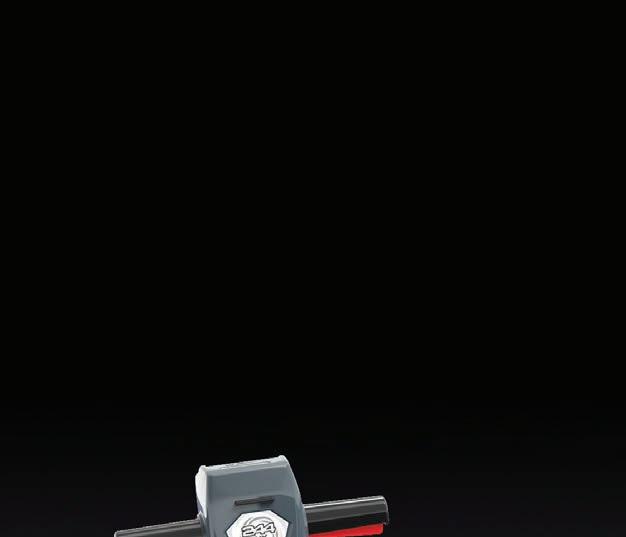
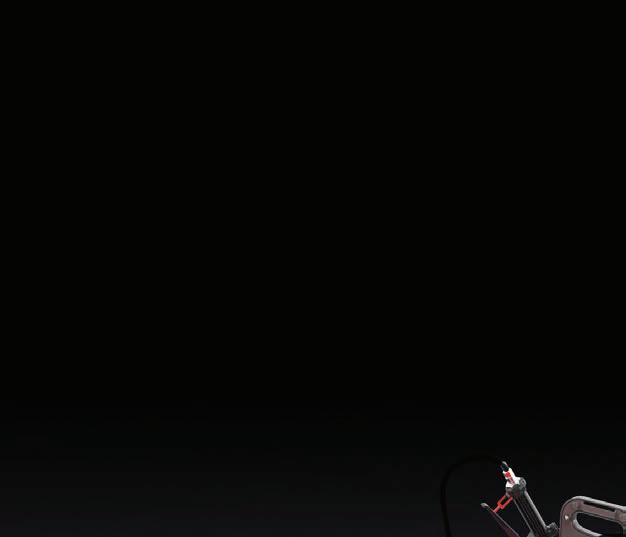

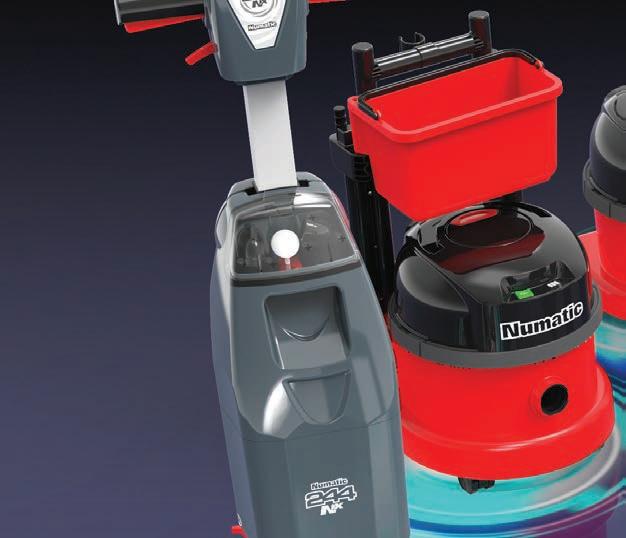

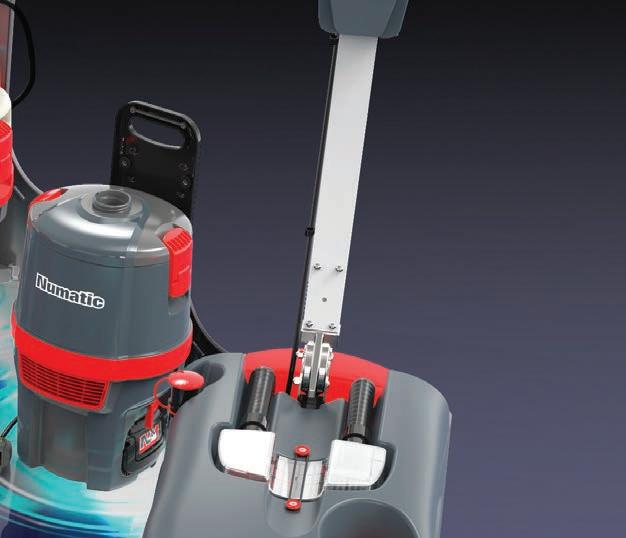
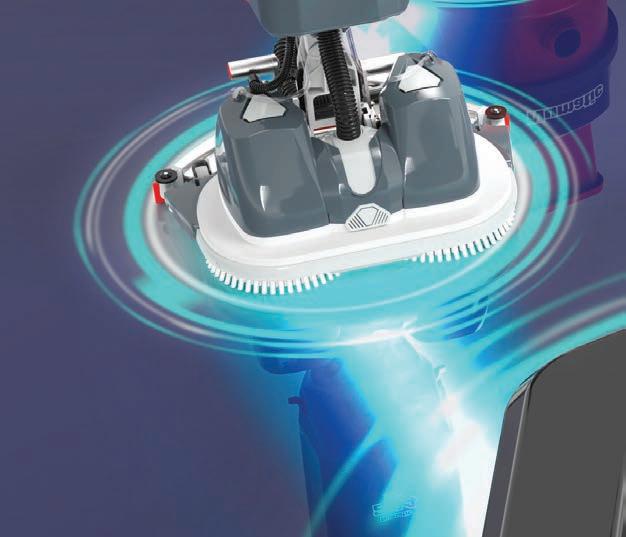

















NX300 Pro Cordless Network 36V Lithium Power, Fast Charge, One Fits All Power Driving Productivity numatic.com ©Numatic International Limited 2021. Specification subject to change without prior notice. Find out more: numatic.com/NX300
David Russell Head of People Workspace at Three https://bit.ly/3Hf7I2H At last we have today started our test and learn phase for our brand new HQ. It’s an amazing space with incredible digital touch points, but as always there is a real need to gather feedback and improve further. What is really interesting, is the wider change the company has made by contractually moving to hybrid working, so our people are supported and set-up for team collaborating, connecting and social contact.
@IWFM_Awards The #IWFMAwards2022 are now open! Don’t waste any time in starting your entries, putting yourself in the running to be celebrated for your incredible efforts. For entry tips, follow the link and start today! https://bit.ly/3o6MBrR
Coleen Cloherty Managing Director at Build Recruitment linkedin.com/in/coleen-cloherty02089b1 To accommodate our growing business needs, we have moved from Langdale House, SE1 1EN to Crowne House, SE1 1UN. All of our Business Sectors are experiencing high levels of demand which helped to create the urgent requirement for more space and headroom to grow our Business.
@Savills What does 2022 hold in store for flexible office space? The flexible #office sector is rebounding strongly after the challenging events of 2020, according to @work_there’s review of the sector. Find out what lies ahead for the sector here: http://savi.li/6013ZAsif
@Churchill_Group We are delighted to announce that we have been shortlisted in the @GoldenServAward’s Going The Extra Mile category - for businesses that went above and beyond during times of adversity. Our entry is for our Make Ready work with the @SCAS999
Andrew Brown https://bit.ly/3r7X9c7
Remember this? Back in 2011 (I think) I chose this cover for the FMX issue ahead of the Facilities Show. Anonymously these editors were asked for frank opinions on the #facilitiesmanagement sector that were on the money, provocative and caused some consternation. I wonder if the views might be the same now? And what might industry reaction be? #workplace #FM #editors #PR #IWFM #RICS #FMA
STRATEGY MANAGER, GRUNDON WASTE MANAGEMENT



THE IMPORTANCE OF CORRECT LITHIUM BATTERY DISPOSAL
From laptops to mobile phones, power tools to watches – batteries are at the beating heart of almost everything we touch. While the drive towards sustainability means batteries are now longer lasting and are more energy-e icient than ever, there always comes a time when they run out of ‘juice’ and need to be disposed of correctly and safely.
Statistics show that in the year between April 2019 and March 2020, lithium batteries alone were thought to be responsible for more than 250 fires at waste facilities. To put that into context, the figure is over a third (38 per cent) of all fires which took place.
While batteries of any kind should not be placed into normal mixed recycling or general waste bins; it is lithium-ion (larger rechargeable batteries) and lithium primary batteries (nonrechargeable, usually single-use button cells) which present the biggest challenge.
This concern is multiplied if they are damaged or not fully sealed and come into contact with water during the disposal process.
For example, if you dispose of a lithium battery in a general waste bin or bag which is then emptied into a skip or larger container; or straight into a waste collection vehicle; the potential for it to inadvertently come into contact with water is high.
It might be raining; there may be condensation forming; a half-full bottle may be crushed and leak onto other rubbish. Even the smallest amount of water, or water-based liquid, will be enough to ignite a damaged lithium battery. Not only is this highly dangerous, but if it happens during the transportation or recycling process, then the damage could be extensive and lives could be put at risk.
This was highlighted recently when a fire broke out in the trailer of one of our vehicles with a bulk load of non-recyclable waste en route to an Energy from Waste facility. Thankfully, the quick response of our driver and the swi actions of the Fire Brigade helped avert a major incident.
Investigations later identified that the source of ignition for the fire was a lithium-ion battery.
Safe disposal of lithium and lithium-ion batteries
To avoid a potential fire, lithium batteries must be separated from other waste and stored safely and securely, ready for collection by a reputable waste management company.
At Grundon, we o er two simple solutions:
• Our Haz-Box service is ideal for the safe temporary storage and onward disposal of all batteries, as well as other mixed hazardous waste. Lithium battery terminals must first be isolated by wrapping them in tape and then placed in a
separate container which fits inside the Haz-Box, ready for collection.
• Our lithium-ion battery drum kit is for the safe storage and disposal of damaged or expanding lithium-ion batteries. The kit contains a special purpose UN Certified drum containing fire protection granules which safely protect and cushion the battery against further damage, whilst also keeping it totally dry. With a clampdown lid, it can be placed outside in a safe and secure area ready for specialist collection. If a fire occurs in the drum, the granules will encase the battery, reducing the e ects and potentially extinguishing it.
Strict pre-acceptance and transport procedures
We also operate a strict Lithium Battery Disposal Acceptance Procedure requiring signed documentation to certify all the batteries are intact, and the terminals have been completely and securely covered.
The consignment will be collected by one of our ADR (Carriage of Dangerous Goods) trained drivers and taken to our specialist facilities for correct and safe disposal. Expanded or damaged lithium batteries will be transferred to our high temperature incinerator while undamaged batteries, including lithium batteries, will be consigned for specialist recycling.
How
FMs
can help


• Promote battery disposal awareness among employees
• Ensure your organisation has the correct disposal methods in place
• Separate lithium batteries and isolate the terminals by wrapping in tape
• Invest in secure disposal containers
• Dispose of unwanted batteries regularly to avoid large quantities building up
• Work with a qualified supplier
For advice and information on the correct disposal of batteries, speak to one of our experts
Tel: 01491 834 340 Email: hazardous@grundon.com
-
FEBRUARY 2022 18
SOCIAL
BLOG
RESOURCE
BLOG FROM OWEN GEORGE, DIVISIONAL COMMERCIAL &
ADVICE & OPINION
Owen George, Grundon Waste Management
BREATHE EASY




Clean, healthy air can be a challenge in poorly ventilated buildings and spaces. Our range of UVC air disinfection systems reduce the spread of viruses, bacteria and airborne pathogens, so that building users can breathe easy.


For more information and to request a FREE consultation on how UVC technology can help you please visit www.mitie.com/uvc-disinfection-system
Or contact us on ts.enquiries@mitie.com
In Partnership with

FM CLINIC
The CGA’s 2021 Contract Caterer Tracker(i) showed a 36 per cent drop in thirdquarter sales of food and beverages at work compared to pre-COVID. As contract catering continues to su er from a reduced footfall in workplaces, how can caterers and their FM clients maintain the supply of reliable and appealing food services to a hybrid workforce while still remaining competitive?
benefit is that we have been able to spec each dish, costed and nutritionally analysed to support the new laws coming in next year. Sales increased 60 per cent from the launch of the new o er. Latterly, we have adapted a hybrid style, opening a counter service due to the increase in building population.
The challenges on food prices and availability means we have had to look at things di erently so we are looking even more closely at seasonal produce, allowing us to mitigate the wider societal and supply chain challenges. We have experienced that more and more of our customers are taking their time over lunch,
THE CONTRACT CATERING PROVIDER’S VIEW




ANGUS
BRYDON, DIVISIONAL MANAGING DIRECTOR, BARTLETT MITCHELL.
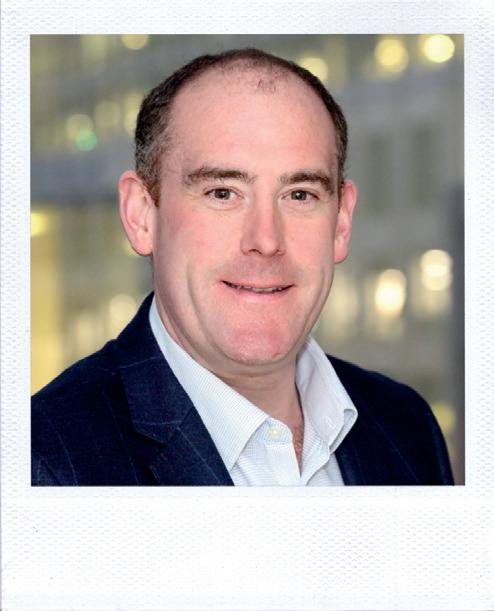
Since we have seen the numbers increasing at workplaces over the last few months, we have had to learn and adapt to suit the needs of each location. With such variability in the numbers attending our sites, we have to ensure that the food o er is appealing, whilst managing costs and ensuring we are responsible around wastage.
As each site is di erent, we have adapted our models to suit the needs of the clients. Some clients have now moved to a completely free issue model where we work to a food cost and, based on the numbers on site, we create an o ering that is both appealing to the customers and to the budget. This has been developed to reward those who have come back to the workplace.
Where we are still o ering the traditional restaurant service, we have had to adapt the o er to control costs and minimise wastage. One huge success in this area has been the launch of the our new ‘A La Carte; service in one law firm. Using app technology, we have created the high street in the sta restaurant. Customers order from a wide menu that changes monthly, with some specials more frequent, and collect within a 12-minute window from ordering. Pre-order is also available. The menu consists of six to eight main meals (including a signature dish), pizza, salad, soups, sandwiches and specials.
As workforces are now amending the days and times they work, menu fatigue has not been an issue and o en customers come back for their favourite within the month. The additional
reconnecting with their colleagues and so our food o er can be more bespoke and more made to order. Table service is also returning, reducing the need for queues and keeping social distancing in place.
One further area of success has been the use of pop ups. With the support from the clients, we have been creating an on demand o er with controlled number of portions to minimise wastage and to generate excitement and anticipation.
As we always do, we will work in partnership with our clients to tailor the o er to reach as many customers as possible, being mindful of sustainability, dietary preferences and budget requirements. There is not a one size fits all o er out there and all caterers must adapt, be flexible and above all act as the trusted advisor to the client.
THE FM CONSULTANT’S VIEW JULIAN FRIS, DIRECTOR, NELLER DAVIES
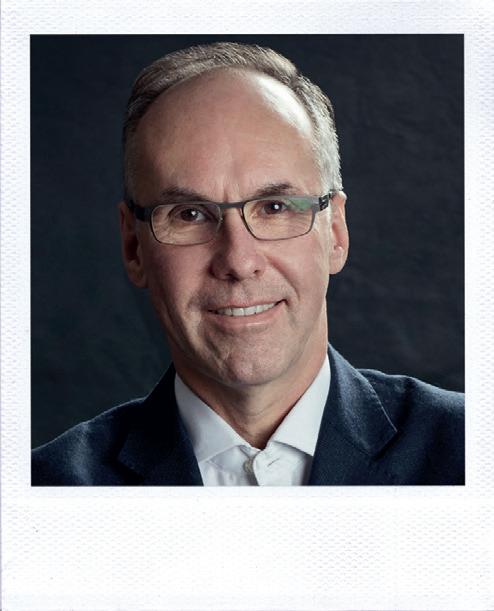
As we have come to realise, planning can o en be di icult in the current climate and ‘trends’ are di icult to predict.

Hybrid solutions are unsurprising given that, on average, people are venturing into the workplace three days a week with Wednesday being the peak day followed by Tuesdays and Thursdays. This will be significantly a ected if there are further lockdowns or increased restrictions, which are still a risk.
Many companies are using catering as a lure to get people

FEBRUARY 2022 20
Angus Brydon
ADVICE & OPINION
Julian Fris
In FMJ's regular monthly column, our team of FM experts answer your questions about the world of facilities management
back in with significant levels of discounting or even free food days (some or all). However, there is a challenge fulfilling requirements due to skills shortages in the industry. Many sta , particularly in London, are fuelling a rise in the importance of delivered-in services, such as Deliveroo, Uber Eats, and Just Eats, who have all captured a lot of ground, they don’t need expensive infrastructure, but o er significant choice from well-known brands.
Price point is also important at the moment, but customers like to exercise their right and don’t always opt for free food. A er 18 months or more of uncertainty and working from home they want to reengage with a hospitality experience. We also know that the high street has less choice these days and customers may be looking for more than another Pret or M&S sandwich. Leisure spend is rising although it is at highest risk of further COVID restrictions, but delivered-in services and meal kits have gained popularity as a result.
Given the events of the last year, we see that smaller businesses are seizing the agenda and employers are looking at catering as an incentive to bring staff back. For all caterers we see that good food service is essential and that all customers are the purchaser not the client.”

JulianFris
We have seen caterers with central production units or dark / cloud kitchens, (i.e. satellite kitchens) with highly e icient teams succeed, as we have the emergence of better-quality meals sold at valuefor-money prices. The skill sets are concentrated so quality is better controlled and it is easier to control, particularly with the introduction of Natasha’s Law, which requires all food outlets to provide full ingredient lists with clear allergen labelling on PrePacked for Direct Sale foods (PPDS). We know from NHS caterers, who have been using this technology for over 30 years, that chill and freeze is e icient, although only as good as the quality of what you put through the system.
We are also seeing some big companies struggling to adapt because of huge losses, failing supply chains, adverse payment days, sta shortages and poor credit ratings. We also anticipate failures and mergers and acquisitions in the future, which will further constrain the market and reduce choice. This does
however, present an opportunity for SMEs and social enterprises to get in on a Social Value ticket as they are more agile and not riven with debt and at the mercy of an aggressive hedge fund team. These are all major factors in creating the new catering models for the foreseeable future and ensuring that caterers are adapting to maintain engagement in their restaurants and food. It’s important to see more collaborative working in the future, particularly with regards to measures being put in place to see how a caterer can help increase a client’s retention rate, productivity, motivation and outcomes. New models will mean caterers need to be part of the solution, not just supplying into it.
caterer
We expect that client /supplier relationships will see risk being shared as more and more joined-up approaches are taken to profits and outcomes.
engage with food brands. Caterers will need to embrace sustainability, minimise wastage suppliers and look closely at cultural diversity.
We expect that client /supplier relationships will see risk being shared as more and more joined-up approaches are taken to profits and outcomes. The sustainability piece is likely to gather pace and play a key role in how consumers wish to engage with food brands. Caterers will need to embrace sustainability, minimise wastage causation, attract small and local businesses/ suppliers and look closely at cultural diversity. These are all strong di erentiators for consumers. No longer is ‘just’ good food a driver. Consumers want to know the social credentials of brands before they buy. Supply chain challenges can and are being addressed through smarter menu planning, which is important in the current climate. Given the events of the last year, we see that smaller businesses are seizing the agenda and employers are looking at catering as an incentive to bring sta back. For all caterers we see that good food service is essential and that all customers are the purchaser not the client. Provide the quality meals at a sensible price and the customers will drive down costs naturally.
THE RETAIL CATERING PROVIDER’S VIEW JOSIE TOWNING, FOOD AND BEVERAGE RETAIL
























TRINITY LEEDS RETAIL TEAM, MITIE
MANAGER,
As we are nearing two years of intermittent COVID-19 restrictions in varying degrees it is clear that consumer habits have changed in approach to shopping, eating out and leisure activities. There
FEBRUARY 2022 21 FMJ.CO.UK FM CLINIC
ADVICE & OPINION
has been a huge shi towards home working, with some barely returning to the o ice and a large percentage adopting a hybrid working model. Many of us have become accustomed to the new normal with a change in daily routine such as shopping local and supporting independent businesses. Alongside this, much of the population has adapted to having a little more personal space when eating out or wearing masks in public, thanks to the vast range of COVID-19 protocols.
Josie Towning

However, the pandemic brought a great opportunity for traders among the street food community. Vendors across the UK demonstrated their entrepreneurial approach to street food, by parking up in residential spaces, which quite o en sat outside of any delivery platforms radius, and feeding locals with good, honest food, all cooked up with genuine enthusiasm and passion.
Whilst the pandemic brought its own challenges for the industry, most managed to adapt to the new times and continue trading by diversifying their o er through delivery platforms or chilled/frozen meals. When many workforces returned ahead of relaxation of dining restrictions, workplace canteens and cafes were still not easily accessible, many contract caterers struggled to adapt to the intermittent footfall and therefore did not reopen until restrictions fully relaxed in the summer. During this time, business parks and o ices started to see street food vans parking in the vicinity, giving customers the chance to shop local and support local vendors.
This concept of street food trucks in place of contract catering or canteens has remained for many businesses who are leading the way. A few examples are The National Theatre at Southbank, London in collaboration with KERB, universities such as Leeds Beckett University in collaboration with local street food vendors and even pubs who closed down their kitchens to begin trading from shipping containers or food trucks in their beer gardens. The success of outdoor dining showed us that consumers are happy to buy from food trucks at all times of the year and even dine outside if they have to.
The change in consumer habits as a result of COVID-19 could be the catalyst for change in traditional contract catering. It may show a way to either integrate small food truck businesses into their catering options for diversity and a competitive edge, or use this proven and reliable concept of food trucks and outdoor kitchens to further utilise indoor space that a traditional contract caterer would occupy.
Some big names in contract catering have recently turned their hand to street food, showcasing their talents in the Contract Catering Magazine Street Food awards with winning chefs from Sodexo, Blue Apple Catering and The Pantry. A great collaboration between the two industries and possibly a sign of things to come in the contract catering sector.
THE HOSPITALITY SPECIALIST’S VIEW
RONAN HARTE, CEO, BAXTERSTOREY

We hope that the current guidance from the Government to work from home is just a bump in the road and, as soon as we are over it, we can return to the new normality we were working with within the workplace catering sector. The reality of the situation is that the economy needs to keep moving so we expect there to be a message encouraging people to return to the o ice wherever possible.
That, coupled with the fact that we have seen a real drive from employers to get their teams back into the workplace, means that we are likely to see more incremental rises in volume back in o ice as 2022 progresses.
Since the lockdowns have been li ed, sales in our contracts have been stronger as each week passes. Consumer confidence is growing and we were seeing some really positive moves from clients who were increasingly viewing catering as an important part of their business success.
Outside of London has been strong throughout but the seismic shi s were being seen across the capital too. A lot of what we do enhances productivity and collaboration, and clients are seeing this too. As part of the new dynamics at play, consumers are not just looking for good food, but the manner in which this is served/delivered is also a vital part of the mix. We have successfully deployed elements of tech to enhance the user experience, and really tapped into click and collect, prepay and pre-order services.
We’ve also seen a real desire from guests to sit in and enjoy our restaurant spaces. These are now not only seen as places where they can enjoy food they wouldn’t be able to have at home, but also environments where they can collaborate and socialise with colleagues. This has, to some degree, o ered a sense of normality for many.
By focussing on the visual element of our food and restaurants, we have seen how a good dining operation can act as a central hub for any organisation. We are essentially the heartbeat of any business.
This has been evident in the increased introduction of free issue and discounted food. Clients are investing more into their catering o er. This has meant that caterers have been in a position to invest even more in training, food development and technology.
Despite the obvious challenges the pandemic has brought, I believe that catering in the workplace has benefitted from recent events and is now regarded as a key di erentiator for employers. Given the hybrid approach taken by some businesses, we are also seeing the continued success of our ‘BaxterStorey at Home’ product which enables employees to enjoy our food away from the workplace and on the day’s they are not at the o ice.
Ultimately, what we hope to come out of the di iculties is a removal of the idea that there is a race to the bottom as far as contract value is concerned. Clients are recognising the importance of catering more than ever and we are pleased to see some fantastic examples of collaboration where both the client and supplier are working towards each other’s mutual interests.
I’m hopeful that the days of supplier taking most of the risk has passed and we are in a place where we are all continuing to work together to ensure that value is achieved across the board.
(i) https://cgastrategy.com/contract-caterers-third-quarter-sales-upyear-on-year-but-significantly-lag-pre-COVID-levels/



Email: sara.bean@kpmmedia.co.uk

FEBRUARY 2022 22
Do you have a question that you’d like answered by the FMJ Clinic?
FM CLINIC
Ronan Harte
ADVICE & OPINION
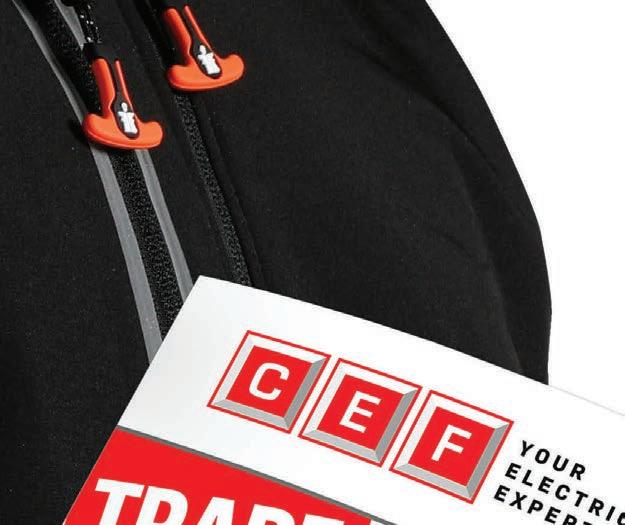




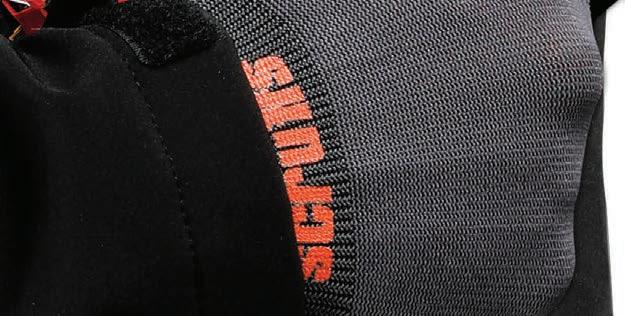



















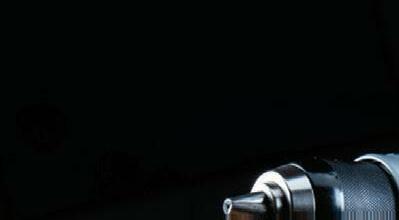














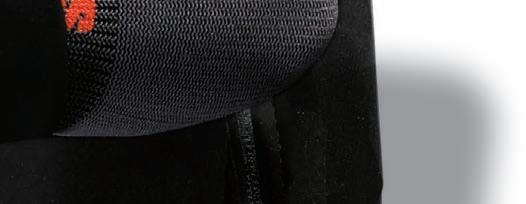

NEWFOR 2022 DEALS HURRY! OFFERS END 28TH FEBRUARY Details on page 4 PAPER 18V XR BRUSHLESS 2 SPEED COMPACT COMBI DRILL INSIDE PLUS! SAVE OVER 20% UNMISSABLE DEAL SAVE OVER 20% .95 £89+VAT ONLY REGULARPRICE .25 £117+VAT 2672-6725 .95 £169+VAT ONLY 2695-3288 DON’T MISS OUT .50 £28+VAT 2379-6394 REGULARPRICE .50£42+VAT ONLY 1671-7060 .95 +VAT £9 2635-0390 ONLY NEW CEF CATALOGUE 100s of new products now available PLUS! NEW DEALS PAPER Packed with electrifying offers CHECK THEM OUT NOW GRAB YOUR COPIES IN-STORE IN-STORE | CEF.CO.UK | TRADE CATALOGUE | APP
AUTOMATIC CHOICE
The disruption of COVID and the a ermath of Brexit has led to a recruitment and retention crisis within the hospitality and foodservice sector. Figures from consultancy CGA suggest that that one in six (16 per cent) hospitality jobs now remain vacant. For those in contract catering there are the additional challenges of fulfilling the food service needs of a hybrid workforce, where regular demand patterns are no longer guaranteed. This, in turn makes it more di icult to reduce food waste.
Given these challenges, the news last autumn of a revolutionary new foodservice o ering at Ocado’s headquarters which aims to address these issues caused quite a stir in the FM sector. Semblr, the world’s leading foodservice robot has been installed to serve fresh, personalised lunches to the 4,000 employees at Ocado’s head o ice. It’s the result of a partnership between facilities management services company Atalian Servest and Karakuri, a world-leading food robotics start up.
Karakuri’s CEO and Co-Founder Barney Wragg, a leading Technologist and Digital Strategist began looking into foodservice automation in 2017, a er restaurant owning friends asked him for advice.
He recalls: “I was shocked at how labour and people intensive running a restaurant or foodservice operation was, and being an engineer with a technical background I was surprised how little data there was to help run those businesses. I wondered if we could solve some of the pressure points in information on food kitchens and preparation by applying the same sort of automation used in other industries. When you start to think about electronics manufacturing or automotive they’ve gone from the very basic Henry Ford production line to automated systems.
“In 2018 we started to research the art of the possible. With the help of the Founders Factory investment incubator we looked at di erent tasks within the hospitality sector, for instance, those operating central London ‘grab and go’ type stores that service a growing trend for healthier o erings. That set us o on looking at how we might create
a business that would handle, serve and manipulate food from the kitchen.”
Ocado, which is already involved in all aspects of the food industry, from vertical farming through to home delivery and grocery, expressed an interest in investing in the business. In 2019 they led a seed investment round and as part of their investment were keen to have a prototype system installed.
Says Wragg: “Ocado see a use for automation in a multitude of places, from grab and go through to FM and corporate catering, and from ordering a fully finished meal or the components of a meal further down the line. They wanted one of our first
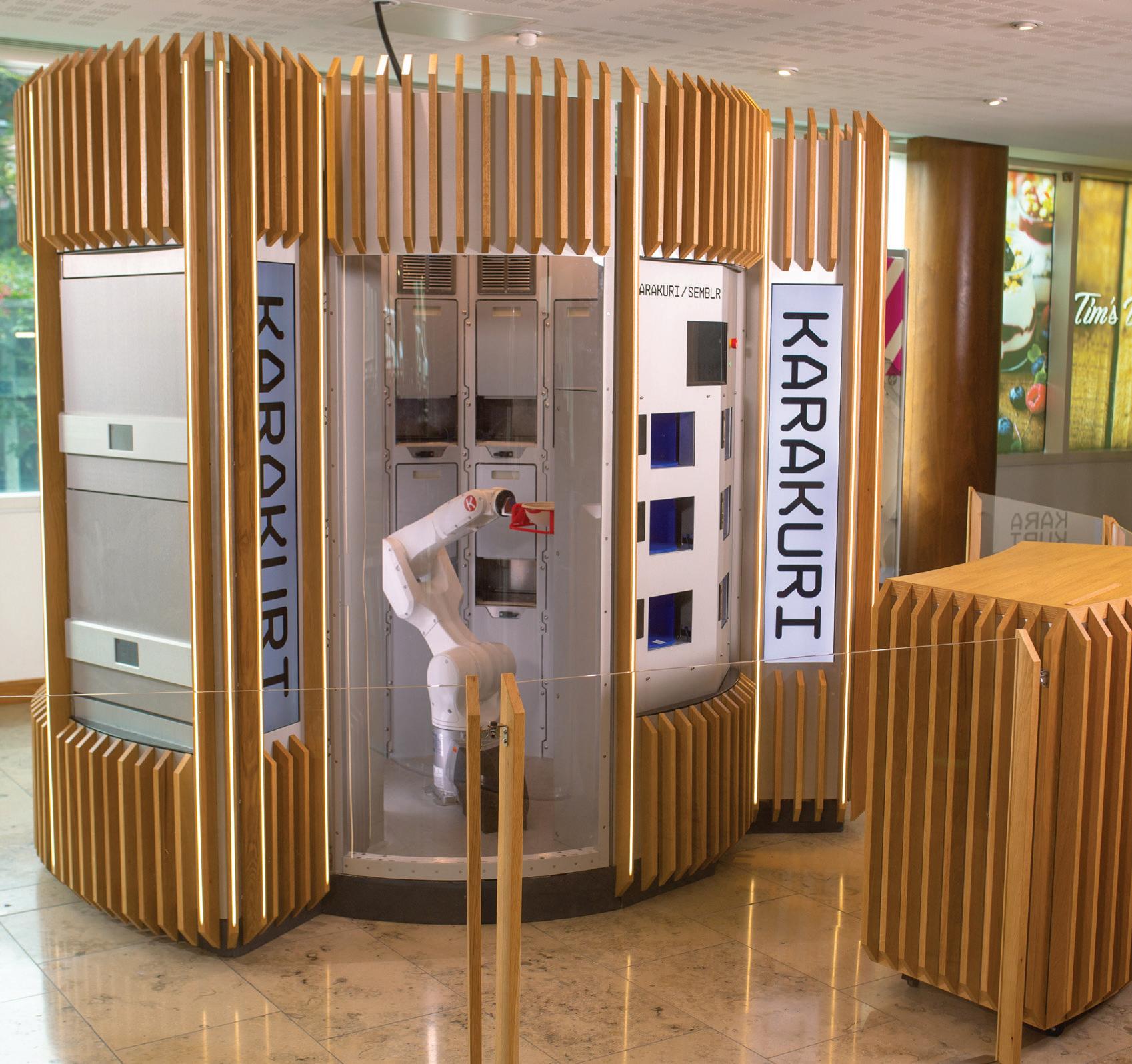
DEPLOYMENT OF SEMBLR
The logical place for deployment was Ocado’s own head o ice sta restaurant, run by Angel Hill Food Co, the specialist corporate catering division of Atalian Servest. The aim was to give the customer an unparalleled choice in what goes into their meals. With 2,700 di erent combinations of the dishes on o er, sta could specify down to the gram what hot and cold items, proteins, sauces and fresh toppings they wanted, something that is simply not possible in traditional restaurants and
FEBRUARY 2022 24 CASE STUDY FOOD SERVICE
machines to be installed in their place of work as a demonstrator.”
e insta ation o oo ser ice ro otics ser in res ersona ise ea s to ca o staff is t e res t o a coor inate effort et een oo ro otics start ara ri an ta ian er est i ont s into t e ro ect e isco er o it s oin
commercial catering.
Getting the project o the ground says Atalian Servest’s Chef Director Chris Ince, required a huge team e ort between caterers and engineers to complete a ‘fit for purpose’ o er.
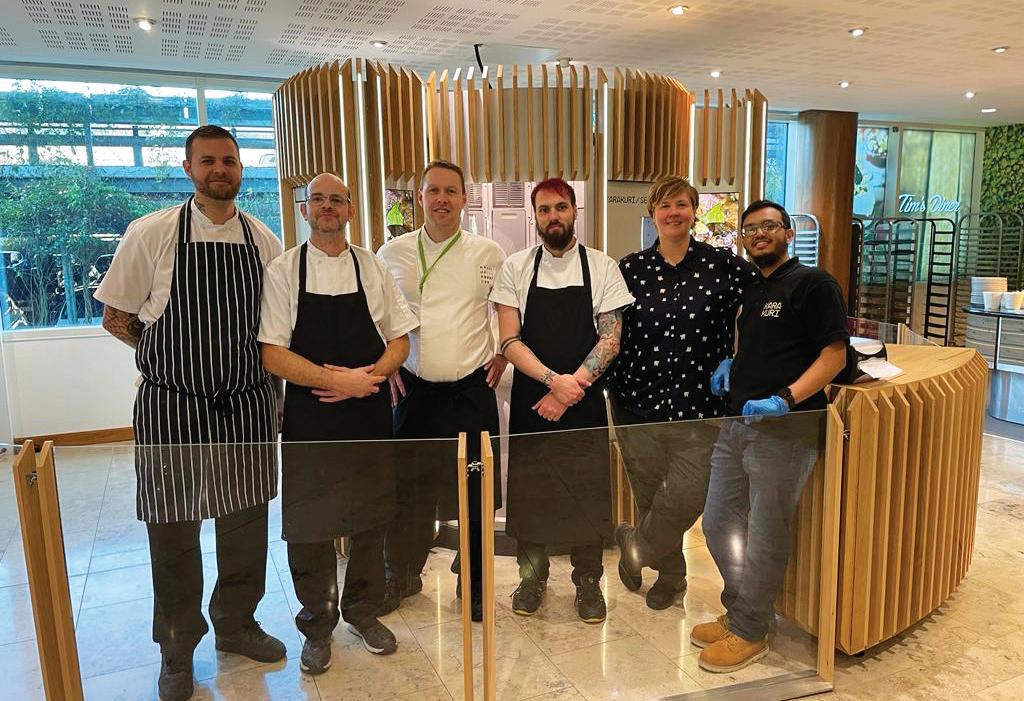
“Let’s face it we had some chefs and some engineers where there hasn’t been a lot of interaction before now so in the first few weeks we were dancing around each other, but it’s now very smooth and easy and the key point is there is a lot of trust there.
“Our job was to ensure we reduced the possibility of customer error, for instance if you’re customising your own bowl you don’t want a range of conflicting ingredients, it all has to run on a theme and be coherent, and so there was an extensive testing process with the team to ensure the ingredients we wanted to put in would hang together.
“For us it’s fantastically exciting and a radically di erent service from what came before. What the machine does is extraordinary and where it is breaking new ground is that the range of products and the ability to customise your lunch is almost limitless. It’s sparked new lines of thinking, new thought processes, it’s been very stimulating, it’s been motivating and we’re absolutely delighted.”
Says Wragg: “Chris and his team have been fantastic at working with us on what kind of menu we should have, what works with the type of proposition we have, and using what Atalian Servest knows about sta eating habits and how we can do it at a price that works. Their expertise on everything from compliance issues to health and safety took us from the concept stage right through to onsite, serving meals every day.”
With this kind of complex installation, Wragg reveals in the early days a large engineering team was deployed to ‘superservice’ the robot. The onsite team has been reduced in recent months to one full time support person and two interns, which he admits: “is overkill but this is our prototype and we want to support Atalian Servest. In the long term a machine like this would probably be working with one member of sta back of house and portering and one member of sta running the customer interface.”
For his part Ince explains that from the back of house perspective serving food via a robot requires a di erent kind of approach. For instance, instead of humans providing direct customer service they’re instead loading ingredients into a robot, but he reveals: “the process has been successfully weaved into the production plan for the kitchen, just with a few di erent agreed
parameters and cooking methods.”
He also points out that because the Semblr produces personalised hot and cold meals, it delivers complete accuracy of portion size, and given concerns about issues such as food allergies etc, a ords total traceability of ingredients.
“One of the benefits is at the point of service everything is segregated so
“ or s it s antastica e citin an a ra ica ifferent ser ice ro at ca e e ore at t e ac ine oes is e traor inar an ere it is rea in ne ro n is t at t e ran e o ro cts an t e a i it to c sto ise o r nc is a ost i it ess ”
there is no danger of cross contamination whereas in a traditional service there is potential for error.”
DATA GATHERING
One of the most innovative features of the robot is the use of AI to enable predictionbased service, with the end goal being that when there are hundreds of these machines installed in di erent sites you can aggregate the data and map it against things like weather forecasts, tra ic analysis, the day of the month/week, where it is in the year, and in doing so understand the food demand patterns.
Explains Wragg: “In this way you can forecast out what you’re likely to need to make in the kitchen and order the ingredients in advance that support that, based on large volumes of data that you are intelligently filtering in order to plan forward.”
For customers the ordering process is via similar QR based app system we’ve all got used to in pubs and restaurants during the pandemic. Throughout the Ocado o ices there are QR codes for sta to pre-order for ‘click and collect’ – enabling them to order their meal and nominate the time they want to collect it.
Says Wragg: “What that means is by around 11 to 11.30 each day we pretty much know the exact quantity of everything we’re going to sell that day, so if we know we’ve got a quiet day we can pass that back to the catering team. We also get feedback from customers in real-time on every order that comes through and that’s already led us to devise a new menu from the feedback that

FEBRUARY 2022 25 FMJ.CO.UK FOOD SERVICE CASE STUDY
we’ve gathered from September to midDecember.”
Adds Ince: “Where that helps us from a back of house perspective is that we know by half past 11 what’s happening and as we would do with any service we batch cook so with the robot, what we don’t need we don’t prep.”
FEEDBACK AND FUTURE
Although yet another COVID crisis that prompted a Government directive to work from home where possible, hit phase one of the project, the deployment and feedback on the system has been very successful reports Wragg.
“From our point of view, this has been a true partnership in working with the team at AS to solve any issues. It’s been a real collaboration too with Ocado who have been really supportive, right down to including updates on their sta bulletin boards, and their team are giving us the most useful feedback.
“It’s always very interesting to find out what people really like, and by o ering a meal you can specify hasn’t really been done like this before, so we have the belief that [the system] is what people wanted. It’s been a delight to see repeat customers coming in, and they really like the fact they can be specific about what is in their meal.
Also, people love being able not to wait or queue in a work environment and with the pandemic, it’s given sta that extra feeling of safety.”
The next three months is about improving the proposition including tweaking the menu and changing how the ordering works, (which includes the appointment of a specialist third party app developer) and constantly looking at gathering statistics to improve the e iciency of the working environment.
Says Wragg: “We plan to continue to super service everything as currently we’ve two orthogonal groups of people from catering and engineering so we want to have a lot of slack in the system, while gathering statistics to help get e iciency up and the working processes down to the minimum level of support. This all while giving the catering team more and more insight and data to make the preparation and ordering process more e icient.”
For the Atalian Servest side, with the team now confident in serving food through the robot the aim is to increase customer choice by exploring the technological capabilities.

Says Ince: “We’ll now introduce new items which will give healthier options, more complex carbs, refresh the proteins and o er di erent flavours, as there’s a whole
new world of possibility in customising food for our customers. Contract catering is not the high street as we see the same people every day, so menu fatigue is something we have to avoid. That’s why we’ll aim to keep everything, fresh, exciting and help people make the choices they want.”
He concludes: “For us it’s been a huge learning curve and we’ve had conversations on how to approach it, particularly in dealing with brand new tech, but the service sta and chefs have embraced it. We’re here to give customers what they want, and when we see people every day saying they’re getting exactly what they need, the team are standing a foot taller. They know they’re at the forefront of something quite remarkable that doesn’t exist anywhere else.”
For FMs who wonder if this level of innovation is something which will catch on in foodservice, Wragg believes it o ers a viable solution to all the many challenges facing the foodservice sector.
“You’ve heard of ‘so ware as a service’, but there’s a new term, ‘robotics as a service’. We work on that model. See the tasks that need doing, look at where there is an opportunity and the value that we can bring in helping fulfil a task that you’d normally hire people to do. That helps establish whether there is a cost saving in waste reduction and performance increase, and what that means in a like for like Opex basis. Ultimately, I believe that is why it is an attractive and straightforward reason to migrate over to use our technology.”
www.atalianservest.co.uk/ https://karakuri.com/ https://vimeo.com/609934840
FEBRUARY 2022 26 CASE STUDY FOOD SERVICE
t s a a s er interestin to n o t at eo e rea i e an offerin a ea o can s eci asn t rea een one i e t is e ore so e a e t e e ie t at t e s ste is at eo e ante ”
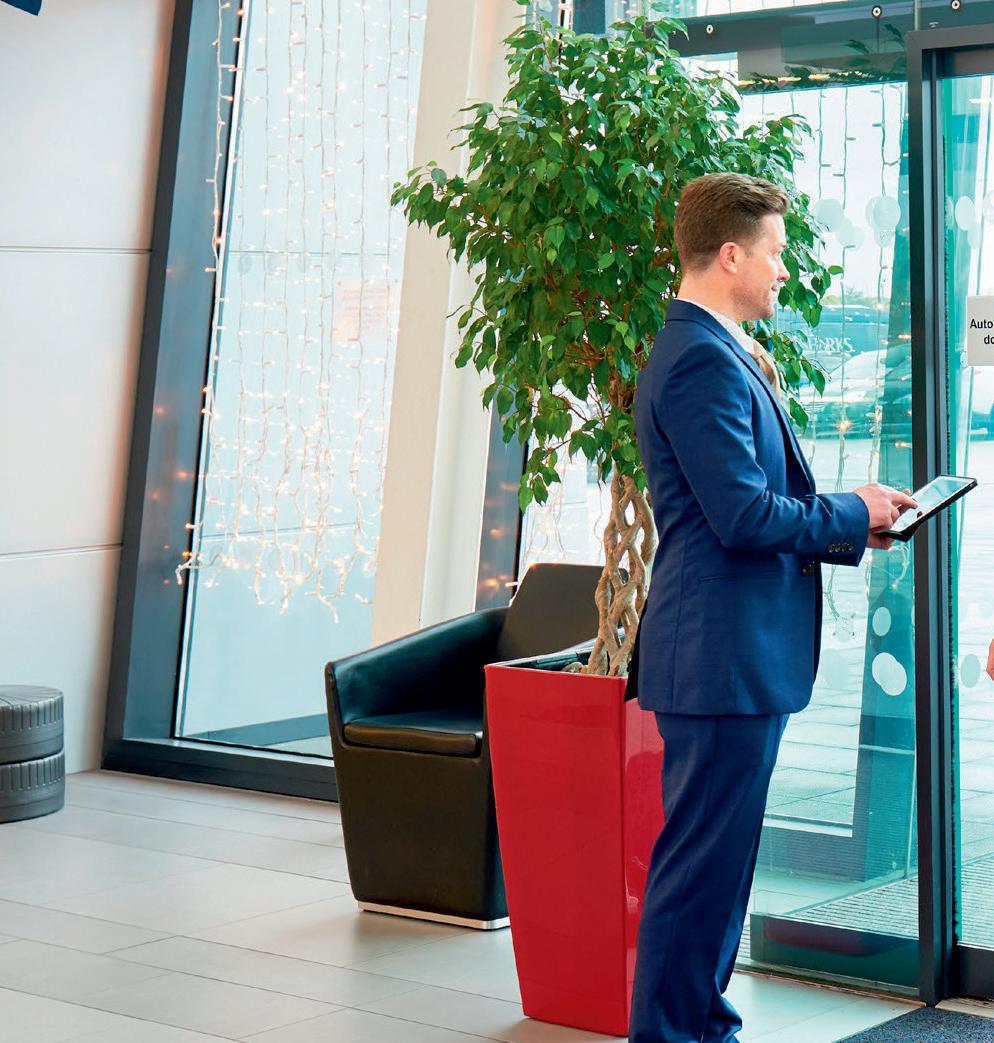




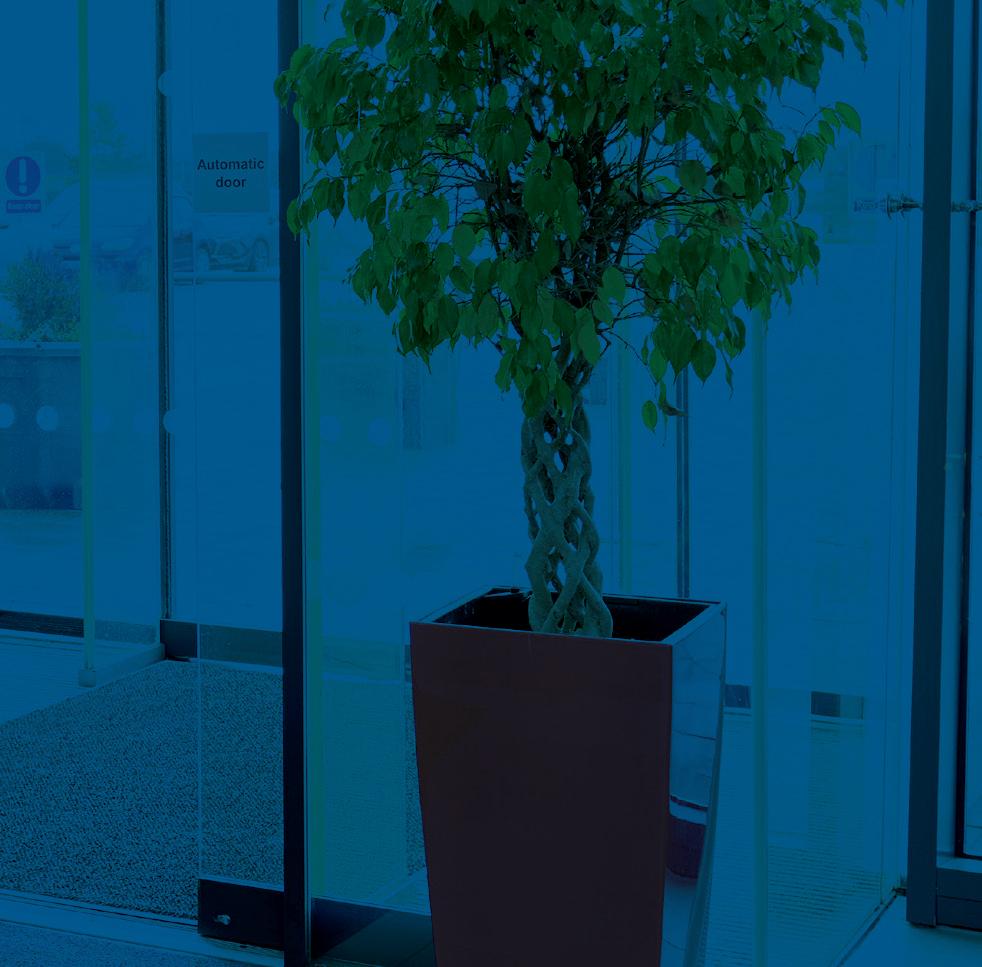

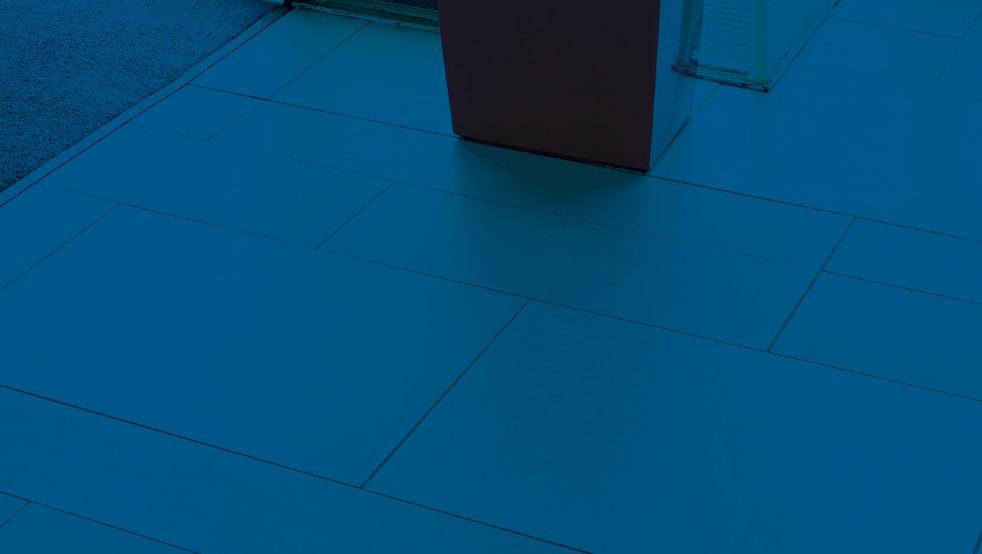

With more than 50 years experience in mat production and innovation, Kleen-Tex provides a wide range of products to reduce dirt and moisture from entering your premises. þ Keep dirt and moisture at bay þ Reduce slip hazards þ Cut cleaning costs MAKE MORE OF YOUR FLOOR For more information: +44 (0)1204 705070 www.kleen-tex.co.uk info@kleen-tex.co.uk FACILITIES MANAGEMENT JOURNAL JOBS Looking for a new job in the Facilities Management industry? Wide range of job listings Salary surveysJob alertsCareer advice Please visit our brand new job board which is specifically catered for Facilities Management & associated industry professionals – your next career move could be only a click away! Featured Recruiters: jobs.fmj.co.uk Find your next role online with FMJ Jobs Visit jobs.fmj.co.uk for hundreds of roles in FM and associated industries Looking for a new job in Facilities Management? jobs.fmj.co.uk
IMPACTFUL AIR FILTRATION ON DEMAND
WHAT IS AIR FILTRATION?
While environmental decontamination and hand hygiene are universally recognised to reduce the risk of infections and keep people safe, adequate ventilation is vital for ensuring the air within workplaces & shared spaces is safe. Aerosols and droplets carry infectious microorganisms in the air that spread infections within poorly ventilated spaces. There is also the risk of particulates and odours triggering allergies or discomfort.
Viruses like Influenza, Norovirus and Coronaviruses can spread through the air via droplets and aerosols (which are released when talking, coughing or sneezing), potentially infecting other people or landing on and contaminating surfaces. E ective air filtration devices such as Rediair can help remove these microorganisms and particulates from the air, using specialised filters known as HEPA filters. Air filtration devices draw the air through the machine, trap the pollutants within the HEPA filters and blow clean air back into the room, significantly increasing the air quality.
BENEFITS OF AIR FILTRATION


Using portable HEPA filters can reduce the risk of inhaling viable pathogens within a poorly ventilated area. Unlike traditional air filtration systems found in shared spaces, portable air filtration devices give you the flexibility to provide clean air where & when you need it.

Air filtration devices can capture a variety of contaminants such as:
Airborne pathogens (bacteria, fungi & viral aerosols)
Fine and ultra-fine particles Dust
Pet dander
AIR FILTRATION IN THE WORKPLACE
In recent years, presenteeism has become an issue for industries worldwide. In the past, illnesses would a ect the workplace as sta would stay home, lowering productivity and staggering the pace of businesses and institutions.
However, in today’s world, people are turning up to work sick, which risks spreading infections and posing more of a risk to the people we work alongside. The increase of presenteeism makes good ventilation more of a necessity than ever before. On top of this, COVID-19 variants like Delta & Omicron are prominent, so having e ective air filtration within your workspace can help reduce the number of microorganisms in the air, contributing to a cleaner working environment.
REDIAIR

Designed by an infection prevention expert, Rediair is a portable air purification device that captures 99.995% of particles as small as 0.3µm. Rediair’s core consists of two HEPA 14 carbon filters that are 10x more e ective than HEPA 13 filters (the market standard).
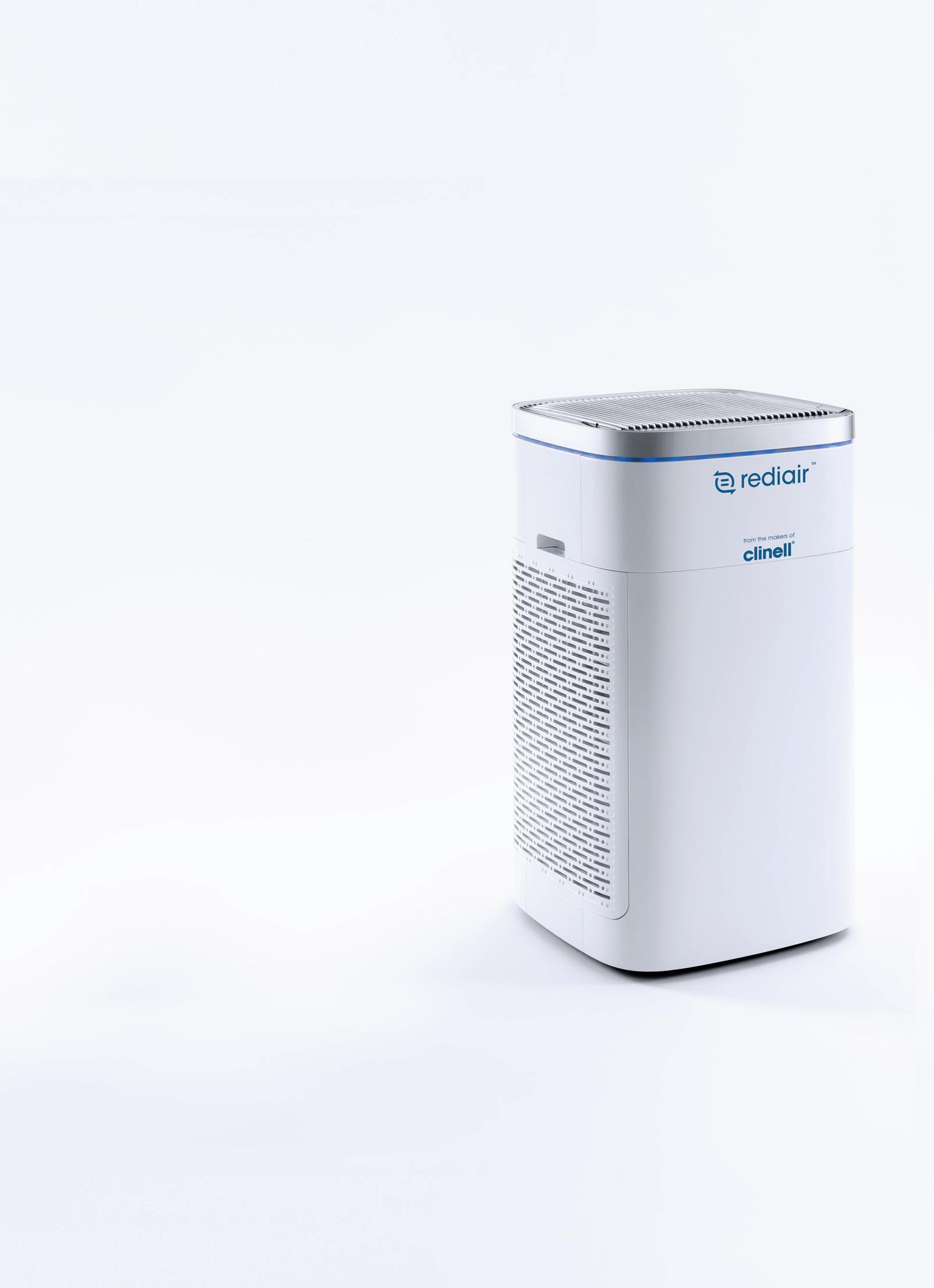
The nylon pre-filters, composite carbon cloth and HEPA 14 filters capture particulates, expelling purified air back into the room, providing up to 5 air changes an hour within a space up to 120m3. Rediair’s four di erent operating modes and a small form factor allow Rediair to be used almost anywhere, from waiting rooms, o ices and meeting rooms to small, enclosed spaces like dental treatment rooms.
Rediair is an incredibly subtle air filtration device; ultra-quiet fans and light reduction settings mean that Rediair can operate without distraction. While the internal mechanisms are complex, using Rediair is quite the opposite. The smart air quality indicator can read the quality of the surrounding air and start decontamination within seconds of activation.
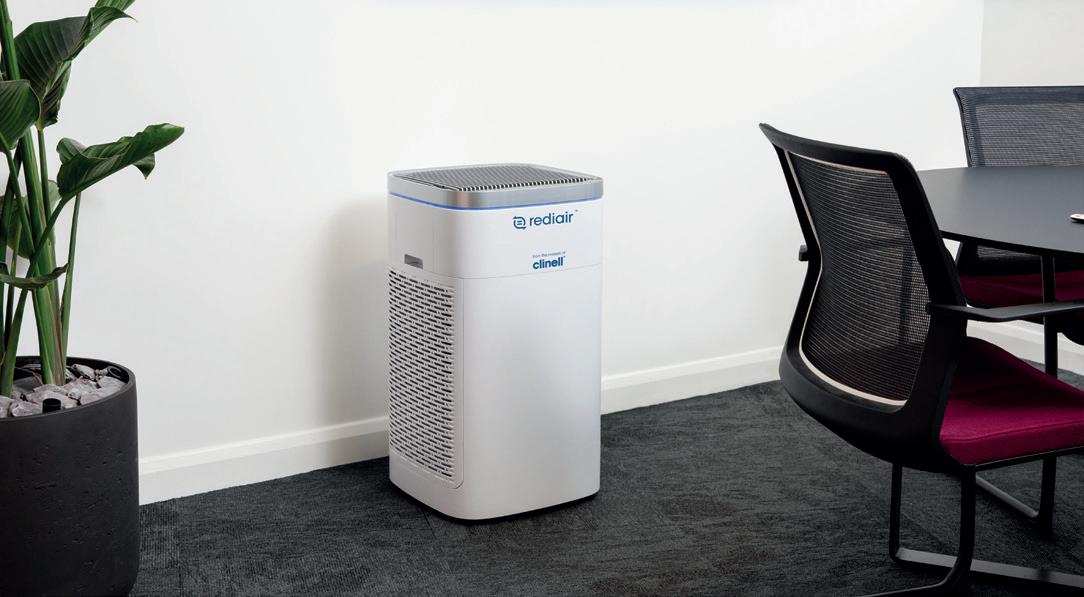
For more information on Rediair, visit our website
FEBRUARY 2022 28 FOCUS SPONSORED FEATURE
www.gamahealthcare.com/rediair
Mites Odours


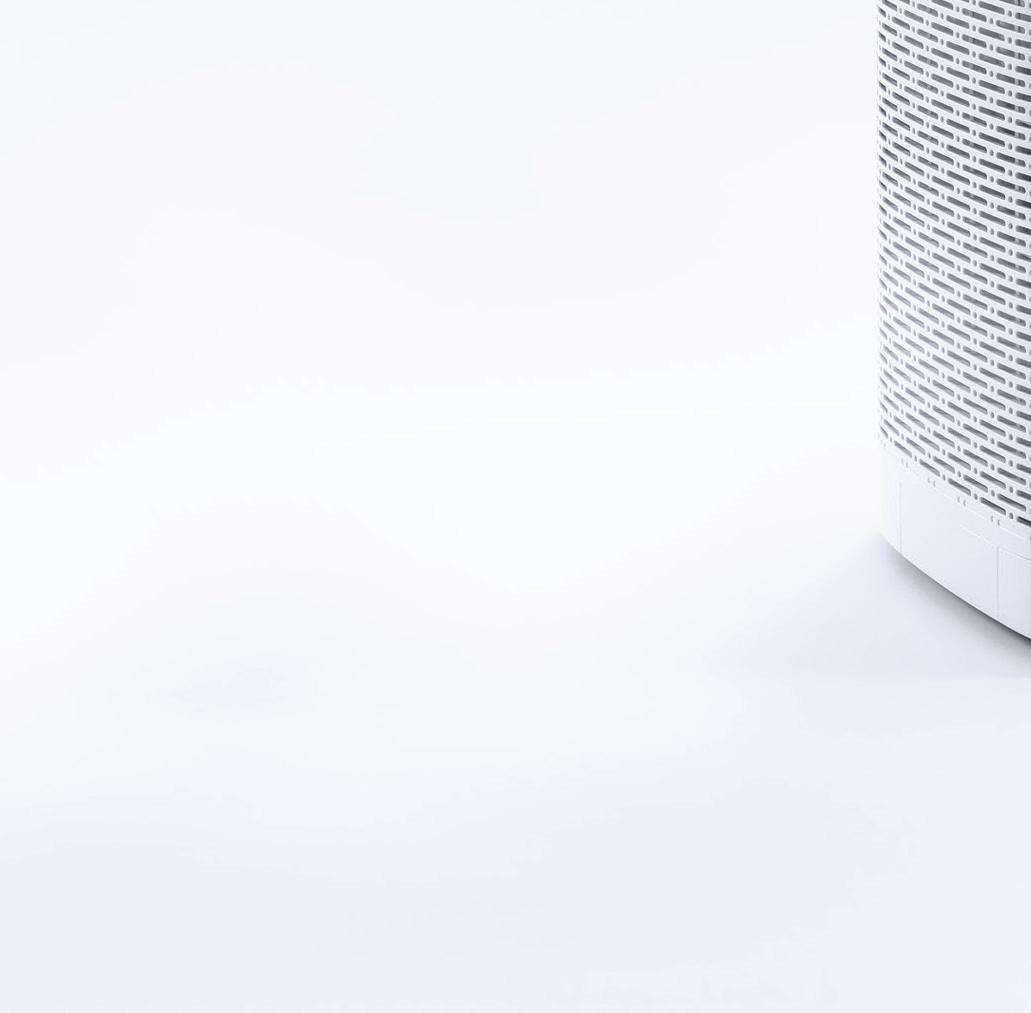






WISE COUNSEL
In the two long years since the COVID-19 outbreak we’ve been bombarded with conflicting opinions on the role of the o ice post-pandemic and the repercussions for the workplace of hybrid working. Throughout this period the British Council for O ices (BCO)(i) has produced a range of useful reports directed at FMs, workplace managers and designers who crave clear, evidencebased guidance.
The BCO engages a number of committees
made up of BCO members from all aspects of the commercial property industry to conduct this research, alongside its other areas of interest that include the di erent regions of the country, running an awards programme and promoting the next generation of workplace experts.
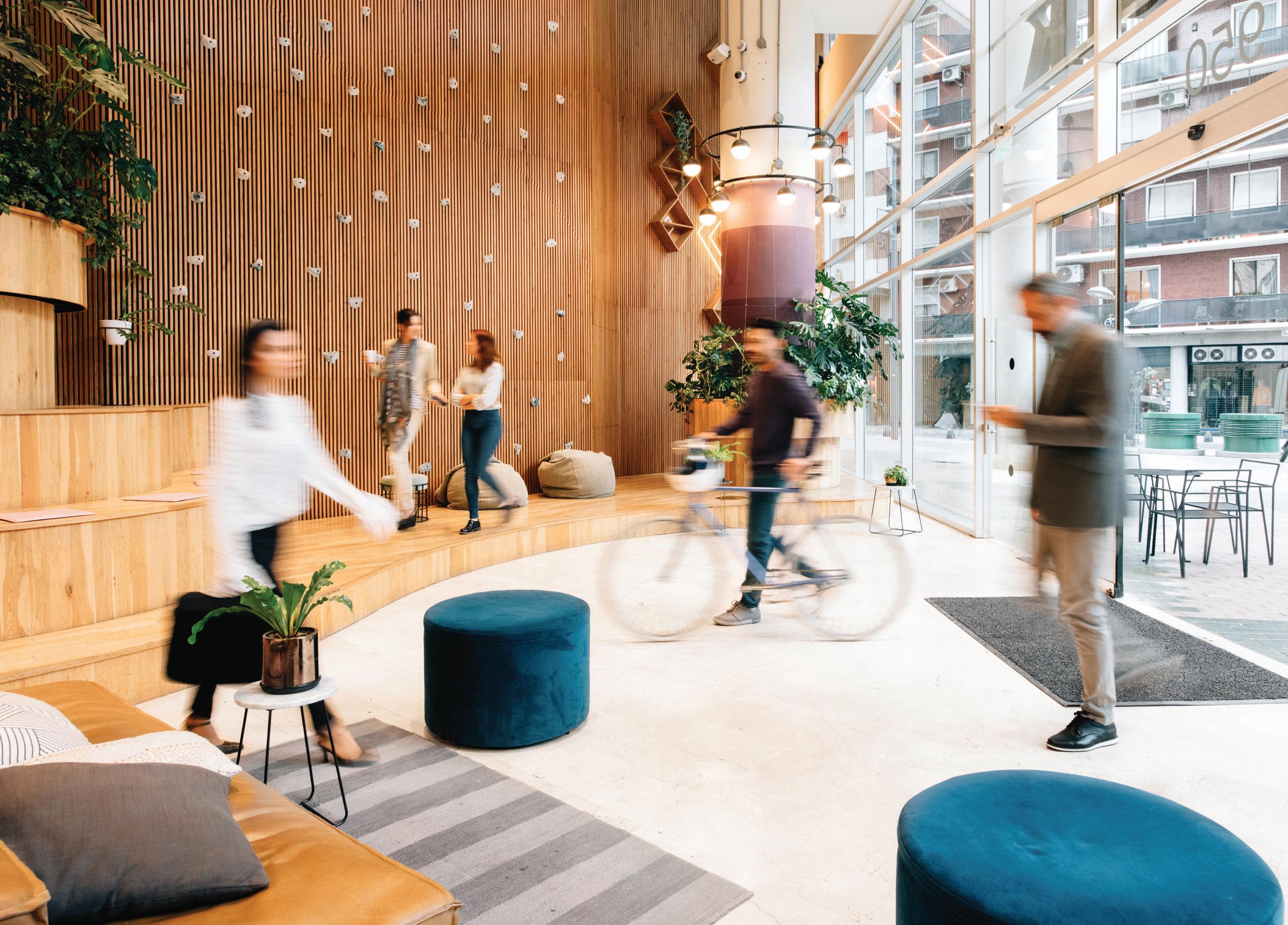
While some of its most recent research focuses on COVID-related issues, including the future of the o ice in the post-pandemic work environment and COVID-related design changes to o ice buildings, other
important topics such as sustainability and technology also feature.
Explains Alexi Marmot, Professor Emerita of Facility and Environment Management at UCL and a BCO Research Committee(ii) member: “The BCO has produced many excellent reports on o ice workplace changes, specification, sustainability and so on that are widely read. These include reports on future transport and its implications for o ice demand and design and research into space on demand/

FEBRUARY 2022 30 FOCUS INTERVIEW
e ritis o nci or ces e ie es t e an e ic as acce erate e o in tren s in o ce esi n s c as e ein an s staina i it e i ar ot ro essor erita o aci it an n iron ent ana e ent at an a esearc o ittee e er e ains o
coworking spaces(iii). Others that are relevant to the question of knowing what’s actually happening in a building to guide FM services include the topic of wearables in the workplace, while an extensive review of health in o ices is covered in Wellness Matters.”
Professor Marmot is an architect and urban planner who combines her research and teaching with professional expertise to o er evidence based consultative design at AMA (Alexi Marmot Associates). She’s worked across continents, from her native Australia, to the US and the UK, which she feels, allows her to sit between three cultures: “In much the same way as utilising both an academic and practice-based background can help create a broader understanding of the purpose of the workplace.”
The BCO Research Committee meets on a quarterly basis, with the purpose of providing a strategic overview of the BCO’s research agenda and advise on any topics suitable for research.
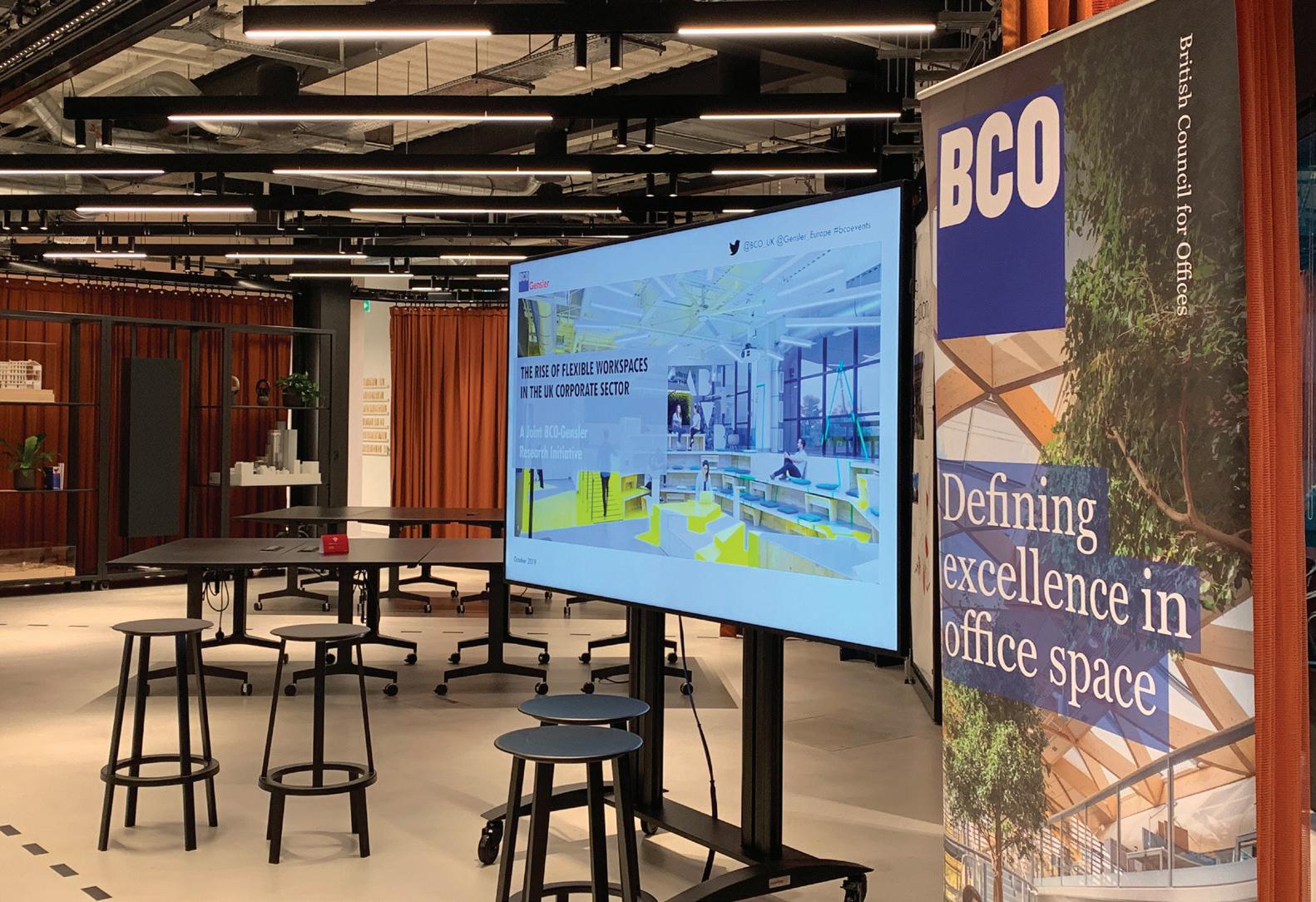
Explains Marmot: “Our BCO members seek knowledge and a lot of what they’re seeking is practical knowledge about workplace and o ice specification: what is changing, what is new, the latest thinking on sustainability and workplace health. They want solid information to guide their own work. We also ask what our BCO members wants us to explore for the future. The main area that they are interested in now is how best they can meet sustainability goals.
“We already know that the built environment is responsible for a huge amount of carbon emissions, accounting for around 40 per cent of emissions. At least another 20 per cent of emissions are incurred for transportation between buildings, so whatever we do in looking ahead we need to put the environment and sustainable thinking at the forefront.”
HYBRID WORKPLACE
While sustainability is an enduring concern, currently one of the most pressing issues for FMs is in managing hybrid work patterns and crucially, making the workplace an inclusive space for workers whether physically present or working from home.
Says Marmot: “The key issue is how you match individual and corporate needs. The ways in which we work are part of a complicated, interwoven mix of personal, social and organisational needs and we can’t solve any one bit of it without a ecting some of the rest.
“We know that people want to be with people, we work better that way, we’re biologically programmed to live with other
people, and would not have survived as a species without working in groups. O icebased, intellectual work spans just a short moment in history compared with who we humans actually are, with all of our biological needs as well as all our social needs. This means it is incredibly complex to make any big changes, yet we’ve seen that the pandemic made us do many sorts of things we weren’t used to and didn’t even know we had to know.
“You need to consider the needs of the individual, their organisation and the individual team to make it all work together. This means the sort of resetting we’re now doing is going to take a very long time until we’re good at solutions for all of those elements, such as being skilled at mixing the people who are present in meetings with those who are remote. I’m impressed with some of the technologies emerging, such as cameras that track people within a room, as currently there is a lot of inequality in a hybrid meeting as to who is noticed and who can participate.”
The other major consequence of the pandemic and the resulting rise of hybrid working is a reappraisal of both the purpose and design of the workplace as more of a place for collaboration than for individual focused work.
Along with workplaces, learning spaces
and cultural facilities, especially libraries, are a special focus for Professor Marmot who says there has already been something of a revolution in how they’re used. She cites as an example the UCL Student Centre which doesn’t feature any books but provides a variety of study spaces, including spaces for group work for students and sta .
“Solo focused work is still a key demand in libraries, but if we look at university libraries, how you learn as a student includes lectures, classes and what you read, but a lot of your learning is social.
Unfortunately, we aren’t very good in workspaces yet at articulating the di erences of needs and giving people the flexibility to work wherever, whenever, however.
Also, most work you do for an organisation is within teams, or across teams with other colleagues, and that di ers from the academic environment where students have a greater level of individual autonomy and can more readily choose to work in various types of team space, or solo space.
“But the sense of belonging within an organisation, forged by eating together, having a cup of co ee together, catching up when bumping into colleagues in shared spaces like the stairs, is really something that we’re still learning to value as part of new ways of working.”
BCO RESEARCH
research spans many areas of interest
FEBRUARY 2022 31 FMJ.CO.UK INTERVIEW FOCUS
BCO
e ot er a or conse ence o t e an e ic an t e res tin rise o ri or in is a rea raisa o ot t e r ose an esi n o t e or ace as ore o a ace or co a oration t an or in i i a oc se or
to FMs, including technology(iv) the future of transport(v) and wellness at work(vi). The organisation is also interested in helping ensure the built environment reflects on building inception through to everyday operations and utilises the latest intelligence in building information modelling (BIM) along with real time operational data.
Says Marmot: “With the pandemic, one of the key things we’ve had to do is increase the level of air intake dramatically, and that requires a lot more energy to heat or cool buildings. Sensors providing real-time data have been moving into buildings at a dramatic rate.
“However, it’s still in its infancy and, like any technical change, it will take a while to get established. For example, if every light fitting is to be intelligent, then agreement is needed across a huge number of suppliers on the technology to be installed, and what to do with the legacy of the last version.”
FMs, she believes, need to embrace the value from the data that these technologies can o er. For instance, occupancy sensors at entrances to buildings, and monitoring the use of li s, had been increasing year by year, providing data to help optimise aspects such as cleaning schedules based on real need rather than routines.
“Unfortunately, in FM we don’t always have the skills to interpret the data. We’ve got a lot of clever gadgets but the knowledge they o er isn’t always shared. Simple questions like ‘why clean a washroom that hasn’t been used all day?’ are answered by ‘because it’s in the contract’. We are not yet in a situation where an evidence base is always available to ensure that sta time, cleaning chemicals, water and electricity are not used unnecessarily, while other places that need cleaning are ignored.”
Commuting is another area where the BCO foresees changes to some FM services that support environmental sustainability and o er health benefits through ‘active travel’. Professor Marmot, notes: “In our BCO Research Committee we sponsored a report on Future Transportation looking ahead into the world of ‘mobility as a service’, forms of autonomous vehicles and ‘active travel’. We looked at what these di erent approaches might mean in terms of o ice design, o ice location, and requirements for vehicle charging, lockers and showers rather than parking.”
Another key area of interest for the BCO is the rise of coworking spaces. This wasn’t

taken seriously until relatively recently as a major business model, but according to research it’s growing fast and is definitely no longer the preserve of start-ups.
Says Marmot: “For large organisations, a mixed mode of space is certainly on the cards, with some buildings that it owns or rents long term, and others which its employees just use when needed.”
She adds: “I did some work a few months ago amongst high tech companies in the USA and what they were doing about their workspaces and the results were very interesting. What they are emphasising is green, sustainable, healthy workplaces that look like a holiday or a health resort. That’s a model that says ‘what we want is a world that is sustainable, healthy, fun, sociable, and it isn’t about creating workspaces where you just sit in rows of desks with your head down.’ It’s much more about a sense of a wider community and involvement in the world.”
Professor Marmot recently co-edited a book with Mike Schley for the IFMA Foundation - Work on the Move 3: Building better workplaces a er the pandemic. As well as co-editing she wrote two chapters: Global workplace and workforce trends, and Health and Wellbeing at work. It seems that both the BCO and Professor Marmot are most interested in looking at the bigger picture, marrying the big global challenges with the workplace.
“Our research suggests that we need to bring together planetary health and wellbeing with corporate, individual and family health and wellbeing.”
As she concludes: “The BCO helps to raise important ideas and ask experts to articulate key issues, summarised in reports made publicly available. Its contribution is really important. If you look at the wide range of BCO publications released over the past few years there is little we have missed.”
REFERENCE NOTES
FEBRUARY 2022 32 FOCUS INTERVIEW
i co or ii co or o t s o ittees esearc as iii ace on e an o or s ace an s ace atc a er a s i se o eara es in t e ce re ie an e a es in ractice t re rans ort e i ications or o ce e an an esi n i e ness atters ea t an e ein in o ces an at to o a o t it o tin is anot er area ere t e oresees c an es to so e ser ices t at s ort en iron enta s staina i it an offer ea t ene ts t ro acti e tra e
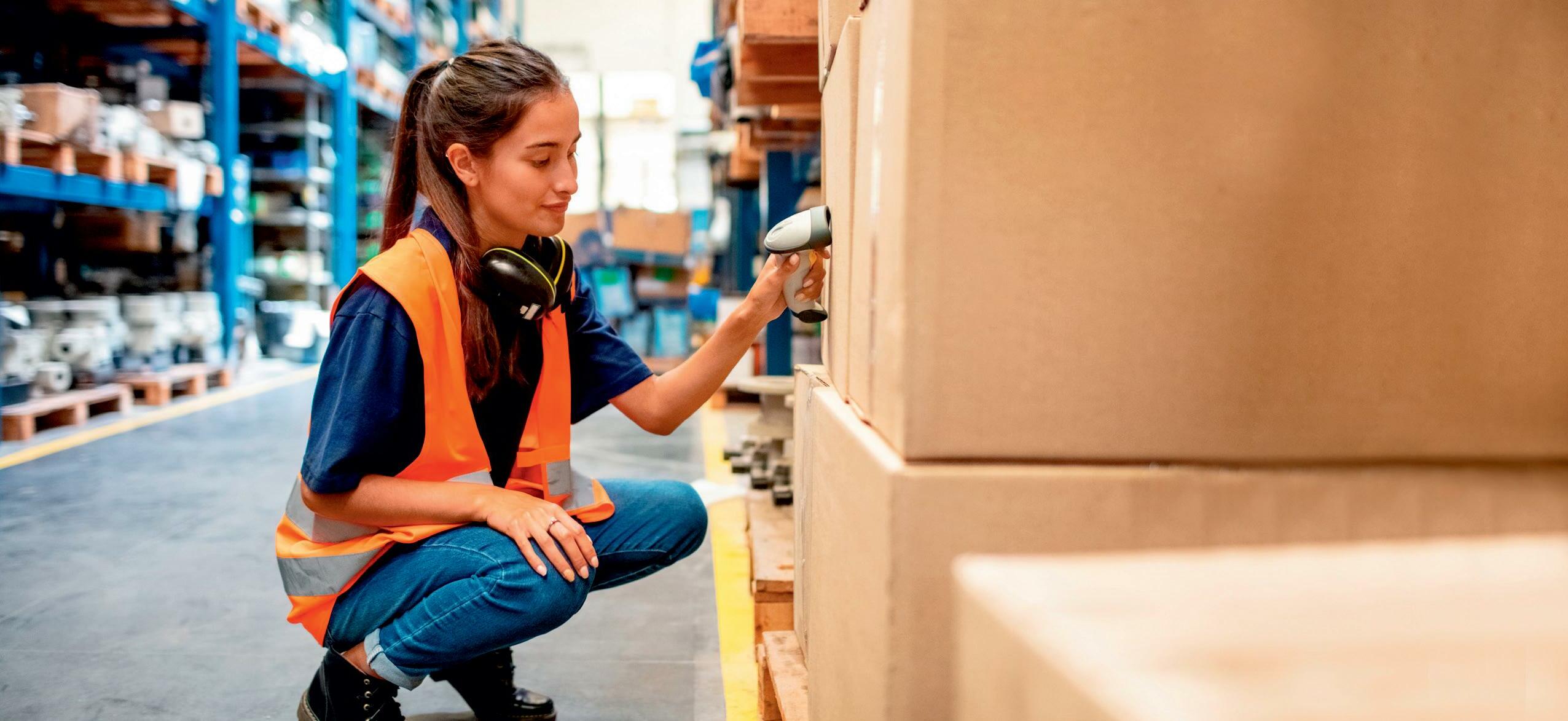


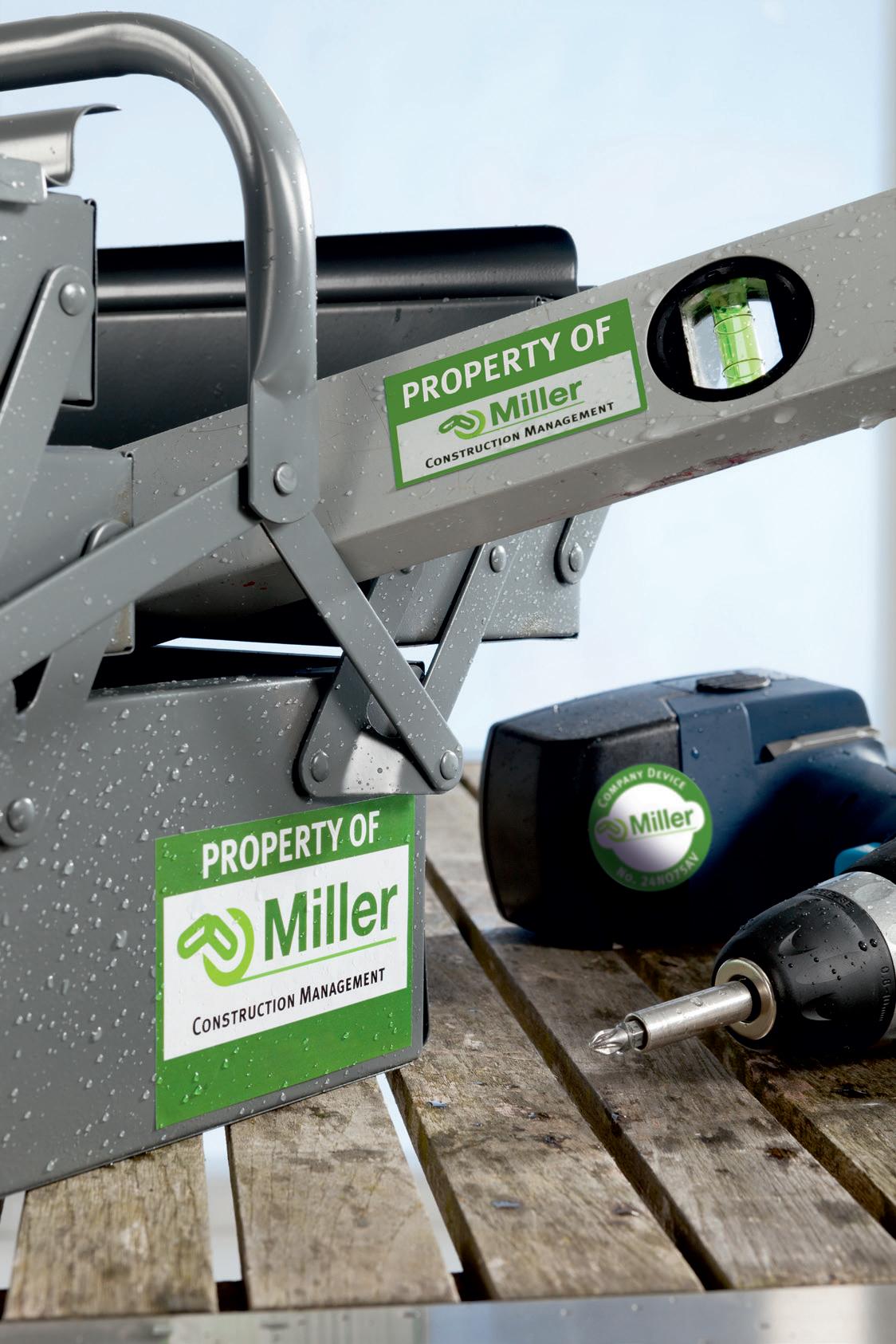
Choose from our range of products to help with Durable and high quality labelling solutions for all your needs. Health & Safety Signage in the Workplace Durable Product Labelling Protecting High Touch Items & Surfaces Keeping Assets Safe and Secure Find out more at: https://www.avery.co.uk/industrial-labelling-solutions hello@avery.co.uk | 0800 805 020 Access our free online software to design and print your compliant GHS labels AveryUK
BSRIA BEST PRACTICE

BSRIA’s guide to Water Treatment for Closed Heating and Cooling Systems (BG50) is an important document for FMs and their maintenance teams. It contains the latest thinking and best practice advice on the management and maintenance of closed heating and cooling systems once a building has been handed over.
This is a complex area but it’s really worth getting it right - small adjustments to maintenance and management can make a huge di erence to overall building performance, energy usage, and consequently, cost.
The updated guidance explains common problems, such as corrosion, scale,


sedimentation and bifouling (biological fouling), providing advice on how they can be prevented through proper design, construction, maintenance and real-time monitoring, and a range of water treatment techniques.
In a major shi away from the previous edition, BG50/2021 mentions real-time monitoring as a key tool in the fight against corrosion in closed heating and cooling systems. It highlights the importance of eliminating the root cause of such issues with a particular focus on minimising levels of dissolved oxygen (DO).



What’s wrong with sampling?
Compared to sampling alone, newly developed real-time monitoring technology does a far superior job of keeping systems
working as they should, using less energy and reducing maintenance and repair costs.
When BG50/2013 was first published the technology was yet to be invented and therefore sampling and the installation of corrosion coupons (inline monitoring devices) were the best option for condition monitoring. As commercial buildings became larger and more complex in their operations, this technique began throwing up some expensive and inconvenient problems.
With laboratory samples taking days or weeks to reveal any results, hidden problems were o en le to fester. Once data was to hand, it revealed only a snapshot in time, with subsequent developments unaccounted
FEBRUARY 2022 34 FOCUS HVAC
guide to Water Treatment for Closed Heating
Cooling
been revised.
Guardian
changed and why real-time monitoring is now considered industry
BSRIA’s
and
Systems (BG50) has recently
Tom O’Sullivan, Head of Operations at
Water Treatment explains what’s
best-practice
for. The natural response for many was to throw chemicals at the situation, leading to heavy-handed maintenance, water wastage and in some cases, causing more damage to pipework and components.
But the most critical failing of sampling is that it does not detect DO, which we now know is the precursor to all corrosion and a key target for preventative solutions. Without the ability to detect DO, an increasing number of disastrous failures ended up in out-of-court settlements causing millions of pounds of damage in damages, legal fees and repairs.
A SUPERIOR APPROACH
The latest real-time monitoring detects a range of critical parameters that signify corrosive conditions, including dissolved oxygen, pH, pressure, inhibitor levels and corrosion rates.
Any event, whether planned or unplanned (such as leaks or loss of pressure), is flagged on the inbuilt charts. Drawing on this cumulative data, FMs have the benefit of a true and accurate picture of system condition - an ideal basis to plan ongoing maintenance strategies.
FMs are kept well and truly in the picture, with alerts sent direct to their inbox if critical levels are exceeded.
Reports show trends during a period with recommendations to keep the water system healthy.
With a deeper insight into the corrosion process and how it can be mitigated, you can implement site-specific water treatment programmes that tackle the root cause of corrosion and reduce the risk of system failure and expensive repairs.

This shi – from manual sampling and laboratory testing to real-time data driven solutions – is something we’ve championed from day one, so we’re delighted to see it recognised in BSRIA’s best practice guidance for 2021.
As more FMs begin to adopt real-time monitoring as standard, we will see a generation of healthier buildings that perform better, use less energy and cost less to maintain.
CASE STUDY: REAL-TIME MONITORING SAVES £200,000
We partnered with real-time monitoring experts, Hevasure, in 2017 and since then this approach has become central to our intelligent maintenance and monitoring package.
Problem: Heavily contaminated Chilled Hot Water (CHW) system with high levels of dissolved iron and suspended solids.
Hevasure with sampling: Contaminated water is identified through sampling and a balanced flush carried out to remove debris. Hevasure unit installed alongside sampling and corrosion coupons over a two-week period to check system condition following flushing.
On day one, the unit confirms the system is within safe limits but identifies elevated dissolved oxygen. Over the next seven days, Hevasure tracks pressure spikes in realtime, leading to a diagnosis of air ingress which is promptly rectified. On day 14, data shows the system is back within spec.
Sampling only: Compared with Hevasure, which takes readings every 15 minutes, sampling takes place on a quarterly basis, dramatically increasing the ‘window of risk’.
Following flushing to remove debris, the sample is sent to the laboratory and analysed. Results confirm Hevasure’s findings but fail to identify dissolved oxygen and root issues remain unchecked. In this case, the system would have continued to draw air leading to further problems.
Through immediate identification and rectification of the problem, Hevasure saved £200,000 by preventing the need to reflush the system back to precontamination condition.
IN HOT WATER?
Changes to Part L of Building Regulations will drive the shift from non-condensing water heaters to condensing units. Neville Small, Key Accounts Director at Baxi Commercial Solutions

In December, the government published updates to Approved Document L2B of Building Regulations relating to the conservation of fuel and power in existing non o estic i in s ne o t e c an es re ates to ti ter ater eater e cienc stan ar s ro ne t e ini eat enerator seasona e cienc or irect re ater eaters i e er cent or nat ra as an er cent or i e e etro e as in irect re ater eaters i e re ire to ac ie e a ini seasona e cienc o er cent or ot nat ra as an e ore strin ent stan ar s ic i a to ot e istin an ne non o estic i in stoc i effecti e ase o t non con ensin ater heaters in favour of condensing water heaters. Many organisations still rely on noncondensing water heaters. While exceptions may apply in ‘exceptional circumstances’, in the vast majority of buildings, the current opportunity to carry out like-for-like non-condensing water heater replacement will disappear.
Move towards greater energy efficiency
The uplift is part of the government’s roadmap to help the UK move towards its net zero target by 2050. on ensin ater eaters are on a era e at east er cent ore e cient t an non con ensin o e s o e s i e t e n re s ater eaters o o an o or e a e can ac ie e near a i e ciencies o o er cent itc in to ore ener e cient con ensin ater eaters i e or anisations make vital progress towards their sustainability goals while delivering immediate and future savings in operational costs. The shift to condensing technology also encourages a reassessment of the building’s hot water requirements. Many organisations will have experienced changes in building occupancy in the last two years altered hot water usage. Ultimately, taking the time to resize the hot water demand could point to a smaller water heater now being required, which would reduce both initial capital expenditure and longer-term running costs.
Future proofing the system For organisations looking to reduce their carbon output and running costs, upgrading any non-condensing water heaters to condensing units is one of the quick wins. t e ti ter ater eater e cienc stan ar s are a o ern ent stic t en t e immediate energy, carbon and cost savings are the welcome carrots! But here’s the caveat. While the move from non-condensing to condensing water heaters can and s o e re ati e strai t or ar certain actors s c as ein an con ensate arrangements, may require advance consideration. With a robust asset management programme in place, facilities managers will be better equipped to prepare for future change. This will simplify the replacement process, and, in turn, help protect the co an coffers
Pathway to greater sustainability
roacti e annin i a so a e it easier to an t e or anisation s at a to net zero. Driving the move to improved sustainability can be a tough challenge for s artic ar in sectors ost affecte s or anisations ea it t e aftermath of lockdown and continue to face the unknown, investment in facilities is likely to come under greater scrutiny.
ra in ro non con ensin to i e cient con ensin ater eaters can e an i ortant rst ste in a ase re r is ent ro ra e to rin t e i in up to code. A natural progression would be to integrate low carbon air source heat pumps in a hybrid system, once budgets permit, to continue the stepwise route to decarbonisation.
Remove risk
At the end of the day, no organisation wants to risk its building being left with no hot water supply. Unplanned replacements can result in downtime, expensive call out fees and disruption to business activities – all of which will negatively impact on the company’s bottom line.
That’s why we would urge facilities managers to proactively plan ahead now. The clock is ticking. By conducting regular condition surveys and inspection of plant room assets, facilities managers will be able to prepare for future change and avoid putting business operations at risk.
FEBRUARY 2022 35 FMJ.CO.UK HVAC FOCUS
OPTIMISING BUILDING VENTILATION
Don Foy, a Director and HVAC specialist at the multi-discipline engineering solutions business BGEN, provides practical tips on how businesses can improve building ventilation and reduce the ossi i it o an ot er inter ir ses circ atin in oors

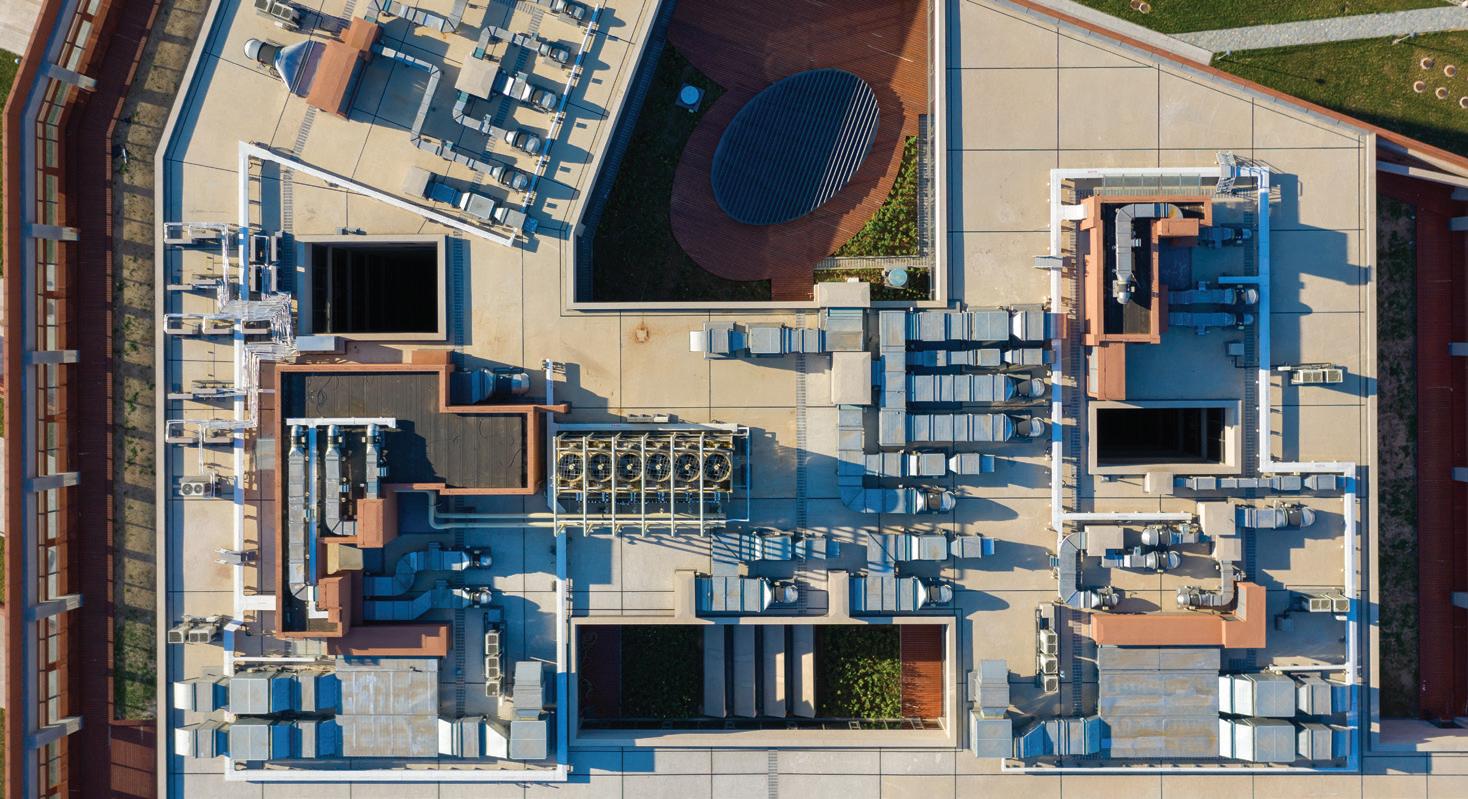
Encourage cross room air flow
You might think opening some natural room vents fully will help to improve ventilation. However, to get the best results, open room vents on opposite sides of a room to encourage cross room air flow.
Minimise air recirculation
Unless your HVAC system is designed to mitigate the risk of COVID-19 and other viruses, keep their use to a minimum.
Air purifiers
Air cleaning and filtration units can help to reduce the airborne transmission of COVID-19 and other viruses. These should be considered in areas where it is not possible to maintain good levels of ventilation.
Check/install sensors
Think about installing sensors which can detect CO2 levels, especially in highly populated areas such as open plan o ices and meeting rooms. This can provide a guide as to when additional fresh air is required. Levels should be agreed on a case-bycase basis, but it is generally accepted that the limit should be a maximum of 800ppm.
In addition to CO2 monitors, consider disabling sensors designed to optimise fresh air per employee. The standard 10 litres of fresh air per person (minimum) should be re-evaluated while we work through the pandemic.
Consider UVC light and upgrade filters
Ultraviolet (UV) light can kill the COVID-19 virus.
With Omicron variant contributing towards record cases of COVID-19 across the country, building ventilation is under the spotlight like never before.
Professor Cath Noakes told the Building Engineering Services Association (BESA) national conference that the pandemic had increased understanding of how disease is transmitted around indoor spaces and raised public awareness of the importance of mechanical ventilation.
“I never thought I would see the day when the Prime Minister and the Chief Scientific O icer were talking about ventilation,” said Noakes, who is one of two engineer members of the government’s Scientific Advisory Group for Emergencies (SAGE). Measures continue to be introduced to improve building ventilation. In January for example, the Government announced an additional 7,000 air cleaning units to be provided to early years, schools and colleges to improve ventilation in teaching spaces.
But with COVID-19 here to stay, alongside winter viruses such as influenza, organisations throughout the UK need to consider how they can improve the ventilation of their premises – whether that be an o ice, factory or school.
MITIGATING THE SPREAD
Eliminating the spread of COVID-19 and other winter viruses is virtually impossible, but there are a number of ways building ventilation can be improved
and transmission of the virus can be reduced.
Conduct a risk assessment
Undertake a risk assessment to identify ventilation challenges specific to a building and develop a plan to improve ventilation. Given the focus in recent decades has been on minimising fresh air entering a building to aid employee comfort and optimise the energy consumption of HVAC systems, this may be a challenge, but a HVAC specialist will be able to o er support.
Balancing fresh air and employee comfort
‘Displacement ventilation’, where air is introduced in a room at a low level and extracted at a high level, using the theory ‘warm air rises’, is one of the most e ective methods of removing air contaminants. However, while maintaining good levels of ventilation is important, employee discomfort should be minimised. While there is no legal requirement on temperatures in the workplace, the Government suggests a minimum of 16C or 13C if employees are doing physical work.
Currently most mechanical building ventilation systems for occupants have fresh air supply mixed with recirculated air at a high level in ceiling voids before they are supplied to the room to help avoid dra s and lower temperatures. This method however makes it di icult to remove the COVID virus from the air e ectively. Therefore, additional fresh air through lower inlets should be considered.
Consider the use of UVC lights in HVAC systems (UVC lights can also be installed directly in rooms if there is no mechanical ventilation). F7 grade filters or better in HVAC systems will also help to capture SARS-CoV-2 and other virus particles.
Put pressure in the spotlight
Slightly higher or lower air pressure can help reduce virus contaminated air from stagnating. There should be a pressure di erential of approximately 25 pascal units between rooms to achieve this.
Think about the environment
Many measures to improve ventilation will involve an increase in energy consumption. Heat recovery units and other technologies can help to negate this. Heat recovery units, which utilise the heat from extracted air to heat the fresh air being introduced from the outside, will help to maintain a comfortable room temperature and significantly reduce energy bills.
Finally… use common sense
If needed, open doors (where possible) and windows as required. Also, consider providing extra space between workstations in open plan o ices.
THE FUTURE
While Government advice continues to change in accordance with variants, the reality is that we need to find a way to live with COVID. Optimising building ventilation can play a key role in helping society to return to some kind of normality, and in the process also help to reduce the spread of other winter viruses.
FEBRUARY 2022 36 FOCUS HVAC
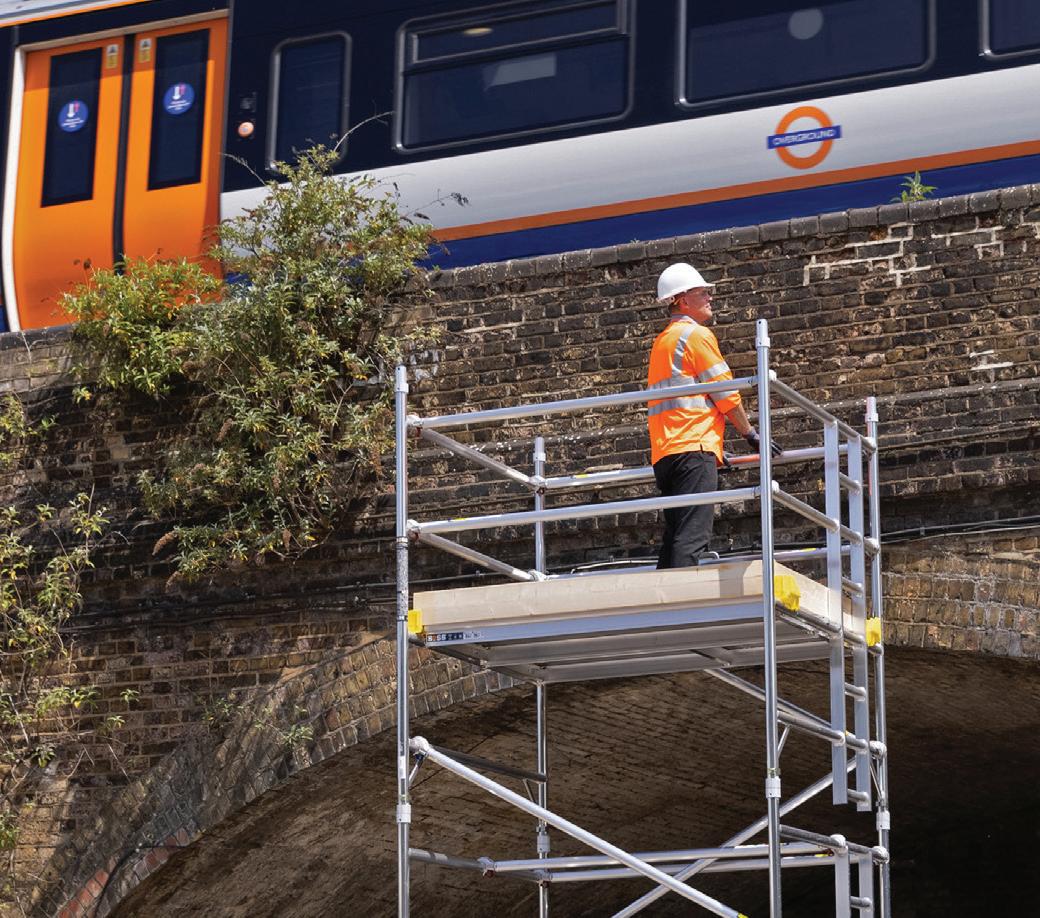



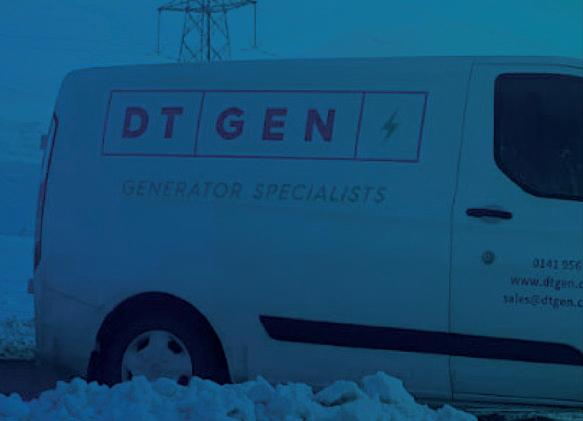









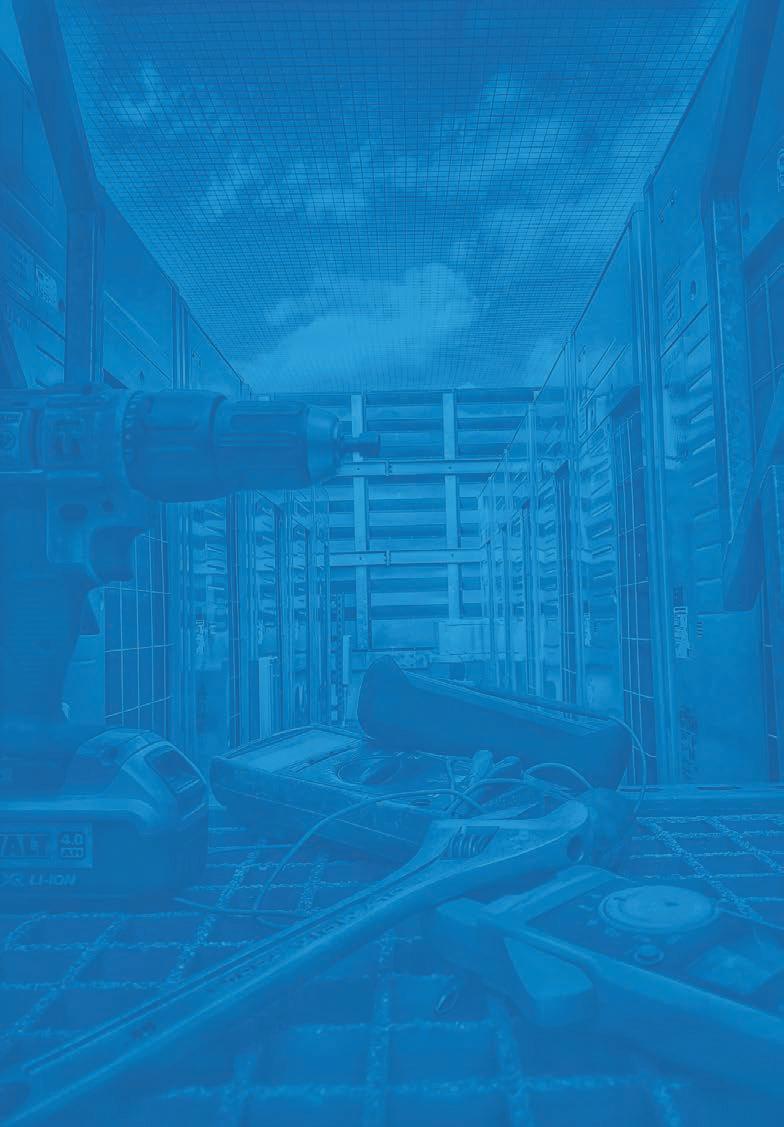
Find out more at: www.bossaccesstowers.com/EN1004 Make sure it’s BoSS –Increased safety and stability at low level heights –New and safer distance requirements between platform levels You know when you choose BoSS that you’re choosing the UK’s No.1 mobile tower system. EN 1004 standards have changed and with BoSS you can be assured that our towers meet all the requirements you need. www.dtgen.co.uk Does your generator need a winter health check? Make sure your generator is ready to perform when you need it most Battery testing Coolant sampling Check for water ingress Fuel polishing Control system upgrade AIR CONDITIONING EXPERTS FOR OVER 40 YEARS Design & Installation | Planned Maintenance | Repairs All maintenance contracts include; Dedicated Account Manager Bespoke contracts to suit your estate Free dilapidation report Fully equipped, experienced engineers Full documentation & recommendations Condition monitoring In-house repairs OFFICE & COMMERCIAL | INDUSTRIAL HOSPITALITY & RETAIL | HEALTHCARE EDUCATION | RESIDENTIAL 01932 765648 sales@accent.ac www.accent.ac
TECHNICAL ADVANTAGE
As the CEO of The Global Alliance of Facility Management Innovators [page 42] asserts, the adoption of FMTech is set to shape how facilities are managed in the future. Here we ask two leading suppliers of digital tech, Over-C and Anders + Kern, on the practical advantages
At the end of 2020, the RICS’ Quarterly UK Facilities Management Survey reported a discernible increase in the levels of investment in digital technology within the FM sector. More recently it has predicted the impact of data and technology will only continue to grow across the built environment.
Within the operation context there are two key areas where FMTech has a significant impact; supporting front line operations and helping FMs manage the o ice workplace.
Mike Elliot is CEO of Over-C: a digital platform that uses location sensor data and other inputs to trigger tasks and workflows which help empower frontline workers through technology.
IN YOUR EXPERIENCE ARE TOO MANY FMS STILL RELYING ON PAPER-BASED SYSTEMS TO MANAGE FACILITIES?
Creating and developing standard operating procedures for organisations and their people o en begins with something on paper, and likely focus on compliance and consistency. However, in attempting to communicate and engage with operational, frontline teams, tasks can easily become over-complicated, and with an ongoing use of paper an unnecessary burden. In such cases, and too frequently, the fundamentals of empowerment and productivity are sacrificed because “that is the way we have always done it”.
Shi ing to digital, paperless processes is simple and straight-forward, if the approach is facilitated by a technology provider that understands the importance of genuine, transparent engagement of frontline teams.

The elimination of paper-based reporting frees up management time for value-added activities: by automating time-consuming administrative tasks, auditing and reporting becomes instant; time, e ort, cost tracking and recording frontline activity is minimised. Also, a paper-less operation o ers significant environmental benefits: supporting the sustainability programmes for operators and clients; reducing paper storage, enabling space e iciency.
WHAT ARE THE MAIN AREAS OF DIGITAL TECHNOLOGY FMS SHOULD CONSIDER ADOPTING?
The range of technologies available to FMs is vast: wide-ranging and potentially overwhelming. Pretty much anything can be monitored, recorded, analysed and reported upon. The appetite to seize advantage through digitisation is growing almost exponentially, especially when coupled with safety, sustainability and social value.
For many, the driver is e iciency and productivity: cutting cost, reducing (people) resources. There are certainly great opportunities to be enabled through technology,
FEBRUARY 2022 38 FOCUS DIGITAL WORKPLACE
but failing to take people (colleagues and customers) on the journey is likely to have the opposite e ect.
The key is to consider what is important to the client, the customer, other stakeholders and the FM’s organisation: to get clarity on these, and then consider how best to align data outputs. Keep the technology relatable, keep it simple, don’t overwhelm, ensure the inputs are customer and employee focused, enable the team to work smarter not harder, promote balance and productivity.
HOW DO FRONTLINE COLLABORATION TOOLS WORK TO ENABLE WORKERS TO COMMUNICATE SAFELY?
In an industry where sta can feel undervalued, its o en-outsourced nature weakens cohesion. Frontline workers achieve best results with the right technology in their hands – enabling them to communicate more e ectively with managers and each other. This helps forge a common culture upon which communities depend.
Accessible, digital technology in the hands of frontline workers is a hugely empowering tool. If it is transparent to all, straightforward to use, convenient, enabling ease of doing tasks, people will use it. In doing so the technology becomes the connector between the individuals in the team, and facilitates working together, sharing information, sharing challenges, sharing ideas for improvement, all of which are the essence of collaboration.
Soon the connecting technology is enabling communication across an organisation, flattening the structure, enabling lone workers to engage, sharing near misses, and learning from accidents and incidents to mitigate recurrence.

CAN MOBILE-BASED FRONTLINE MANAGEMENT SOFTWARE BE UTILISED TO HELP MONITOR HEALTH, SAFETY AND COMPLIANCE?
What we measure, we improve. If you can’t measure something, you can’t understand it. If you can’t understand it, you can’t control it. If you can’t control it, you can’t improve it.
Applications on mobile devices engage employees and contractors from the start of a shi or task, to the close out: from real-time induction and COVID-19 checks, through permits to work and more. Time, date, image and location data prove actions and presence.
Good data leads to good decisions. Frontline workers need to know how to use data and apply it…but it is not enough to be data driven. The future is automation with machine-learning.
Machine-learning shi s traditional processes to intelligent ones that discover new patterns in large, unstructured data-
sets, and make strategic predictions on their own. It can take on highly repetitive administration tasks.
FM technology enables system consolidation and daily inspections of facilities, with preventative maintenance checks carried out on critical infrastructure and assets. Checks are assigned, audits are sent directly to a control room or supervisor to validate in real time and digital forms provide an audit trail.
The transparency and engagement o ered by digitisation overcome the likelihood of issues being overlooked or misplaced through human error.
Teams see and feel the value of being able to monitor real-time collective performance. They have confidence in data accuracy, they support each other, and promote a genuine oneteam approach, irrespective of who they are employed by.
ARE FM FRONT LINE OPERATIVES
COMFORTABLE WITH ADOPTING NEW TECH, AND WHAT CAN BE DONE DURING THE MOBILISATION STAGE TO MAKE THE TRANSITION EASIER?
On-site super-users are essential to help bridge the gap between the implementation team and end-users. Being responsible for the adoption of the solution within their facility, these tutoring champions are crucial throughout mobilisation and business as usual phases to ensure the system meets stakeholder expectations and potential issues are
quickly identified and resolved. Super-users empower others through learning and engaging directly at the frontline, rather than taking a remote or organisational top-down approach.
Frontline workers want technology – in a recent industry survey 64 per cent who say they have access to mobile technology, confirm it allows them to do their jobs smarter. Workers with access to technology are more satisfied with their job.
Security o icers and cleaners, for example, want tools that empower and streamline reporting, enabling quick communication. FM and guest service workers o en have the poorest tools and greatest opportunity to save (typically 10 per cent of hours) per week. Paper processes only slow them down.
Many leaders recognise success depends upon digitally enabling frontline workers through tools that encourage employees to work better together: frontline insights, expertise and creativity can reshape work cultures and unlock ideas; o ering potential to reduce costs, promote growth, spark innovation and accelerate success.
HOW CAN IOT BE BEST USED TO AFFORD REAL-TIME MONITORING OF PREMISES?
During the pandemic lockdowns, the challenge to monitor crowds at high footfall venues, such as shopping centres, began when queues formed outside key retailers. IoT solutions were developed and designed to monitor and report crowd numbers every 60 seconds, enabled by real-time reporting thresholds on number breaches: low-cost IoT crowd-flow sensors detect Wi-Fi and Bluetooth signals, focusing on mobile devices, estimating vicinity people numbers with >90 per cent accuracy; no identifying
FEBRUARY 2022 39 FMJ.CO.UK DIGITAL WORKPLACE FOCUS
Accessible, digital technology in the hands of frontline workers is a hugely empowering tool. If it is transparent to all, straightforward to use, convenient, enabling ease of doing tasks, people will use it.”
–MikeElliot
data is stored ensuring GDPR compliance; CO2 sensors monitor COVID-19 transmission risk by analysing air quality.
In considering these opportunities, FMs can realise the e iciency of smarter ways of working to methodically identify what parts of the operation need digital process improvement and real-time application to strategise cost saving initiatives.
HOW CAN DATA ANALYTICS BE APPLIED TO HELP REAP THE BENEFITS OF EMPLOYING DIGITAL SOLUTIONS?

Customer feedback is vital to monitor performance. Digital solutions, for example social media sentiment tracking, can identify issues posted by customers in real time and convert the feedback into tasks to be resolved immediately.
In so doing, not only can resources be deployed more e iciently, but analysis and machine learning can be utilised to anticipate and predict service requirements and improvements moving forward, adding demonstrable value for clients and enhancing the customer journey experience for consumers.
https://over-c.com
John Gorman is Marketing Manager at Anders+Kern (A+K): specialists in workspace so ware, sensor technologies, meeting room and desk management/booking systems, visitor management, data analytics and audio-visual solutions.
DO YOU THINK THAT FOLLOWING THE PANDEMIC, FMS ARE NOW MORE OPEN TO ADOPTING DIGITAL TECHNOLOGIES TO HELP MANAGE THEIR PORTFOLIOS?
The pandemic has shone a light on the hybrid
working model and led FMs to go out to the market to investigate what products can enable this way of working, the general mood is this style of working is here to stay long a er the pandemic has passed.
WHAT KIND OF DIGITAL SOLUTIONS SHOULD FMS CONSIDER TO ENSURE THE SAFETY OF OCCUPANTS WORKING WITHIN A FLEXIBLE OFFICE ENVIRONMENT?
Space management systems comprising both interactive hardware such as meeting room booking panels along with booking so ware accessible via multiple touch points are a suitable choice. A digital sign in management system can also be applied for sta and visitors. These can be in the form of a mobile app check-in, via QR codes or tablet sign in. All these solutions negate the need for a physical sign in book. Sensor technology can
also be used for people counting and space management
IN WHAT WAYS CAN THE LATEST TECHNOLOGIES ENABLE FMS TO MANAGE HYBRID WORKING PATTERNS?
Space booking systems invariably include data and analytics tools and dashboards to collect valuable insights on how spaces are being used. In addition to this smart sensors can give data on a more granular level.

ARE END USERS (I.E., OCCUPANTS)
COMFORTABLE WITH ADOPTING NEW TECH, AND WHAT CAN BE DONE DURING THE MOBILISATION STAGE TO MAKE THE TRANSITION EASIER?
Numerous Studies show that Millennial and younger workforces not only adopt new technologies readily but in fact are more attracted to working for companies that embrace new smart technologies. But whatever the demographic of the users, it is important to be open and transparent about what and how data is being used (to the benefit of the employees and building). Many of the data points including sensors are anonymised and used purely to make informed decision about productive and economically use of spaces.
CAN DIGITAL SOFTWARE ALSO BE USED TO ENHANCE THE PERFORMANCE OF BUILDINGS?
Digital workspace management so ware can be used to monitor a multitude of data points for the performance of buildings. These include monitoring air quality and space occupancy. The data is only useful if acted upon, but can help optimise best use of areas of a building (if over or underutilised or repurposed).
www.anders-kern.co.uk
FEBRUARY 2022 40 FOCUS DIGITAL
WORKPLACE


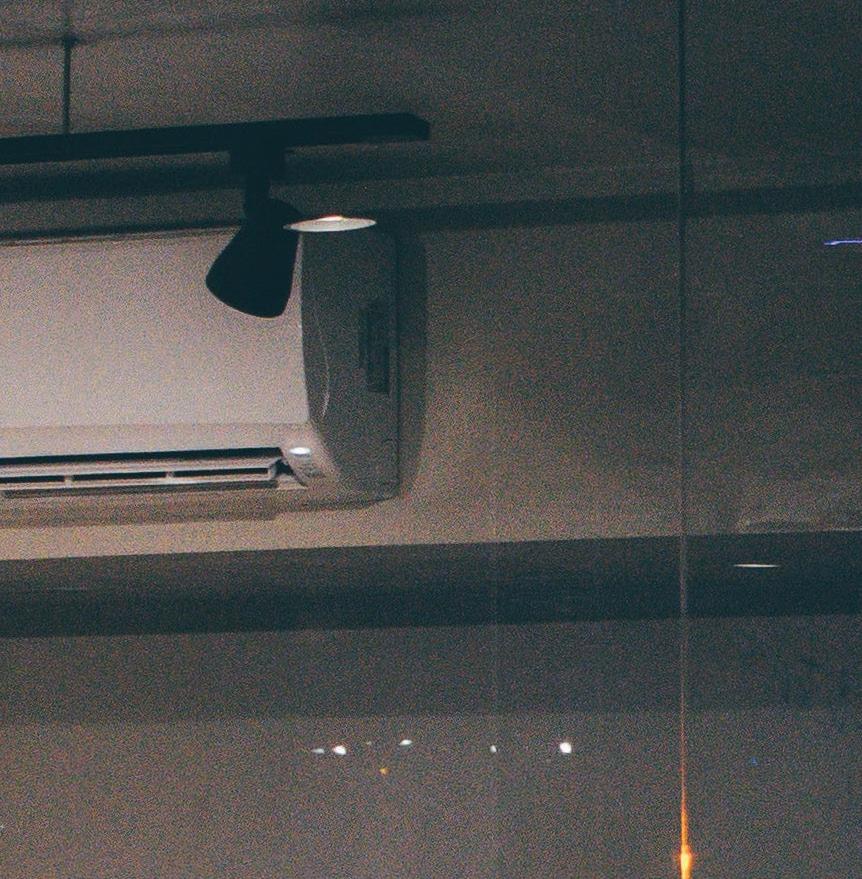




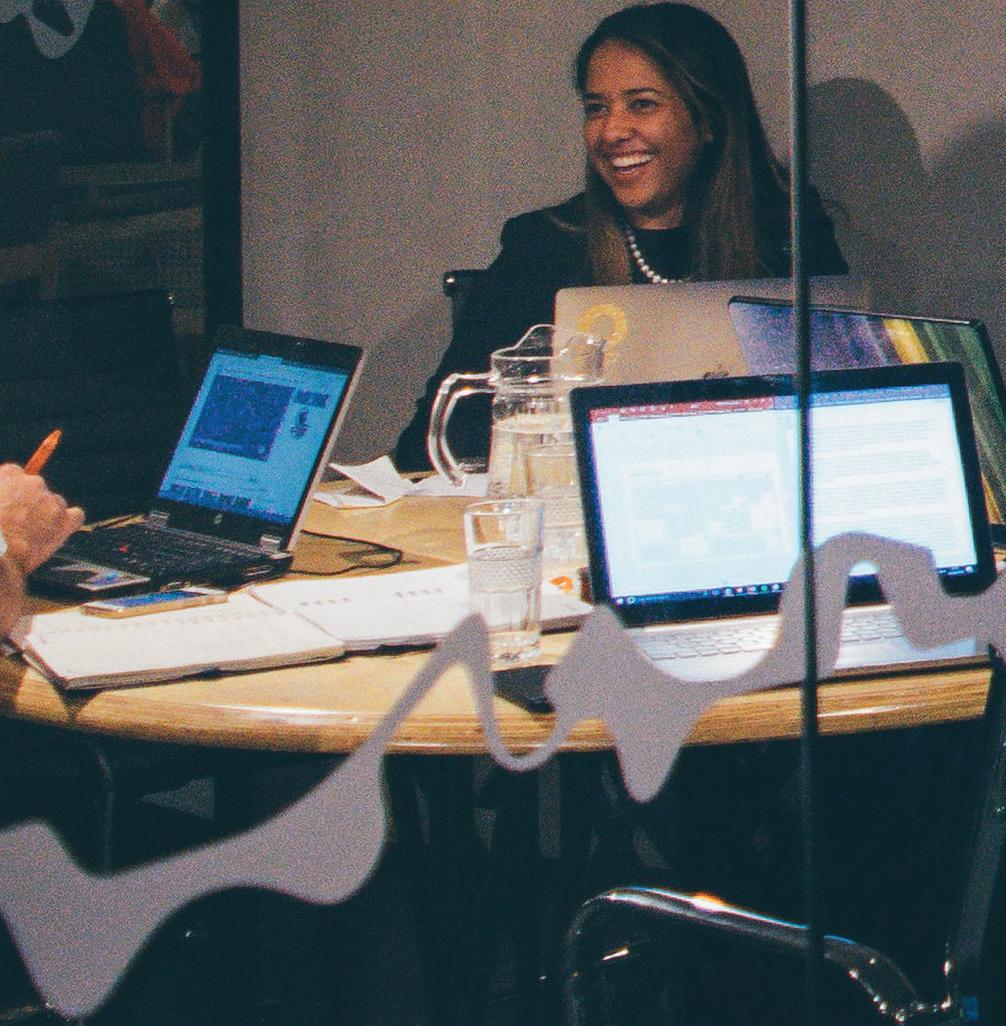


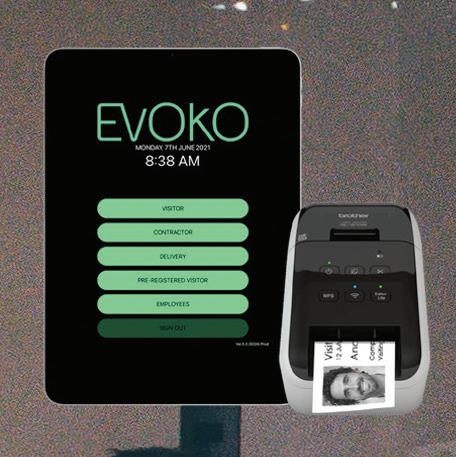
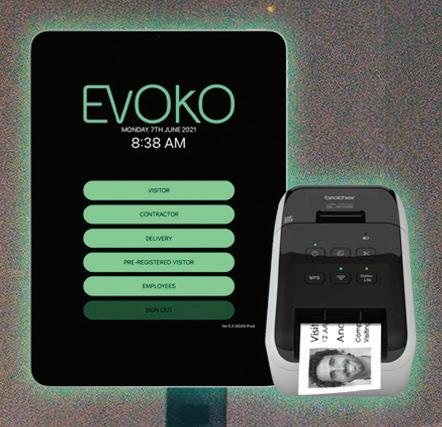
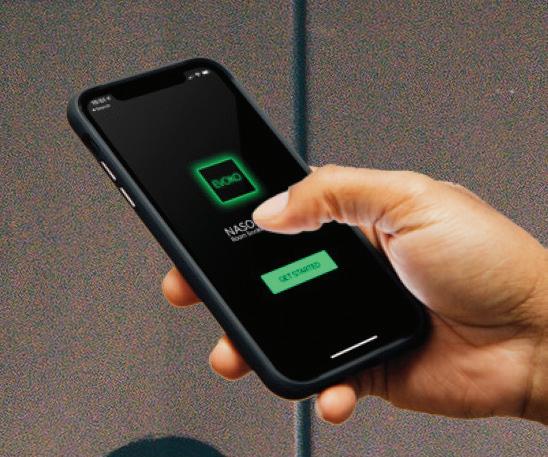
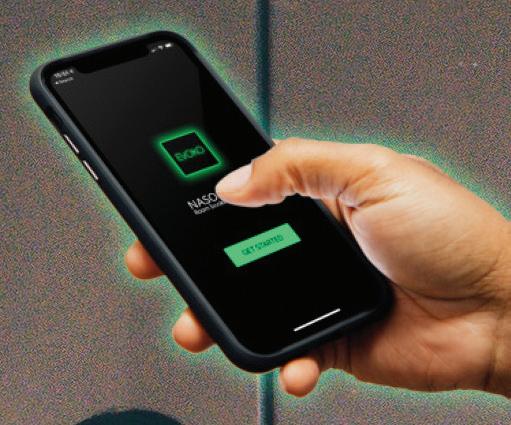


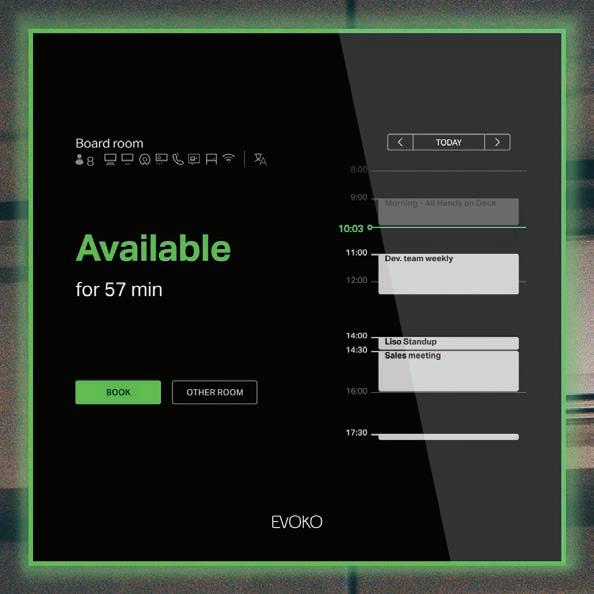

Naso room manager Simplify your room booking, desk booking and visitor management with flexible and fully integrated hardware and software solutions. 01638 510 900 sales@anders-kern.co.uk www.anders-kern.co.uk/evoko-naso Get in touch Room booking - Desk booking - Visitor management part of a cloud based workplace management solution
DIGITAL EMPOWERMENT
Hermsen,

a eetin oint et een s an start s t at offer inno ati e i ita tec no o so tions or FMs, explains how the adoption of FMTech can empower the sector
Prior to the pandemic, it was to meet the call for sustainability within the built environments where we mainly saw the emergence of innovative technologies. From green materials to sustainable energy, the built environment responded with innovative construction technologies. PropTech solutions emerged to serve better infrastructure and mobility demands, while o ering Corporate Real Estate (CRE) managers a host of applications to better serve their tenants. The FM sector on the other hand played catchup compared to the rest of the built
environment. But that was up until the global COVID pandemic happened. Now that climate action is becoming a priority for corporations, the facility manager’s role is moving closer to the widespread adoption of digitalisation.

Nearly two years into the pandemic, we have seen a remarkable transformation on how we access, use and manage our buildings. In order to respond and cope with the necessity to provide a safe and e icient built environment, facility managers rose to the occasion and responded with the accelerated adoption of digital technology and solutions. In e ect,
COVID has ushered in the future workplace well ahead of time and permanently altered how we access, use and manage our buildings.
ROLE OF FMTECH
So how does FMTech support facilities managers? How can innovations in FM help them increase their take up and understanding of the role of technology in delivering services and monitoring performance? Let’s look at some examples of how FMTech is helping facility managers and is shaping the way facilities will be managed in the future.
FEBRUARY 2022 42 FOCUS DIGITAL WORKPLACE
Cindy
CEO of The Global Alliance of Facility Management Innovators, which serves as
Access control, workplace management and analytics
The need to observe and comply with health protocols has made it convenient to use digital solutions like contactless access controls at building entrances. Aligned to this, there is also a need to monitor the number of people – both visitors and regular occupants – onsite. And as workplaces go hybrid, employees are no longer being assigned a fixed desk as o ices may have di erent sets of employees depending on their working schedule.
All of these situations can be managed with a range of digital solutions, including common area access control, visitor express check-ins, configurable visitor workflows, seamless meeting scheduling and simplified room booking. Without this technology, it would not be possible to enable employees to view desk availability, map occupancy levels and reserve desks instantly or in advance, via mobile or web. If you add in touchless check-ins, thermal scanning, contact tracing, and heath declarations, FMs can ensure returnreadiness at all times.
Workplace Management Solutions is the collective denomination for solutions that are helping facilities managers implement hybrid working safely and e iciently. These are open, online digital platforms to which, when required, more and more data-driven functionalities can be added, modelling the system to the need of every building and organisation. Users install an app on their smartphone to access its functionalities, and the FM department is equipped with a central dashboard for monitoring and control. The availability of quality IoT devices, mostly sensors, is the enabler of these solutions.
FMTech solutions are not limited to o ice buildings but work as well for huge workspaces and built environments like shopping malls, hospitals, concert venues and airports where indoor positioning and wayfinding technologies not only help employees navigate and follow social distancing protocols but more importantly allow for people to find their way around.
Data-driven, dynamic cleaning as opposed to static fixed cleaning routes Data-driven cleaning was already gaining recognition due to the increasing popularity of co working spaces. In traditional workplaces however, static fixed cleaning routes tended to take place a er working hours or at night, not during peak hours. This is no longer the case. The rise of the hybrid environment not only necessitates extra cleaning but also dynamic, just-intime cleaning throughout the day. Cleaning becomes on-demand, especially in areas
where you have the highest potential concentration of viruses and bacteria; including desk spaces (particularly where there is “hot desking”, with di erent people using each desk), keyboards, and doorknobs. As a result, FMs are turning to digital solutions like desk sensors, space counters to count the number of people passing through a desk and cleaning it a er a certain number, and cleaning requests buttons (either physical buttons on desks or via apps).
There has been an increase in the use of cleaning robots, especially in big spaces like airports or hotel lobbies.
In confined spaces, typical of the hybrid workplace, the trend is towards “superteams” of human cleaning sta aided with technologies that are driven by AI and big data.
Intelligent maintenance management platforms, energy management systems and digital twins
Utilising accessible technology, along with available data, makes it easier to automate and optimise the entire operational and maintenance workflow. The latest FMTech solutions in operations and maintenance enhance the user experience with solutions that are as attractive and easy to use for the technicians doing the job on-site as the FM director who reports directly to the Board.
The technology is particularly useful when maintaining operations within a facilities portfolio, where service requests come in via multiple communication channels. This technology is a gamechanger in streamlining and automating information flows and providing an amazing bird’s-eye overview of the status of requests and the e iciency of the maintenance teams.
For energy consumption and management, AI-based so ware solutions for energy e iciency delivers personalised predictions on energy demand, and the so ware enables HVAC installations to be set up for optimal use.
The metaverse made headlines in the last quarter of 2021 but in FM, a similar version has already been in use for several years. This is where FMTech enables the creation of digital twins of a building. Digital twins, ready-made
for operational use, and thus di erent from static BIM models that are usually employed by architects, give facility managers a workable copy of the building, made accessible in the cloud. These can be instantly updated, on any changes in the building or the assets within them, via photos and drawn indications.
More than virtual reality, it’s augmented reality that is becoming more widely available. Images (or digital twins) can be enriched with data on the assets, via documents that are digitally “attached” to the asset. Manuals, maintenances schedules and updates can then be visualised via a tablet screen, or through augmented reality glasses, which we predict will become more popular this year.
Innovations in food and beverage access and supply
Facilities managers are turning more and more to online “corporate catering marketplaces” to ensure not only quality but more importantly the availability of food and beverages, especially in a hybrid workplace. These digital platforms, where all kinds of local catering companies o er food and beverage packages to the corporations in their city, allow FMs to o er building users the flexibility of ordering the F&B via an app on their phone at the hour that suits them best, and all with the convenience of receiving one centralised invoice. FMs do not have to worry about curating individual caterers, can guarantee diversity in food supply according to anyone’s taste and at the same time can avail themselves of an account management team to assist them with a quick and easy set-up.
CONCLUSION
The new demands wrought by the pandemic may have accelerated the adoption of disruptive innovative solutions in the FM industry but here at The Global Alliance of Facility Management Innovators, we believe that they are long overdue. With a significant projected growth and market size trajectory of $1 TN in 2019 to $2 TN in 2026 (Global Market Insights, 2019) warranting the attention of the FM industry, FM innovation and technology are surefire ways to propel the industry towards the future.
www.fminnovators.org
FEBRUARY 2022 43 FMJ.CO.UK DIGITAL WORKPLACE FOCUS
For energy consumption and management, AI-based software so tions or ener e cienc e i ers personalised predictions on energy demand, and the software enables HVAC installations to be set up for optimal use.”
GREEN PRINCIPLES
up urban areas.
Thankfully, we’ve moved on from wilting palms and ferns sitting sadly in the corner of the room, to features such as low-maintenance modular ‘living wall’ partitions placed across the entire interior. Using organic surfacing materials like 100 per cent recycled cotton, unpolished timber or natural stone deliver sustainable, but easy to maintain, interiors.
A SMARTER OPERATION
Digital technology has revolutionised facilities management protocols entirely. Nowhere is this more apparent than in the operations of HVAC systems, and FMs are starting to take advantage of the latest innovations in automation to heat and cool buildings in a more environmentally friendly way.
The last decade has seen a definitive shi in attitudes on the impact of climate change, and the urgency with which we need to adapt all aspects of society in order to mitigate, and ultimately reverse, its negative e ects.
As such, built environment professionals are looking at every aspect of the full building lifecycle to see where they can build as sustainably as possible. No longer does the carbon conundrum stop once the last screw is tightened and the final lick of paint applied.
The conversation goes beyond the planning and construction phase, and it’s well known that a sizeable proportion of building emissions are generated from the ongoing operation of a building (17 per cent). This is not to mention renovation and refurbishment work which will also be undertaken during the building’s life.
All of which means FMs have a crucial role to play in both driving down emissions and reducing the carbon footprint throughout the operational phase.
Of course, in line with a growing awareness around environmental issues, we have made giant technological strides; from cutting-
edge digital tools to low-impact material solutions. These, alongside modern methods of green building management are already helping FMs up and down the UK, achieve carbon savings and, as a result, more sustainable buildings.
With green retrofitting and refurbishment set to become a major trend over the coming decades, in the drive towards our societal goal of Net Zero 2050, here are some of the principles which will guide approaches over the coming year.
A CIRCULAR WAY OF THINKING
Over the years, the retrofit sector has built an unwelcome reputation for material wastage and it’s time this perception changed. In recent years, we’ve become far better at introducing circular principles into our business models, particularly with regards to interior fixtures, fittings and finishes.
Importantly, manufacturers like us are using more green energy to power processes than ever before. Further, we’re also making more products with higher percentages of recycled materials as well as introducing leasing services to reduce raw material consumption and output.
The challenge is more about
repurposing what already exists within a building and that’s why initiatives like our Take Back scheme will become increasingly important. This benefits FMs by allowing them to replace or add assets without the need to commission new stock.
As such, we’re encouraging our clients to involve us as the requirements for the space evolve. Reuse what you can, we’ll ‘Take Back’ anything that could be reused or refurbished, and recycle the absolute minimum of the materials that remain.
Coming in at a similar, and on some occasions lower, cost than brand new stock, this o ers a clear, sustainable purchasing choice for FMs. It cuts down on material waste and helps to deliver maximum value from the component for the client.
BEING BIOPHILIC
Biophilic design has increased in popularity over the last two decades and we’re increasingly seeing natural elements incorporated into retrofit projects across the board. In the commercial o ice space, this trend is gathering pace, in line with an increasing societal desire to connect closer with nature, particularly in built
Smart-controlled, sensor-backed components and intuitive energy management so ware is helping FMs think more strategically, optimising processes and reducing the need for carbon-intensive systems. This has made natural or hybrid ventilation the norm, opposed to the exception, with programmable systems able to improve air flow and quality through a building interior. Not only does this reduce emissions and operational costs, but also improves occupant health.
BETTER ENGAGEMENT FOR GREENER RESULTS
What’s become clear is we need to encourage more sustainable design across the board, particularly when it comes to retrofit and renovation of our existing stock, to help FMs meet their emissions targets.
Those involved in the building product, design and construction phase need to continue sharing their expertise and knowledge with FMs, to inform their operational and management decisions.
This will require greater engagement over 2022 and clear messaging about what makes our components, fixtures, fittings, finishes and installation methods stand out, and how best to use them for maximum e iciency and sustainable gains.
It’s fair to say there are exciting, if challenging times ahead. However, we know that through establishing an ongoing dialogue with the FM community, we can achieve a greener, higher return workplace, which utilises the potential of intelligent specification and design.
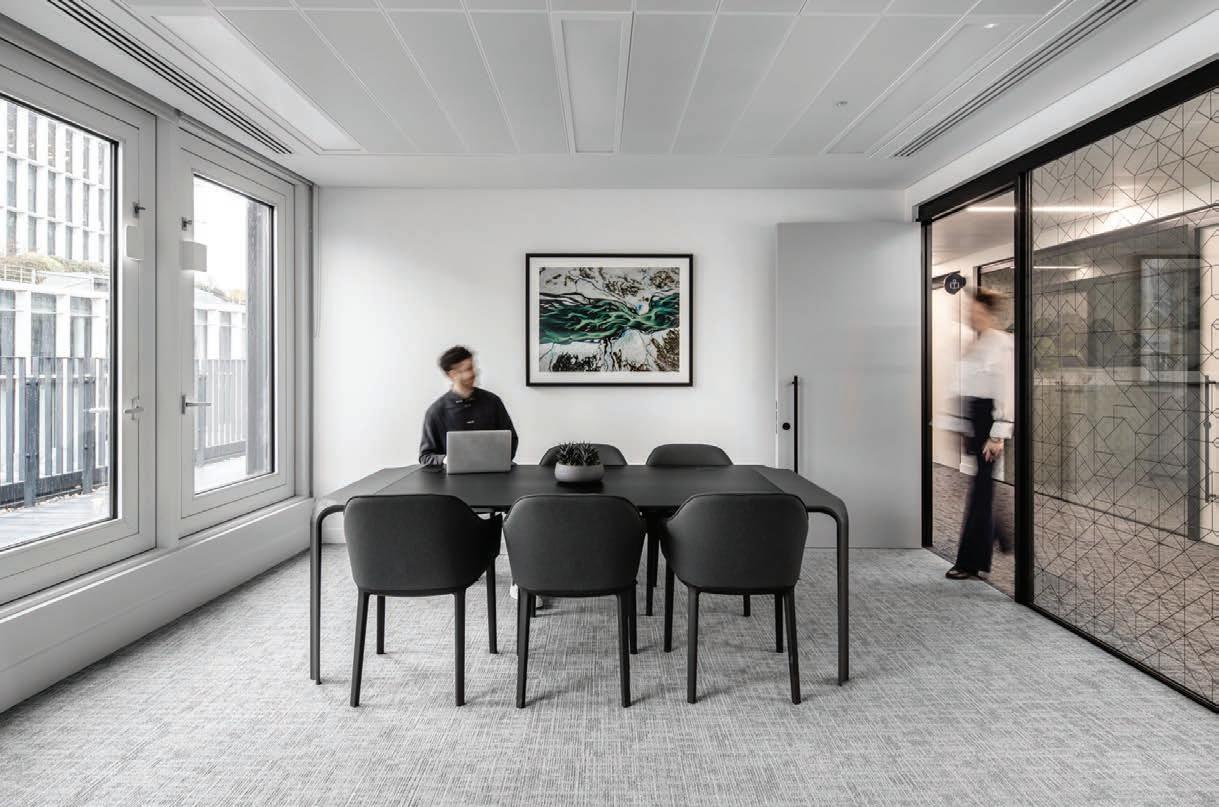
FOCUS SUSTAINABILITY
FEBRUARY 2022 44
Christian Mabey, Managing Director, Optima Products says FMs can create more sustainable commercial spaces by adopting a greener approach to design and operations
REUNITING THE FM COMMUNITY
Facilities Show, the world’s most important facilities management event, brings together the entire FM supply chain to share expertise and explore solutions for making the profession more sustainable and drive transformation. Join us, in person, this May.
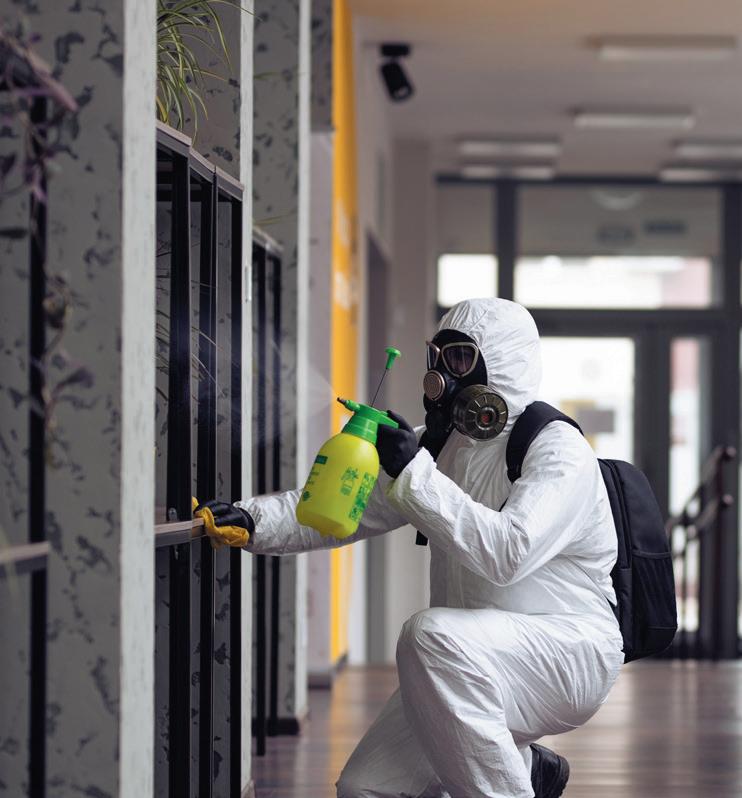
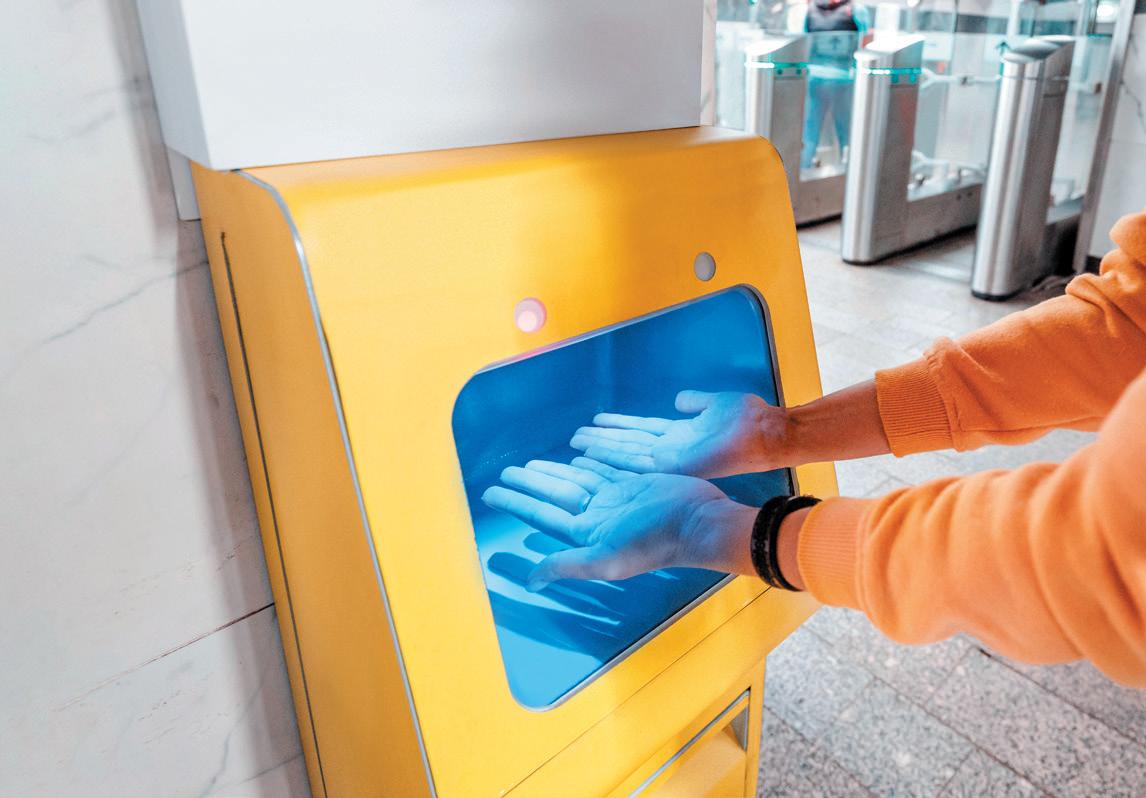

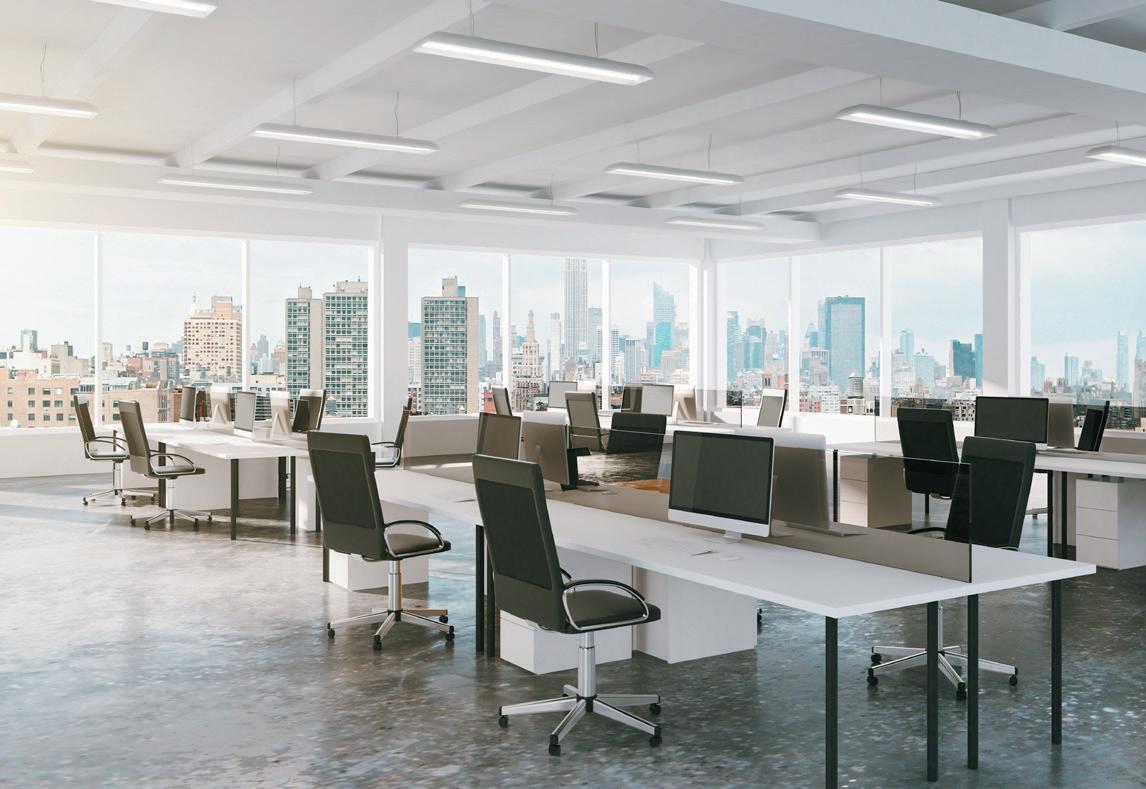

5 INDUSTRY
1 FREE TICKET.
SHOWS.
REGISTER NOW FOR FREE AT FACILITIESSHOW.COM 5 SHOWS. 1 FREE TICKET.
In partnership with:
PROTECTING ESCAPE ROUTES
reliance that mechanical systems have, it is standard practice to provide fire-rated wiring for them, a standby power supply and a stand-by unit, in case of fan failure.
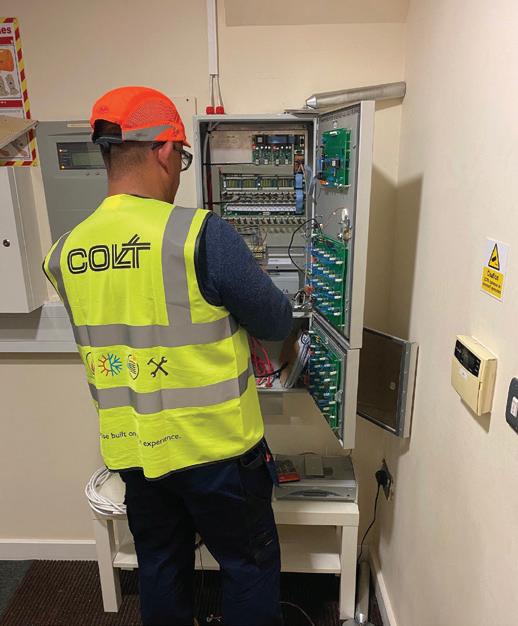
Common building types that need specialised smoke control systems designed and installed are:
Large single storey buildings, such as factories and warehouses
Shopping centres
Multi-storey buildings – residential and otherwise
Buildings with atria
Car parks where gas and fume extraction are required
Smokecontrol systems are designed to protect escape routes for occupants to evacuate safely and unimpeded by the e ects of smoke; assist fire fighters entering the building to find and tackle the fire quickly; protect stock and machines and loss of production capacity; and reduce risk of explosions and roof collapse.

It is important to understand the distinction between smoke clearance and smoke control. Smoke clearance uses a notional amount of ventilation to assist the firefighting operations, allowing firefighters to clear smoke from the relevant building or part of the building, o en a er a fire has been extinguished. Therefore, smoke clearance o ers a limited benefit during the actual event of a fire or the building evacuation and as a result, smoke clearance has a much more simplified design process.
Smoke control, on the other hand, is designed to help during the actual event of a fire. It is designed to remove and restrict the movement of smoke while the fire is still burning, thereby assisting occupants with a safe escape. It primarily does this by extending the amount of time that a building’s occupants have to safely evacuate, without being overcome by the e ects of the smoke.
In order to do this e ectively, it
is usually necessary to estimate the amount of smoke that will be produced, and how much heat will be generated. Therefore, smoke control system design requires careful consideration and expert maintenance.
TYPES OF SMOKE CONTROL SYSTEMS
Natural extraction systems: Have fail safe operation
Are self-compensating
Operate silently
Have no time or temperature limits
Are lightweight Are sensitive to wind e ects
Mechanical extraction systems: Are not wind-pressure sensitive
Are suitable for ducting
Have a fixed extract volume
Require noise and weight considerations associated with them
Have a dedicated air inlet
Have a standby unit in case of fan failure
Natural ventilation has the benefit of not requiring any power or any other functionality to work, (apart from the vents being open) as the smoke just escapes under its own buoyancy.
They also have the added benefit of being ‘self-compensating’, meaning the hotter the smoke gets, the more e ective the ventilators work, due to the increase in smoke buoyance caused by the heat. Mechanical systems extract at one rate only, so regardless of the amount of smoke, it will be extracted at a steady pace. Mechanical systems are also designed to extract smoke at a certain temperature for a set amount of time, e.g. 300 degrees Celsius for one hour. With natural ventilation, these constraints do not apply.
Mechanical systems have the benefit of not being sensitive to wind e ects, as natural ventilators are. Plus, mechanical ventilators can be ducted, which allows them to be used in multi-level buildings. It must be noted that because of the power-
As with many fire safety systems, the concepts of smoke clearance and smoke control are quite straightforward. However, as life-safety systems, they must be robust and comprehensive. The design and equipment must be specific to the building-type and the installation and maintenance of the equipment must also be carried out by a very competent team to ensure the systems work properly when required.
SAFE MAINTENANCE
Smoke control systems are o en looked a er by fire security companies, who may sub-contract this to independent “AOV” or “smoke vent” operatives. But a maintenance provider who isn’t fully aware of the intricacies of maintaining smoke control systems may not know exactly what ‘warning signs’ to look out for or what tests to run to resolve them. All too o en, a simple smoke test is deemed as enough evidence that a smoke control system is working properly for this very reason. However, if your service provider is not doing full motor resistance and load tests, then your system is not being tested to work at maximum duty, which is precisely when it does need to function properly. If they are not testing to the cause and e ect, battery charge rates, etc., then you will not know if the system will function properly in the event of a fire.
FOCUS FIRE SAFETY
FEBRUARY 2022 46
o e is ifferent to re sa s onor o an o t s ec nica irector ic is a ro er aintaine s o e contro s ste is ita to e rotect eo e sinesses an i in s
360-DEGREE APPROACH TO FIRE PROTECTION AT DUBAI OFFICE COMPLEX
A host of fire and life safety solutions from Advanced have been installed to protect 26,000 sq. metres of grade A o ice space in Mohammed Bin Rashid City, Dubai.
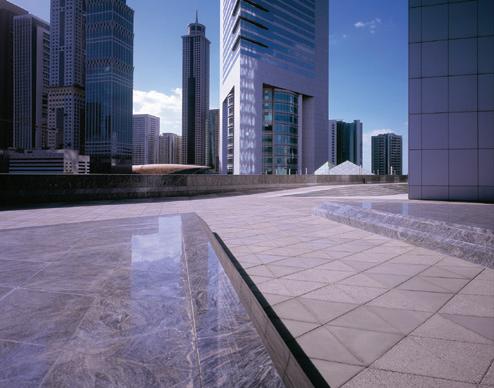
EN 54-approved Axis EN fire panels with integrated voice evacuation and fire telephone systems have been installed across four, seven-storey o ice buildings at the prestigious Dubai Hills Estate Business Park.
Cignetix Systems was responsible for the installation, testing and commissioning of the Advanced Axis EN fire panels at the site. The company also integrated its graphic command centres for system monitoring, and configured its AlarmCalm so ware for false alarm management and reduction.
The Axis EN system comprises five 4-loop panels with integrated telephone systems, two 2-loop and four 1-loop panels as well as a repeater. It is connected to over 1,000 detectors in each of the four o ice blocks, as well as to the site’s PCbased graphical mapping system, which is in turn connected to the Dubai Civil Defence for monitoring.
The system has been designed so that it is easy for new tenants to add more panels and devices to the
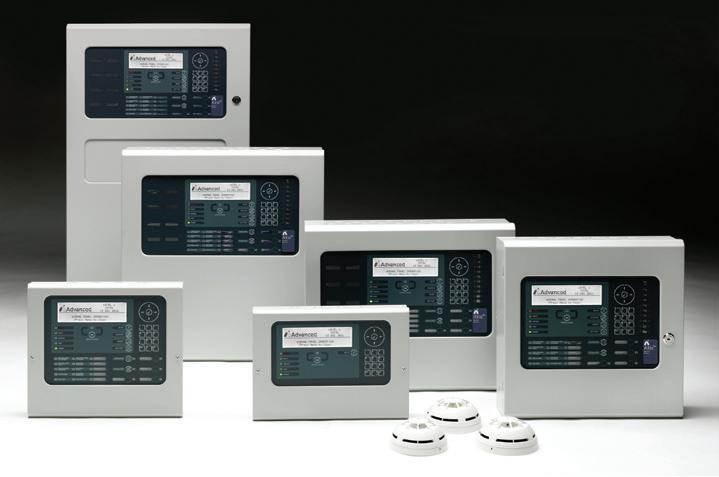
network, depending on their individual fire protection requirements.
Sunil Kumar Gopalkrishnan, Managing Director of Cignetix Systems, said: “Cignetix has worked with Advanced’s solutions for many years, and we were entirely confident that its fire system could deliver the levels of performance and functionality required to o er a high level of protection across this prestigious site. We programmed a two-stage positive alarm sequence to support the site’s false alarm management strategy. We also integrated the fire system with a range of third-party systems including
access control li s, air handling units and smoke control to make it easier for end users to monitor and control the system on a day-to-day basis.”
Gary Craig, Sales Director at Advanced, said: “Cignetix has taken a 360-degree approach to fire protection at the Dubai Hills Estate Business Park. They’ve carefully considered not only fire detection and notification but also false alarm management, graphical monitoring and system integration.
“The result is a sophisticated system that will provide many years of robust and reliable fire protection for the business park’s users and infrastructure.”
The business park was among the first to comply with the Dubai Green Building Rating System, Bringing together a host of sustainable practices and solutions to reduce environmental impacts.
www.advancedco.com 0345 894 7000

JANGRO RAMPS UP SUSTAINABILITY WITH NEW PRODUCT RANGE



Jangro, the largest network of independent janitorial and cleaning distributors in the UK and Ireland, was proud to launch a brand new range of cleaning products at The Cleaning Show 2021, helping its customers to make more sustainable purchases and reduce their carbon footprint. The ntrl portfolio comprises 13 products ideal for cleaning surfaces in a variety of environments, from kitchens through to washrooms.
Produced to ISO 9001 and 14001 QMS standards, the ntrl range includes Washroom Cleaner, Toilet Cleaner, Foaming Washroom & Toilet Cleaner, Foam Hand Soap, Alcohol-Free Foam Hand Sanitiser, Multi-Surface Cleaner, Washing Up Liquid, Cleaner & Degreaser, Surface Sanitisers (available with and without fragrance) Organic Descaler, Kitchen Sanitiser, and an All-Surface Cleaner.
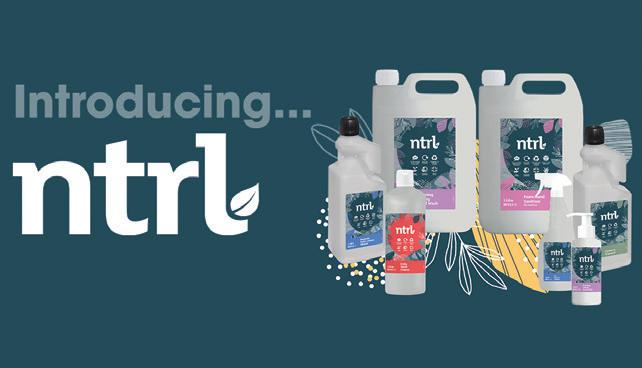
All products within the range feature plant-based extracts and are vegan friendly. Their natural formulas are 100% biodegradable, contain zero petrochemicals, and can reduce the product’s carbon footprint by up to 85%.
The ntrl Washroom Cleaner and the ntrl Multi-Surface Cleaner also contain probiotics. Rather than killing germs with chemicals, probiotics use beneficial bacteria to colonise surfaces, in e ect taking over the area, including deep into hard-to-reach cracks and crevices. This means they can help to reduce the presence of harmful bacteria on surfaces.
All packaging is recycled and recyclable.
www.jangro.net/ntrl
COLD WEATHER WORKING WITH SNICKERS WORKWEAR’S SUSTAINABLE CLIMATE CONTROL
Dressing right and staying comfortable when it’s cold and wet demands the best in Climate Control working clothes.
Continuous work in cold weather produces body heat and sweat. But when your rate of work slows, the sweat cools and you’ll start to feel cold and damp. The solution is Snickers Workwear’s body-mapping Mid-layer working clothes that deliver advanced ventilation to control and regulate the heat from your body.
Made to last from sustainable fabrics such as micro fleece and recycled polyester, they’re great for both work and leisure activities. These garments insulate and keep heat around your body by e ectively creating an air pocket inside your clothes.
They complement Snickers Workwear’s FlexiWork Base-layer undergarments that combine sustainable animal-friendly Merino Wool with polyamide for warmth and ventilation. As well as the Top-layer or ‘outer shell’ AllroundWork and Flexiwork Weatherproof Jackets and Trousers that will keep you warm, dry and comfortable all day long.
www.snickersworkwear.co.uk sales@hultaforsgroup.co.uk 01484

MONTH IN FM FEBRUARY 2022 47 FMJ.CO.UK
854788
SPIROTECH IS ACQUIRING AUSTRIAN COMPANY EDER FOR PRESSURISATION IN HVAC INSTALLATIONS


Spirotech is acquiring the Austrian family business EDER for its technology, knowledge and experience in the field of pressurisation in HVAC installations.
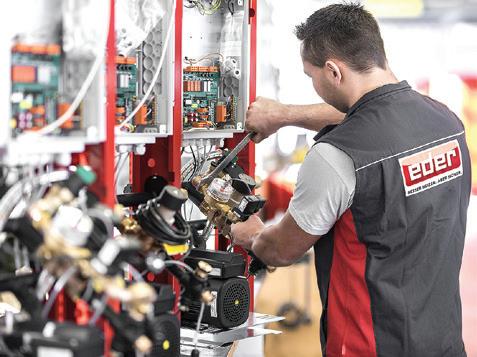
Pressurisation in installations is essential for controlling the quality of the system water and, as a result, for optimising the performance and lifespan.
The two family businesses have been working together for more than a decade. As of 1st January 2022, all pressurisation activities and the approximately 90 employees of EDER Heizung (service provision) and Anton EDER (production and sales) will become part of Spirotech.
Exploiting synergy benefits and growth opportunities
The acquisition of EDER’s high-quality technology, knowledge and services for pressurisation means that Spirotech will strengthen its range of solutions for improving system water quality.
This will enable all customers and partners in the HVAC sector to benefit through Spirotech’s global sales network.
The complementary product portfolio, increase



in scale and integration of both organisations will also provide interesting synergy benefits and growth opportunities. The acquisition will enable EDER to have better access to the global market and to continue its business activities.
Corporate culture and values
EDER Sales Director Alfred Eder said: “Spirotech, like EDER, is a family business in which quality provision has been paramount for over 65 years and where the knowledge and experience of all employees is seen as an important distinguishing asset. This means that our employees will become part of a company with the same culture and values they are fully accustomed to.”
Spirotech Operations will be responsible for the development, manufacturing and supply chain of the expansion and pressurisation products, while EDER
www.spirotech.com
THE NEW PRIME GTX FROM SOLID GEAR. HITECH SAFETY BOOTS FOR THE WINTER
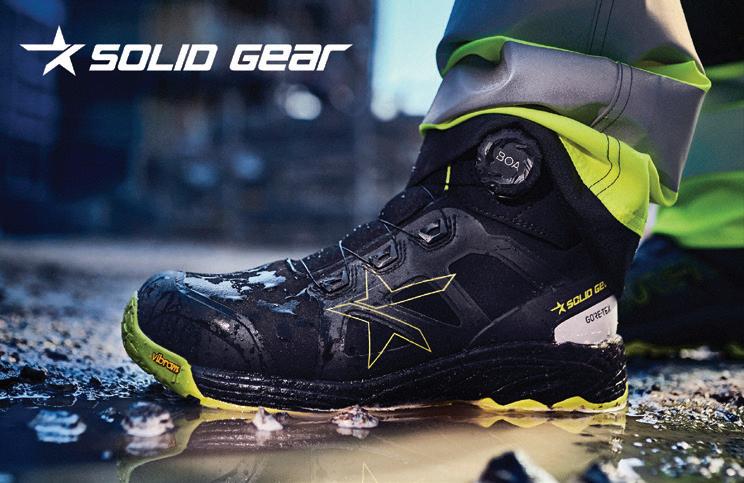
Incorporating some of the most advanced technical features in safety boot design.
With a focus on comfort and S3 safety, Solid Gear’s new and athleticlooking Prime GTX boots are probably the most comfortable and robust footwear you can get for the winter.
This hi-tech safety footwear will keep your feet dry so you can work comfortably in the roughest conditions on site – with e ective protection all day long.
Solid Gear has combined a Vibram® outsole with a full and lightweight EPTU mid-sole to prioritise top-line comfort and stability. The sole combines excellent durability with oil-and slip-resistance and outstanding grip on snow and ice –even at low temperatures. What’s more the GTX combines ergonomics with a torsional rigidity for safety that are enhanced by the durable microfiber upper that has a waterproof and breathable GORE-TEX® membrane.
Comfort and fit are delivered to the highest standard with the GORE-TEX® Stretch Technology in the upper which, together with a high heel counter and the snug BOA® Fit System, make this boot truly a unique experience in safety footwear protection.
www.solidgearfootwear.com sales@hultaforsgroup.co.uk 01484 854788
Sales and Service will become part of the Spirotech DACH sales team at Spirotech Commercial.

Investing in growth opportunities
Spirotech Chief Commercial O icer Paul de Bruin said: “Because HVAC installations are becoming an increasingly important part of sustainable homes, o ices and industrial complexes, we will continue to invest in growth opportunities in the coming years.”
Hans Jacobs, Chief Operating O icer for Spirotech, added: “Combining the knowledge and experience of Spirotech and EDER with innovation and the delivery of quality products and services enables us to provide future-proof solutions better and faster.
“The production of the Spirotech range will remain located in Helmond, in The Netherlands, and will be expanded here in the coming years so that we can continue to meet the expected market growth.
“In addition, we have already purchased additional land in Leisach in Austria to enable us to expand our production capacity for the expected increase in demand for pressurisation products.”
INITIAL LAUNCHES
LUNA DRY, A MORE HYGIENIC HAND DRYER WITH A LOWER ENVIRONMENTAL IMPACT
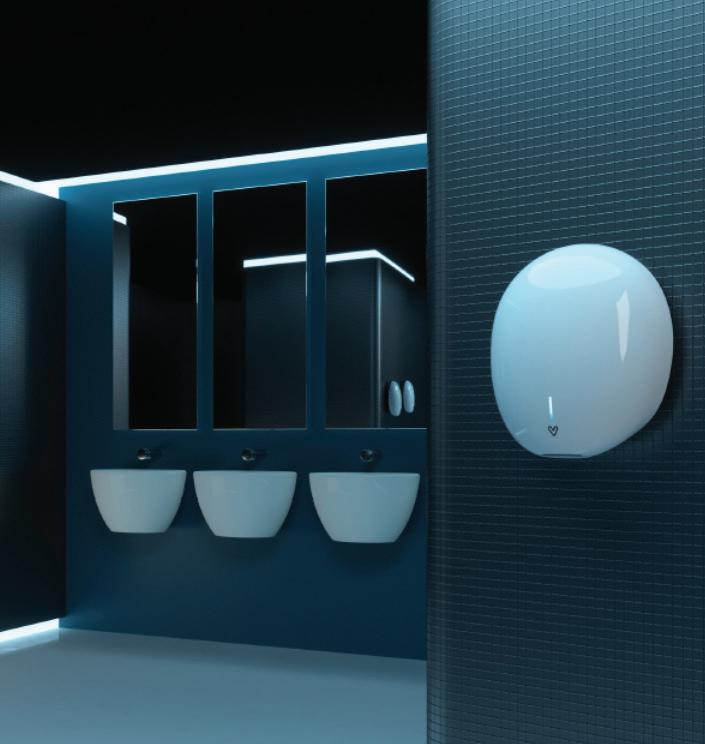
Initial Washroom Hygiene has launched Luna Dry and Luna Mini Dry, the latest innovations to its hand dryer range. Engineered to be Initial’s most e icient and hygienic hand drying solution, both models are available in three high gloss UV anti-scratch finishes.
With an average drying time of 12 seconds, the Luna Dry range can help to play an important role in boosting hand hygiene, given that damp hands have been shown to spread 1,000 times more bacteria than dry ones.
Both models have been engineered using ION Pure Technology. The soluble glass solution contains antimicrobial metal ions that are integrated into the outer case during the manufacturing process, creating a germ and bacteria resistant finish.
In addition, this solution also aligns with businesses’ sustainability objectives –producing up to 90% less CO2 compared to other hand dryers.
www.initial.co.uk
MONTH IN FM
ADVERTISE IN MONTH IN FM PLEASE CONTACT
OR CALL 01322 476811 FEBRUARY 2022 48
TO
DANNY.GRANGE@KPMMEDIA.CO.UK
WHY DO WE FAVOUR RENEWABLES OVER ENERGY EFFICIENCY?
CHARLES HURDMAN, SENIOR KEY ACCOUNT MANAGER AT NOVENCO BUILDING & INDUSTRY UK LTD
It is beyond discussion that the global climate emergency calls for solutions that reduce greenhouse gas emissions and support decarbonisation. O en, the spotlight is aimed at renewable energy as the solution, but in fact, we can achieve 44 per cent of the required global reductions by capturing the potential of energy e iciency according to World Economic Forum.
Investing in existing technologies enables us to become carbon-neutral significantly more coste ectively and at a higher pace than if we solely focus on expanding renewable energy.
Imagine if we could achieve the majority of the carbon-emission reduction targets with solutions already at hand. The socio-economic savings by investing in energy e iciency is a route that deserves more attention. If we invest in already known technologies, we can introduce renewables at a higher pace and in a more cost-e icient way in our endeavours for carbon neutrality because when the use of renewables increases, it reduces the pressure on the growth of clean energy. All fingers point at scaling up sustainability and developing green cities, sustainable products and product life cycle assessments and both renewables and improved energy-e iciency is a prerequisite
for this development.
Energy-guzzling old equipment
Urban areas account for two-thirds of global energy demand and 70% of carbon dioxide emissions. One of the obvious ways to bring down urban energy consumption levels is to invest in energy-e icient heating and cooling in buildings and to electrify transport. If all urban areas and cities in Europe, China and the US invested in energy-e icient buildings, they would contribute 20% to the 1.5°C target of the Paris Agreement.
Ine icient centrifugal and axial fans with non-optimised aerodynamic design are some of the worst energy-guzzlers. But new solutions are available. NOVENCO® ZerAx® axial fans have e iciency levels of 92%, where older fans hit somewhere between 50 to 80%. Cities need a vast number of fans to provide fresh and clean air in tunnels and parking basements, as fire protection fans and for heating and cooling in buildings. Replacing old existing fans with new high-e iciency alternatives, with favourable ROI periods, is a practical and cost-e ective solution.
The NOVENCO EC+ solution combines our ZerAx fans, PM motors and Danfoss VLT variable speed drives, enabling intelligent building ventilation with
the highest possible levels of e iciency and reduced energy, emission, heat gain and sound levels.

Abundance of good-will but lack of action
To bring about this change, we have to embed the good intentions into the specific product specifications driven by ambitious EU legislation and by companies taking on the responsibility. This is the only way we can ensure that the goals for high energy e iciency levels are put into practice in the production and supply chain. If green legislation is not ambitious enough and is not embedded in the processes and procedures at a company, city or country level, we will not reach the global climate targets set out.
In conclusion, the potential of investing in energye icient and sustainable solutions is evident, but there is a need for legislation to overcome the barrier which the higher cost for raw and recycled materials poses. The legislation should support green initiatives and products, so the cost di erence is only minimal – because, in the end, the initial cost drives the decision to buy for the majority of owners and developers.

MONTH IN FM FEBRUARY 2022 49 FMJ.CO.UK
www.novenco-building.com chu@novenco-building.com 0800 681 6009 NOVENCO ZerAx® EC+ fans High-e iciency PM EC motors Danfoss VFD®s System e iciency of 85% Fan e iciencies up to 92% Energy savings up to 50% Lifetime 20+ years Recyclability rate of 98% Plug-and-play – quick and easy to install Ultra-low sound levels Low maintenance costs
THE FLEXSHAFT EFFECT
Regardless of the setting, whether it’s a home, a restaurant or a business premises, one thing is known for sure: every drainage system needs occasional maintenance, either cleaning and/ or unblocking and for that you want a quick, but e icient solution that leaves the pipes clean and free-flowing as if they were new.
FlexSha For The Win
When RIDGID designed the new FlexSha machine, one of the biggest goals was to bring real added value to the professional drain cleaners. A machine that would tackle most so blockages, clean pipe walls, do the job in a short time and with minimal e ort or set-up, allow the camera inside the pipe while cleaning, would become a real value-bringer to the professionals’ business.
And yes, Flexsha proved to be nothing less than just that, a value bringer.
One of the primary advantages of the two small FlexSha machines is portability. The K9-102 weighs about 11 kg, while K9-204 weighs 17 kg – they are easy to carry around just about anywhere. Besides,
FlexSha machines are powered by a widely used 18-volt battery-powered drills, so there’s no need to deal with power cords. All machines come with two chain knockers that expand as they rotate to clean
universal motor powered with I-Clutch™ technology. The i-Clutch protects the cable by stalling the motor when you encounter a hard blockage. The drum is, just like the other FlexSha machines, fully enclosed to keep the job site as clean as possible. The K9-306 aims a minimum set-up and clean up time. It has a telescoping handle, multiple wheels and grab points to make loading, unloading, transporting, and storage of the machine easier.
FlexSha is a new style of drain cleaner; all these machines clean drains at high speed. What makes FlexSha specifically useful is that it utilises a very flexible sha that can not only bend, but also still rotates. The fact it rotates within an outer sheath makes it also safer and cleaner during operation, as the hands don’t touch rotating cables and debris isn’t thrown around while doing a clean-out.
the entire circumference of a pipe.
The latest addition to the FlexSha range is the K9-306 featuring 38m of 10mm cable. It’s less playing in the portability field, but more playing in the power field – the machine weighs around 72 kg. K9-306 is a heavy-duty machine equipped with an internal
FlexSha can be advantageous to use over other drain cleaning methods as they clean drains without needing a water or power supply, which minimises set-up time. Certainly, when you’re considering drain cleaning jobs in confined spaces, very public or hygienic areas and hard-to-reach jobs, FlexSha is your best option.
www.ridgid.eu/gb/en ridgid.gb@emerson.com
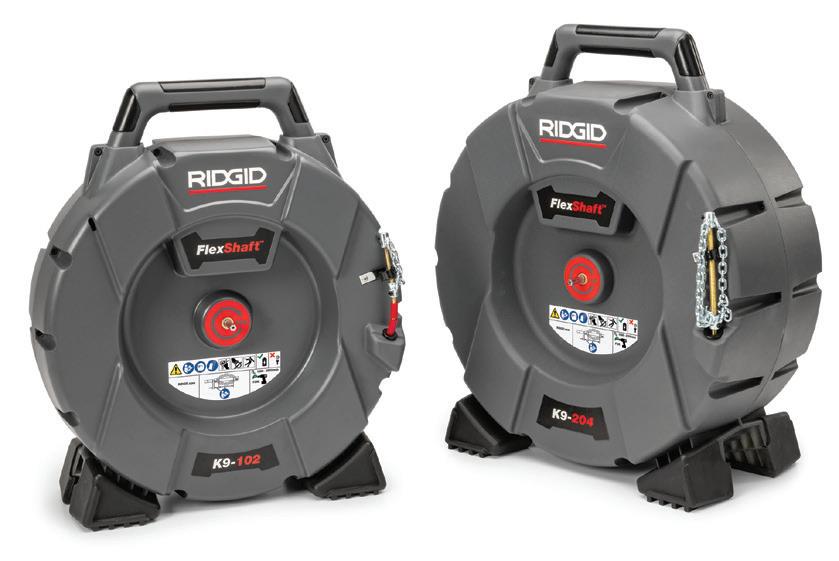
STOCKSIGNS CONTINUES TO DELIVER FOR KNIGHTS BROWN
A combination of excellent customer service, specialist support and an extensive portfolio has meant that for another yearStocksigns remains the preferred supplier of site and road safety signage for Knights Brown. The successful relationship recently led to Stocksigns supplying a key project in Gloucestershire to help improve general safety.
Based in Ringwood in Hampshire, Knights Brown has a broad portfolio spanning a number of sectors. As such, the multidisciplinary construction company has a constant requirement for a wide variety of temporary and permanent site and road safety signage. In 2014, Knights Brown was approached by Stocksigns to o er its services. A er an initial agreement to supply some temporary site signage, the two companies have since maintained a strong relationship over the last seven years. In fact, Stocksigns has become Knights Brown’s go-to supplier for all its signage needs.
At a recent project, Stocksigns supplied products for use at the junction of the A46 and A4173 in Pitchcombe, Gloucestershire. As part of Gloucestershire County Council’s £150 million scheme to improve its highways, Knights Brown installed a series of designated crossing points, widened the junction and raised the level of the surrounding roads. Stocksigns provided a number of mounted direction, speed limit and give way signs that helped to improve motorist and pedestrian safety.

www.stocksigns.co.uk


WINTER OFFERS FROM TESTO
Don’t get caught out in the cold this Winter! Purchase a testo thermal imaging camera for a chance to win a brand new fully electric Nissan van worth £26,805! Starting from 06.01.22 any thermal imaging camera you purchase is eligible. Each product purchase equals to one entry, simply register your products on the testo website to enter: https://www.testo.com/en-UK/free-van
O er across: Testo thermal imaging cameras Fancy a thermal imaging camera? Purchase before 30.04.22 and be in for a chance to win!
Characterised by superior price performance ratio testo thermal imaging cameras stand out - thanks to their excellent image quality and timesaving additional features, whether for maintenance engineers or energy consultants, industrial applications or in homes, entry-level user or pro – we have the right solution for every application including:
• The testo 883 - perfect for professionals.
• The testo 872 - perfect for allrounders.
• The testo 868 - perfect for entry-level users.
• Plus testo flue gas analysers and digital manifolds
For another chance to enter purchase a testo flue gas analyser or digital manifold and you’ll be in for a chance of winning a brand new electric van. O er ends 30.04.22. Terms & Conditions apply.
www.testo.com/en-UK/free-van info@testo.co.uk 01420 544433

MONTH IN FM TO ADVERTISE IN MONTH IN FM PLEASE CONTACT
OR CALL 01322 476811 FEBRUARY 2022 50
DANNY.GRANGE@KPMMEDIA.CO.UK
BORG & OVERSTRÖM LAUNCH NEW DIGITAL TAP SYSTEM FOR EVOLVING WORKSPACES
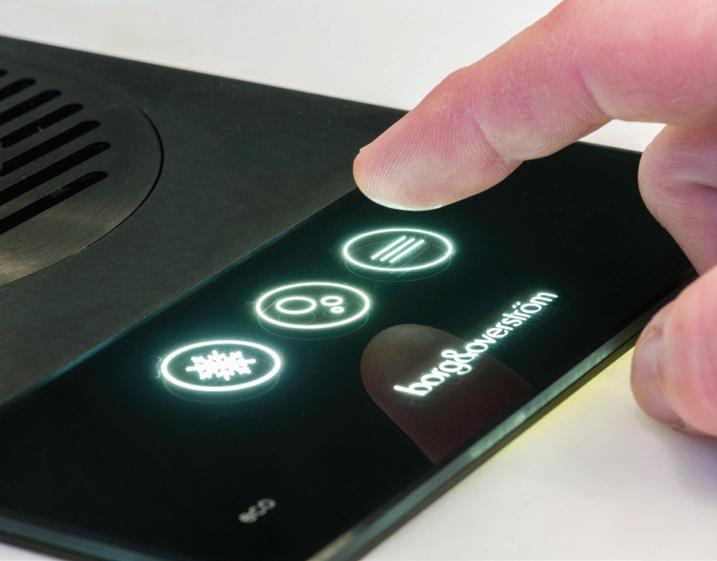


and Development. “It’s even more compact than previous undercounter units. It’s fitted with the new R290 eco gas and DryChill®, our most advanced sealed cooling system. It’s consistently energy-e icient and has a low-light sensor which puts the appliance into standby mode when not in use.”
The T2 can also be factory-fitted with an advanced ultraviolet water purification system. ViovandtTM is a mercury-free and chemical-free water purification system for water dispensers. It's maintenance-free and uses powerful UV-LEDs to inactivate harmful microorganisms present in the water.
This digital tap system is the first of five innovations to be unveiled by Borg & Overström in 2022. Also launching this year is a sensory development and an IoT ready appliance in addition to new water dispensers.
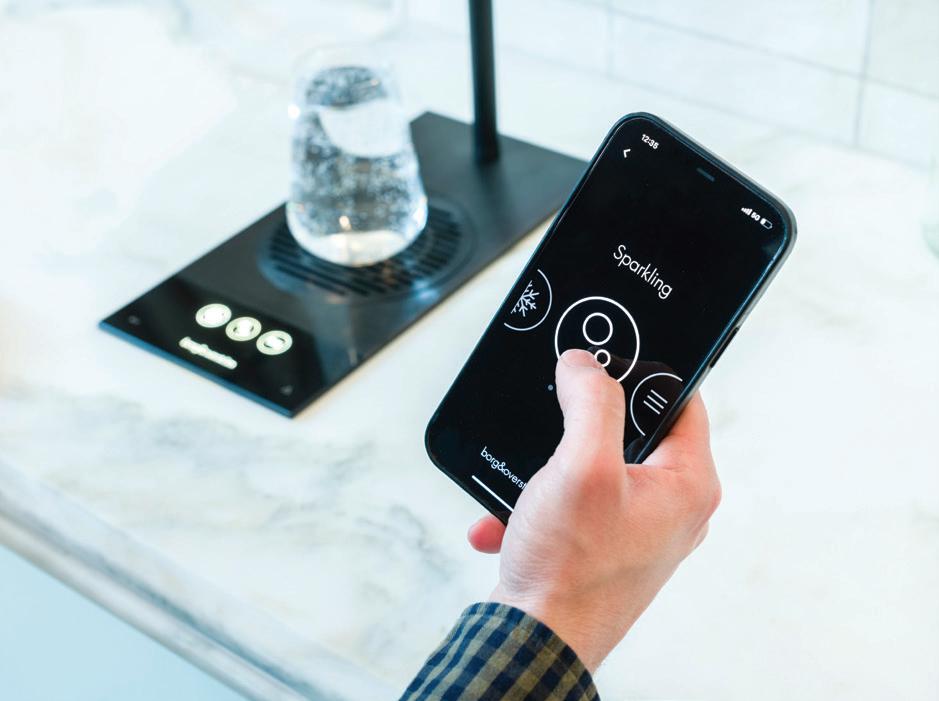
Borg & Overström, designers and makers of world-class water dispensers, has launched a new advanced digital tap system for modern o ices and communal workspaces.
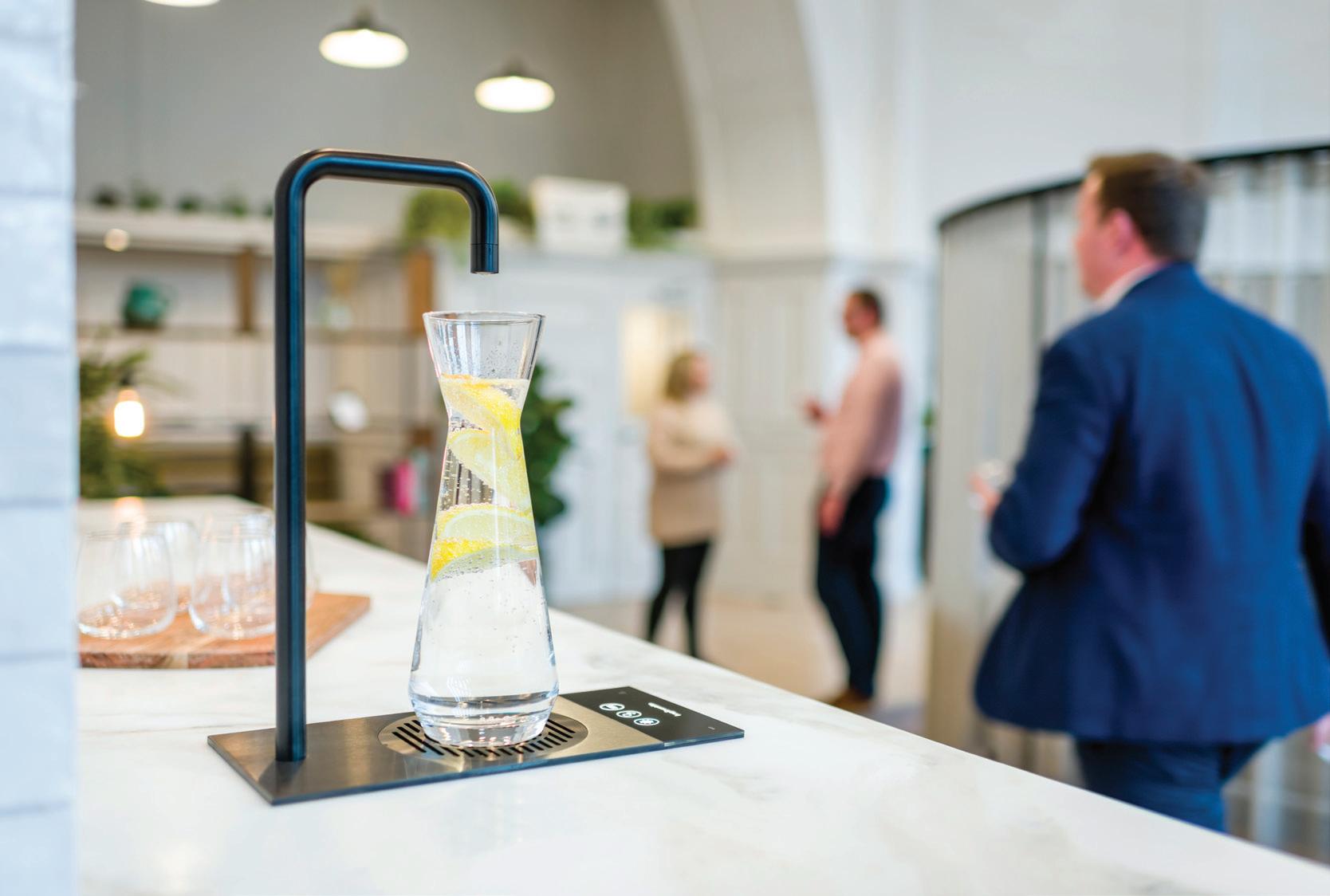
The T2 combines a bold yet practical design with Borg & Overström’s most advanced digital dispensing technology. It’s designed to bring peace of mind and convenience to managers of evolving workplaces, with its hygiene and
performance features.


“The o ice is changing, and water dispensing technology needs to keep pace,” says Dan Lyon, Managing Director. “Adequate hydration is essential for both physical and mental wellbeing, so it’s important that when sta return to the workplace, they feel confident using water dispensers.”
The T2 is a next-generation, high-capacity, fully digital water dispenser. It includes built-in Bluetooth® capabilities for touchfree app dispensing, a discreet touch panel with an antimicrobial coating, built-in drip tray, discreet ventilation, and a high-capacity undercounter system.
“The new undercounter processing unit is entirely new from the ground up and is the new power-house of Borg & Overström water dispensers,” says Simon Bryant, Head of Research
“The team is eager to share new developments with distributors and their customers”, says Dan Lyon, Managing Director. “During the pandemic, we deepened our understanding of so ware capabilities within our sector and developed products further and faster. We’re once again raising the bar for water dispensers.”
MONTH IN FM FEBRUARY 2022 51 FMJ.CO.UK
www.borgandoverstrom.com/t2 01362 656 993
FIBO’S WALL PANELS: THE ANTIBACTERIAL SOLUTION
Specifying products with inherent hygienic properties is vital in order to limit the spread of bacteria – especially in healthcare and education settings. As such, Fibo is pleased to announce that all of its waterproof wall panels have now been certified as antibacterial.

In response to the industry demand for certified hygienic products, Fibo’s waterproof wall panels have now been independently tested and verified in accordance with ISO 22196:2011; in addition to an assessment in accordance with the limit value stated in JIS Z 2801. This certification confirms that the wall panel’s surface is able to inhibit the growth of microorganisms that form E.coli and Staphylococcus aureus – bacteria that can cause various infections, or even lead to pneumonia and other serious illnesses.
While initially developed for installation in bathrooms, Fibo’s wall panels are the perfect solution for other areas where cleanliness and functionality are important, such as kitchens, hallways and corridors.
In addition to the functional aesthetic and antibacterial qualities, Fibo’s wall panels are also very quick and easy to install; they require no specialist tooling and minimal wall preparation, thanks to the company’s unique Aqualock tongue and groove system.
Fibo’s wall panels also come with a market-leading 25-year warranty.
www.fibo.co.uk sales@fibo.co.uk
AHAC
COOL NEW FEATURES
OpSys Solutions Ltd announced an update to its a er-hours AC automation platform 7NOX. The Version 2.5 update adds enhanced security features and expands customisation options for admins.
New features include:
• CUSTOMISED LOGOS — Add your company’s logo to monthly reports to tenants.
• FORCED PASSWORD RESET — Prompt new users to reset their passwords for added security.
• USER ACCOUNT REACTIVATION — Add a lapsed or deleted user account.
• CALENDAR SELECT FEATURE — New click-and-drag makes date and time selection faster.
The 7NOX app is a cloud-based, mobile platform built to streamline the scheduling and billing process for a er-hours air conditioning requests. 7NOX users can easily book appointments anywhere via their smartphones, tablets or desktops.

“This update gives FMs even more control over their AHAC automation settings while letting them provide a seamless experience for their tenants,” explains Lead 7NOX Designer, Danny Iskandar. OpSys Solutions Ltd is a hardware and so ware developer of building integration products.
ETM GROUP PRAISES ELIS FOR SUPPORT DURING
THE PANDEMIC
London bar, pub and restaurant group, ETM, has praised its workwear, linen, washroom and mats services supplier, Elis, for its support during the pandemic.

Elis began providing services to ETM Group during the pandemic in 2020 and supported ETM with a flexible approach to the service roll-out and with a rental model that meant there were no large upfront costs. The Elis team supplied items to the venues when they were able to reopen, scaling up and down as necessary and working in partnership with ETM during this challenging time.
Elis is providing ETM Group with over 12,500 laundered workwear and linen items a week. It supplies its workwear and linens on a cost-e ective rental basis, so there are no up-front purchasing costs. There is also flexibility to make additions, reductions, and free size exchanges to reduce costs when employees change.
For organisations of all sizes, Elis collects used workwear, professionally launders and maintains it, and returns the clean workwear to an agreed schedule, ensuring that su icient workwear is available, and that those wearing it are comfortable and look the part.
Elis is also providing a range of washroom products and services to meet each venue’s requirements. The service, including regular scheduled service visits to each venue, is run by the local Elis site, with regular communication from the local account manager.
https://uk.elis.com/en 0808 1698265
ROBUST BINS TO KEEP GREEN SPACES CLEAN
Leafield Environmental, the UK’s leading designer and manufacturer of litter and recycling solutions are proud to working together with local councils to provide robust bins to keep green spaces clean.
Leafield’s best-selling Heritage Square XL Litter Bin houses a 240-litre wheelie bin inside allowing more than double the amount of litter to be collected than a standard litter bin. The wheelie bin makes it easy and simple to empty. Its robust double wall structure for ultimate rigidity and durability makes it ideal for all-year round use. The bin allows space for up to four posters to use to promote campaigns or place advertising. Bespoke colours and personalisation of labels are available upon request.
Dimensions: 1415mm (H), 800mm (W) & 850mm (D).



The Heritage Square XL is also available as a Recycling Bin due to the increased demand for on-the-go recycling. It is the same unit as the Heritage XL Litter Bin, but it can now collect mixed recyclables that is clearly identified by the WRAP compliant labels and aperture colour. Leafield’s standard black bins are made from 100% recycled material.
The Heritage Square XL Litter and Recycling Bins can be manufactured with an antimicrobial protection to inhibit the growth of microbes by up to 99.9%.
www.leafield-environmental.com (0)1225 816500 envinfo@leafieldenv.com
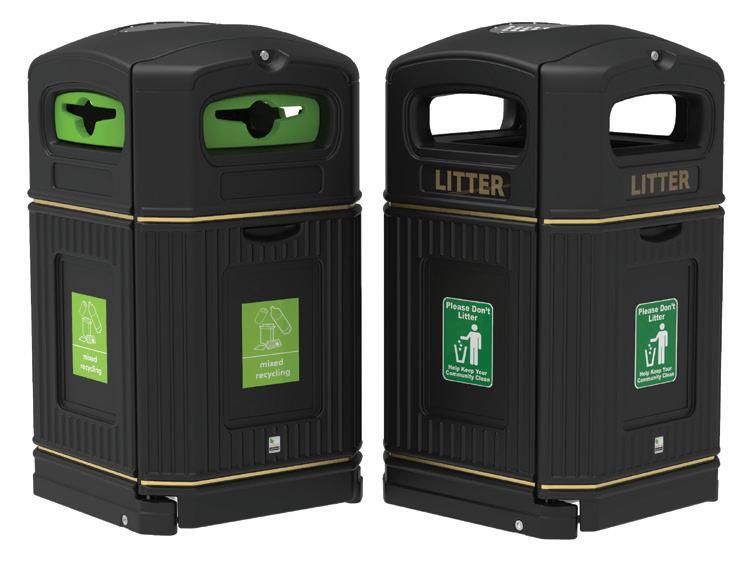
MONTH IN FM
ADVERTISE IN MONTH IN FM PLEASE CONTACT
OR CALL 01322 476811 FEBRUARY 2022 52
TO
DANNY.GRANGE@KPMMEDIA.CO.UK
7NOX JUST
AUTOMATION APP
GOT 4
www.7nox.com sales@opsyssolutions.com +64 09 972 9163
A DEMAND FOR LABELLING SOLUTIONS

With the impact of COVID on businesses and the rise and multitude of changes to regulations that BREXIT has brought to the UK, there is a demand for re-labelling warehouses, o ices and products. The last two years also drove a rise in awareness for chemical and dangerous products to health and safety labelling and signage, a demand which continues and is set to rise throughout 2022.
Avery UK who have been supporting homes and businesses, big and small, for nearly nine decades, have had to evolve the business and their range to meet the needs and the demands of their customers’ orders. Their UK manufacturing site, like many, has had to overcome challenges with the supply chain for deliveries and shortages of material however production has been consistent throughout.
How Avery UK can help?
Where Avery stands out within the market is perhaps most evidenced in the high performance of its products and they know the importance of this when it comes to Chemical and Product labelling. Selecting the right label, to get the job done right, first time for product compliance cannot have any shortcuts. For them, it’s always been about o ering simple solutions, designed and adapted to make your life easier.
Avery UK has a range of professional-grade labels and other supplies that are built to stand up to challenging conditions and tough working environments. Each and every product undergoes significant testing by its technical team, o ering high-performance levels and overall product quality.
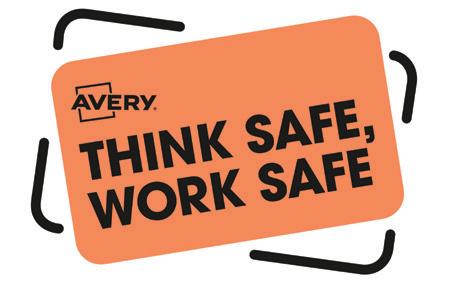
Over the last three years, Avery have adapted and invested into unique labelling technologies in the aid of helping their customers, such as Ultragrip and JamFree, a selling point unmatched in the market, handy when printing their labels. More recently to combat the spread of viruses they launched an adhesive antimicrobial-coated film, in several shapes options and sizes including A5 rolls for larger surfaces like tables, desks and counters.
To help navigate their website a dedicated hub has been designed for facility management and industrial solution labelling. It o ers simple navigation and available access to a library of handy blogs and bite size videos of how di erent labels can be used.


Free branding and personalisation So ware
Always being developed and modernised to the changing requirements and demands of their customer, Avery UK o ers free to access so ware that allows its customers to create, design, brand and personalise their labels.
You can select from a range of pre-populated designs which can be edits to your business and duplicated over a range of label sizes or design your own while still using icons and images from their library. The so ware allows you to download your design to PDF and save to print

or to use their Avery ‘WePrint’ Service.
Within this so ware is their GHS Wizard.
GHS product labelling and GHS Wizard by Avery Product labelling & safety signs are there to help identify hazardous chemicals, heighten safety measures in working areas or to provide important safety information or ingredients on products.

All hazardous chemicals are required to hold explanation of hazards and toxicity of the content covered by GHS and aims to enhance the protection of humans, our environment and transportation conditions.
Avery UK’s GHS Wizard walks you through the process for creating compliant GHS chemical labels step-by-step. Signal words, hazard and precautionary statements and pictograms are automatically filled in when you enter the chemical name or CAS number.
All of this combined resonates their brand strap line of Our Labels.Your World.
MONTH IN FM FEBRUARY 2022 53 FMJ.CO.UK
www.avery.co.uk/industrial-labelling-solutions uk.dealersupport@avery.com 0800 805020
FIRE SAFETY COMMITMENTS TO BE MORE RIGOROUSLY ENFORCED
ANDREW SHANKLAND, MANAGING DIRECTOR, LINEAR BUILDING COMPLIANCE
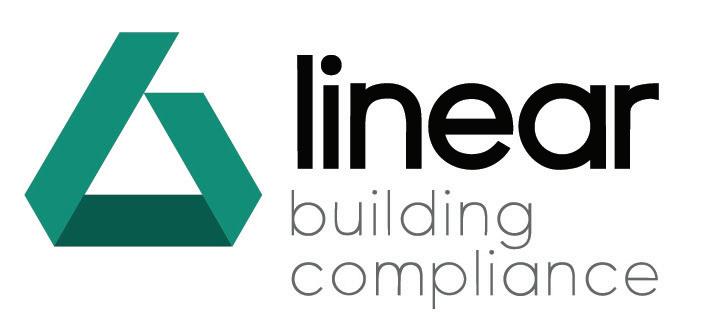

In recent years, fire safety has taken centre stage in the construction industry for all the wrong reasons. Following the tragic Grenfell Tower fire in 2017, and the subsequent Hackett Review, the focus on fire safety measures and individual responsibilities are set to be overhauled as we build on the learnings and recommendations from this terrible incident. For some time, we have been calling on building owners and managers to act and adopt
a new mindset to ensure they are meeting their responsibilities in relation to Fire Safety. The time is right to act in advance of the new guidance which will form the basis of the Building Safety Bill, anticipated to become law soon and change the face of the UK construction industry. The clear message here is that it is no longer acceptable to cut corners or pay lip service to regulations, as lives are truly at stake.
Our experience teaches us the importance of e ective compartmentation of a building. This is the very bedrock of fire safety and one of the important facets of this compartmentation is provision of fire doors. These should not be treated as normal doors as they are vital elements of lifesaving equipment. A fire door set can also assist in stopping the spread of fire to other areas of a building. As such, it is paramount to ensure all fire doors are installed and maintained in compliance with the manufacturer’s instructions, in order to save lives and minimise damage in the event of a fire. The ability for fire doors to make a material di erence to the outcome of a fire cannot, and should not, be underestimated.
Looking ahead to the new proposed legislation, this will make it a legal requirement that all fire doors are installed and maintained in line with manufacturers’ guidance. So, in short this will put the onus on the building owner or manager to

ensure that any installation or maintenance must be carried out by fully qualified, third-party certified installers, being legally enforceable, any failure to do this leaves building owners/managers open to criminal prosecution.
The simple way to minimise any risks, and avoid potential prosecution, is to ensure your fire doors and fire compartmentations are inspected and maintained by a reputable third-party certified installer, thus showing due diligence, and preventing possible future litigation.
Sadly, our experience shows us that there are still significant numbers of poorly installed fire doors and ine icient compartmentation measures within the current built environment, o en in newly built premises. It is also worrying to consistently see many building owners and managers still failing in their duty to carry out competent Fire Risk Assessments in their premises with those that do them, o en ignoring the recommendations contained within the reports.
At Linear Building Compliance we have adopted a dedicated and comprehensive approach to the provision of expert solutions covering fire compartmentation, fire doors to ensure compliance. Early engagement and collaboration are the keys to the most successful outcome, once again we would call upon the industry to act now and make changes ahead of legal enforcement, as it may protect your reputation, protect from potential prosecution but most importantly save lives.
MONTH IN FM TO ADVERTISE IN MONTH IN FM PLEASE CONTACT DANNY.GRANGE@KPMMEDIA.CO.UK OR CALL 01322 476811 FEBRUARY 2022 54
https://linearuk.com/linear-building-compliance LBCenquiries@linearuk.com
ELIOR HIRES DIRECTOR TO HEAD UP NEW INNOVATION TEAM


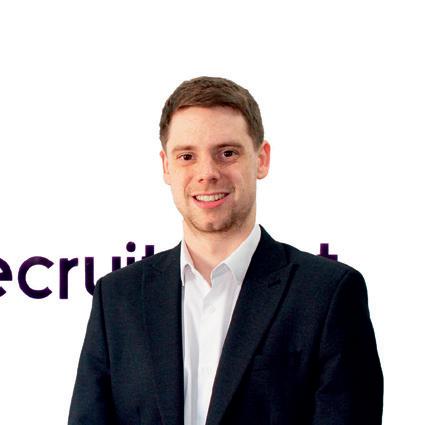




Contract caterer, Elior, has appointed Claire Small to take on its newly created Director of Innovation role.
Industry acclaimed with commercial acumen and a strong digital focus, Small leads Elior’s new eight-strong innovation team. Transforming insight into opportunities, they are responsible for delivering digital, concept development, photography and menu management across its UK business.
Prior to joining Elior, Small held senior roles with hospitality brands including SSP UK, The Restaurant Group PLC and ETM Group, helping translate consumer trends into creative commercial solutions. Some of Small’s career highlights include bringing sporting elements like ticketing and vertical dining to key venues, boosting profile and customer spend through immersive experiential dining. Small’s achievements and contributions in the hospitality industry have also been recognised, notably with her listing in the ‘Women in Hospitality, Travel and Leisure’ Index (2021), and being tipped as a Future Leader on the 30 Under 30 Restaurant & Marketer Innovator list (2018).
ISS APPOINTS COO FOR GOVERNMENT, HEALTHCARE AND INFRASTRUCTURE BUSINESS

ISS has appointed Martin Burholt as Chief Operating O icer for its Government, Healthcare and Infrastructure business.
Burholt brings to ISS over 30 years of leadership experience in customer service industries, the majority of which have been for multinational out-sourcing businesses across public, private and charitable sectors. His background includes managing large, complex facilities management accounts in central and local government, healthcare and education sectors in the UK, together with support services and FM contracts in the Middle East. He is Non-Executive chairman of Freedom Leisure, a leading not-for-profit leisure trust.
MCGREGOR-SMITH NAMED NEW PRESIDENT OF THE CIPD


The professional body for HR and people development, the CIPD, has appointed British Business Executive and Politician Baroness Ruby McGregor-Smith as its new President.
Renowned for her distinguished career as a business leader, McGregor-Smith held the role of CEO at Mitie from 2007 – 2016, and is amongst the few women and first Asian woman to lead a FTSE 250 company.

She sits in the House of Lords and is Chair of both Mind Gym plc and the Institute of Apprenticeships and Technical Education. She is also President of the British Chamber of Commerce. Acknowledged as a top-50 female word business leader by the Financial Times, she was Chair of the government’s Women’s Business Council from 2012 to 2016.
In particular, she has been a champion of improving diversity and opportunity in organisations, and led the government review Race in the Workplace: The McGregor Smith review in 2017 and subsequent follow-up reports.
FACILITIES MANAGEMENT JOURNAL JOBS
FEBRUARY 2022 55 FMJ.CO.UK
CAREERS - PEOPLE
FM
There are clear benefits to a remote working culture. Greater autonomy and flexibility allow workers to structure how they spend their days, which can lead to increased productivity. According to a recent Access People poll, half of workers prefer a hybrid working arrangement, working some days from home and some days from the o ice. A significant 41 per cent prefer to work entirely from home. Less than 10 per cent would like to return to the o ice full time. These figures reflect a significant shi in mindset of the majority of the workforce.
A permanent switch to hybrid working could have both a positive and negative impact on both managers and employees. On the positive side, it provides employees with the ability to achieve greater work-life balance by having the freedom to choose how they spend their time. It also allows businesses the opportunity to innovate, upskill their workforce and make greater use of the technology available to connect workers and streamline processes.
However, amid this rapid change we must always keep the mental health and wellbeing of our people at the forefront of our minds.
THE MENTAL HEALTH COST
A recent poll by the IWFM revealed that one in five (20 per cent) reported their health had su ered in 2021 as a result of working from home, while one in three (33 per cent) complained that their employers had failed to equip them to work e ectively from home. For those accustomed to commuting to the o ice every day and seeing colleagues, and those for whom socialising was an important part of their lives, the pandemic has been a lonely experience. There has been a clear impact on mental health as a direct result of lockdown measures, which also impacted workers. Some became overwhelmed with the unclear divisions between work life and home life, and it became di icult for employers to have sight over the wellbeing of their workforce because of a lack of technology to support this rapid change.
So, despite the benefits of remote working, and the fact that many employees want to continue working at least some days at home (91 per cent), there is also a great indication that the mental health of workers is continuing to decline. This is especially true when it comes to those who report su ering from anxiety.

easier for them in order to alleviate their concerns. This might mean surveying employees to enquire about what equipment is needed, providing regular opportunities to check in, and doing a technology audit to ensure that the systems that are being used to connect employees are fit for purpose in the modern working environment.
REMOTE ONBOARDING
In addition to focusing on technologies that have the power to connect workers and keep them safe, remote onboarding is another aspect for management to consider. Remote onboarding strategies must keep the workforce of tomorrow in mind while demonstrating that their employer is flexible to their needs. A poor remote onboarding experience is detrimental to those all-important first impressions and a ects how engaged employees are with their new employer. Organisations with robust employee engagement practices see employees who are five times more engaged in achieving organisational goals and 35 times more likely to feel part of a unified team driving business results.
We have the power to support people's wellbeing while also doing our jobs e ectively during this challenging moment in history. The priority is finding the right balance between work and life, and helping our workforce navigate this change successfully.
Salary: Up to £90,000
Salary: £41,621 to £50,091
Location: Westminster https://bit.ly/34s7ozi DEPUTY
Salary: £73,500 - £90,000
Location: UK Wide https://bit.ly/3ufMQF2
Entering into endless streams of video calls can be mentally and physically draining, resulting in a sensation that has come to be known as Zoom fatigue, which impacts certain demographics harder than others – namely women and new employees who are going through a remote onboarding process. Days can begin to blur together, and burnout can be reached faster without the distinction between home and work.
THE ROLE OF MANAGEMENT
There are things we can do to address the problem. Managers and HR leaders have the critical responsibility of helping their workforce navigate this transition by prioritising the mental health and wellbeing of their workers.
When asked about the health and safety challenges within their organisations, concern for wellbeing of remote workers topped the list, with 44 per cent of those surveyed citing this as the main obstacle to tackle. This indicates that leaders within organisations need to have open communication with their employees to find out how the process of remote working can be made
Let's take a step back and look at how far many of us have come over the last (nearly) two years since the pandemic began. In response to a crisis, many industries were able to move mountains to support their workforce as they entered into a new era of remote work, utilising technology to make a di erence in people's lives and reach organisational goals. There's every indication that this is set to continue, and the possibilities are endless for what can be achieved if we continue to put the wellbeing of our people first.

FACILITIES MANAGEMENT JOURNAL JOBS
ALONE As organisations contend with ongoing working from home, Charles Butterworth, Director, Access People considers the negative impact of remote working and onboarding on employee wellbeing LATEST JOBS ON FMJ
OF ESTATES ASSET MANAGEMENT
HOME
HEAD
per annum
OF WORKS – MECHANICAL
Location: UK Wide https://bit.ly/32M8RzV CLERK
annum
per
DIRECTOR, FACILITIES MANAGEMENT
per annum
jobs.fmj.co.uk Over 250 jobs live on site FM CAREERS - RECRUITMENT FEBRUARY 2022 56
PERSONAL TOUCH
trends and requirements. At present, it is not only changes to content or delivery methods that are required, but a complete overhaul in how employees are supported by their employer.
Personalisation should be the main force driving the revamp of learning and development programmes. Hybrid working, the great resignation, and demands for flexibility all share one thing in common: the way they impact people di ers vastly from person to person. Individual circumstances define how we work more than ever before, and people development programmes should be adapted to account for that. Right now, such programmes do not reflect this reality, with less than half (39 per cent) of learning and development experiences currently adapted to the individual. For organisations to build truly e ective strategies, personalisation must be high on the priorities for 2022.
BUILDING A DIGITAL STRATEGY FROM THE GROUND UP
Hybrid working’ was a phrase that entered the popular lexicon in 2021, but it certainly isn’t one that will be leaving us anytime soon. The number of days worked from home has increased fivefold on pre-pandemic levels, with many employees and businesses favouring a hybrid workplace.
There is a myriad of reasons for this shi , with the ongoing uncertainties around the COVID-19 pandemic being an obvious, yet perhaps sometimes overstated one. The pandemic was what initially propelled us to work remotely, but the appeal of blended working is what has kept it thriving. Employees are requesting a work life that fits around their personal life – increased demands for flexibility were the most commonly cited issue to have occurred within organisations in the past 18 months by HR leaders.
At the same time, hybrid working is not always an easy ride. Employees have less direct face-to-face contact with their colleagues and managers and upskilling in a digital world can be more complex. At the start of a new year, now is the

perfect time to reassess learning and development programmes for the hybrid world and set sta up for success in 2022.
A YEAR DEFINED BY CHANGE
The developments we have seen to the world of work in 2021 have been astronomical. In the space of 12 short months, we’ve moved from viewing remote working as a temporary stopgap, to implementing it into our long-term strategies. Alongside this we have seen the Great Resignation, with many people not only changing job roles, but sometimes even changing career paths entirely.

Despite these great transformations in the world of work, learning and development programmes have in many instances not been adapted in line with the times. Almost three quarters (73 per cent) of learning and development professionals have employees who are disappointed with the training and development made available to them, in a year when employees need access to high quality support more than ever, to deal with the rapid changes in their professional lives. Employers have
now had ample time to digest these transformations, meaning that now is the time to implement strategies that accept change and adapt development plans accordingly.
INVESTING IN PEOPLE THROUGH UNIQUE DEVELOPMENT PROGRAMMES
A vast majority (92 per cent) of leaders expect their budget for employee training and development to increase in 2022. This is positive news for employees and leaders alike, as an increased resource pool means that many more opportunities are open to companies to support their employees. Leaders must take this opportunity to reassess their existing plans, accounting for new needs that have arisen due to the rapidly changing world of work, and planning for a new and improved o er. However, this process may not be as easy as it seems. The learning and development programmes currently on o er in many organisations have not seen radical transformation since their conception, rather minor tweaks in the content o ered in accordance with new
For personalisation of people development programmes to be truly e ective, leaders should be leveraging the latest in digital technologies to support their mission. For almost two years now we have been relying on approaches that use technology to imitate the physical o ice, as much in learning and development as in daily business operations. Now that we have said goodbye to fully present working for good, we must too say goodbye to digitally adapted approaches to work and hello to digitally native strategies.
As learning and development programmes become increasingly personalised, companies should take take the opportunity to revise the technology they are using to implement them. Our research found that two thirds (67 per cent) of leaders are still relying on e-learning platforms for their training and development o ers, which largely imitate the physical classroom and encourage passive information consumption. Now that the latest developments in AI and AR are coming to the world of business, it is time that HR leaders implement these technologies to create a more interactive, personalised platform for learning and development. Building a strategy that combines personalisation and immersive technologies in perfect harmony is the most e ective way to start the new year strong and invest in your people’s success.
FM CAREERS - TRAINING FEBRUARY 2022 57
Personalisation should be the main driving force in the revamp of learning and development programmes, says Juliane Sterzl, SVP EMEA at CoachHub
Less than 1/3 Of UK’s top jobs are filled by women
The 2022 Sex and Power Index – the biennial report from the Fawcett Society which charts the progress towards equal representation for women in top jobs across the UK shows that women are outnumbered by men 2:1 in positions of power.
In business, women represent just eight per cent of FTSE 100 CEOs, and none are women of colour. Women hold 37.7 per cent of non-executive directorships, but just 13.7 per cent of executive directorships.
The report argues that too few women in positions of power is one of the causes of the gender pay gap and the complete lack of women of colour in top jobs in many sectors also feeds the ethnicity pay gap. The report concludes it is essential that this Government introduces intersectional ethnicity pay gap reporting and gets to grips with inequalities in our society that hold back women of colour.
Lack of face time with bosses could lead to staff retention crisis

Two in three professionals have reported that they are ‘highly likely’ to leave their job this year due to a lack of face time with leaders within their organisation. Following the Government’s decision to drop workingfrom-home restrictions, an annual employee survey from global recruiter Robert Walters reveals the potential damage of upholding remote leadership in 2022.
Results from the survey indicate a correlation between a decrease in output and morale for professionals who claim they see their manager (face-to-face) less than once a week. Both output and morale steadily increased for professionals who spent more days in the o ice with their manager.

Tech companies dominate Glassdoor Best Places to Work
ServiceNow,


Tech companies dominate the list with 19 winners, including seven in the top 10.
Amey's schools FM business embraces Scottish Kickstart programme
Amey is making the most of the Government’s Kickstart programme by converting participants into full time apprenticeship positions. Students who joined the country-wide programme in 2021 have now been given a range of permanent roles from carpenters to FM and catering assistants. As part of the Amey team, they will now develop their experience and help provide a sustainable workforce for the organisation's FM contracts across the region.
The Kickstart scheme, announced by the chancellor in 2020, is a training programme that aims to secure quality job roles for unemployed young people between the ages of 16-24, for a minimum of 25 hours a week for a period of six months. It works by providing participants with confidence, experience, and skills through on-the-job training. Amey delivers facilities and estate management services to the Glasgow and Renfrewshire Schools Private Finance Initiative across an estate of 39 schools. Involvement in the Kickstart initiative forms part of Amey Secure Infrastructure’s ongoing people commitments which aim to provide young people with quality job opportunities – particularly those in hard-to-reach areas.
Stephanie Johnson, Secure Infrastructure HR Director, commented: “Ensuring that Amey has a highly skilled and sustainable pipeline of talent is at the heart of our people agenda. The Kickstart programme has provided us with the ability to search out talent from hard-to-reach areas and work with them to develop their own abilities.”
Recruitment industry leaders foresee ‘unprecedented’ labour shortages
2022 will see a renewed focus on employer branding as job seekers retain power in the labour market, technology drives personalised interactions and the imperative for a consultative approach. This is according to a group of careers experts which Access Recruitment gathered together to share their predictions of what 2022 has in store for recruitment agencies, jobseekers and
employers.
Geraldine King, CEO at Employment & Recruitment Federation of Ireland, predicts that 2022 will come with challenges in the shape of ongoing candidate shortages and possibly even some legislative hurdles. “However, overall, it will be buoyant with jobs and likely be an incredibly exciting year for recruitment globally,” she says.
According to Neil Carberry,
CEO, Recruitment & Employment Confederation firms in 2022 will continue to experience unprecedented labour shortages and they will need help from experts.
“Together, recruitment firms can transition into a much higher value, more professional service business model to work closely with clients. The idea of recruitment as a professional service will, I believe, truly come alive in 2022,” he says.

FM CAREERS - NEWS FACILITIES MANAGEMENT JOURNAL JOBS
Immediate Media Company, Abcam and Meta were among the Top Ten winners of Glassdoor’s Employees’ Choice Awards, honouring the Best Places to Work in 2022 across the UK. Unlike other workplace awards, the Glassdoor Employees’ Choice Awards are based on the input of employees who voluntarily provide anonymous feedback on Glassdoor by completing a company review about their job, work environment and employer over the past year.
FEBRUARY 2022 58


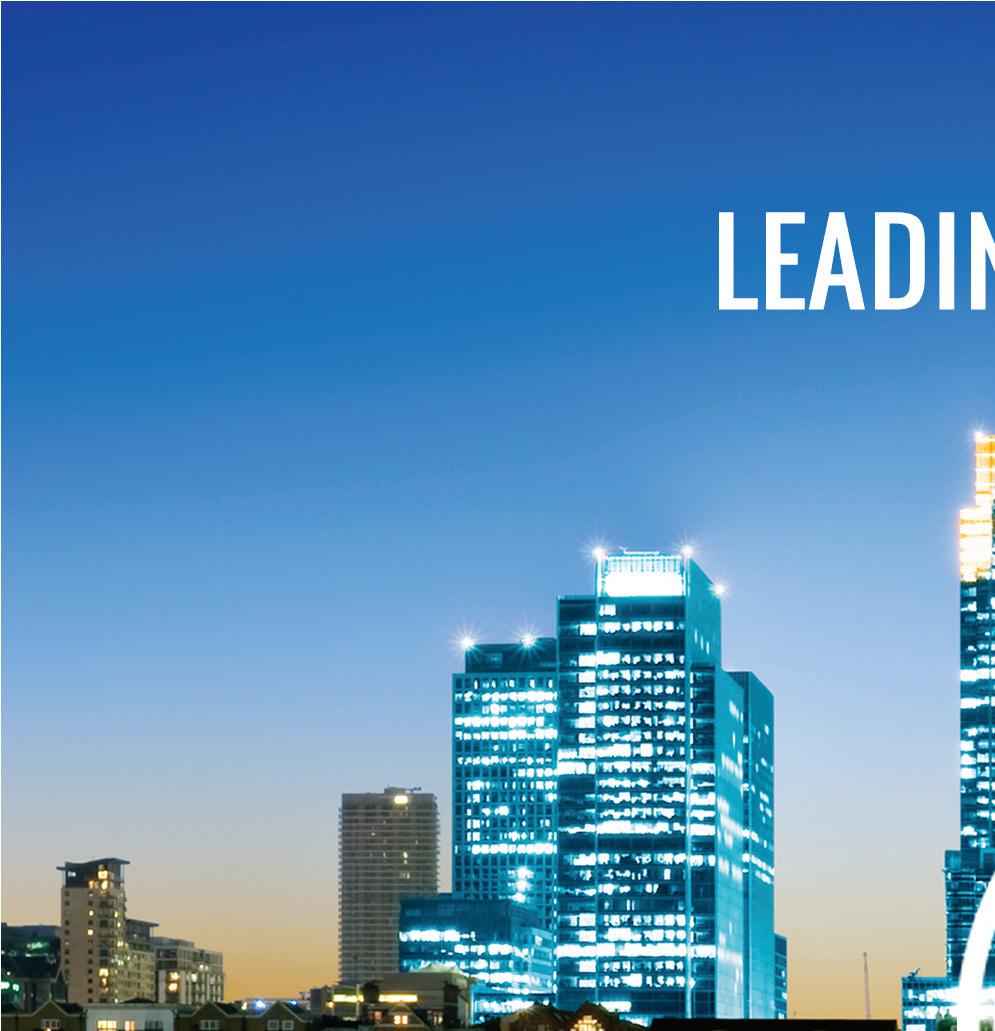









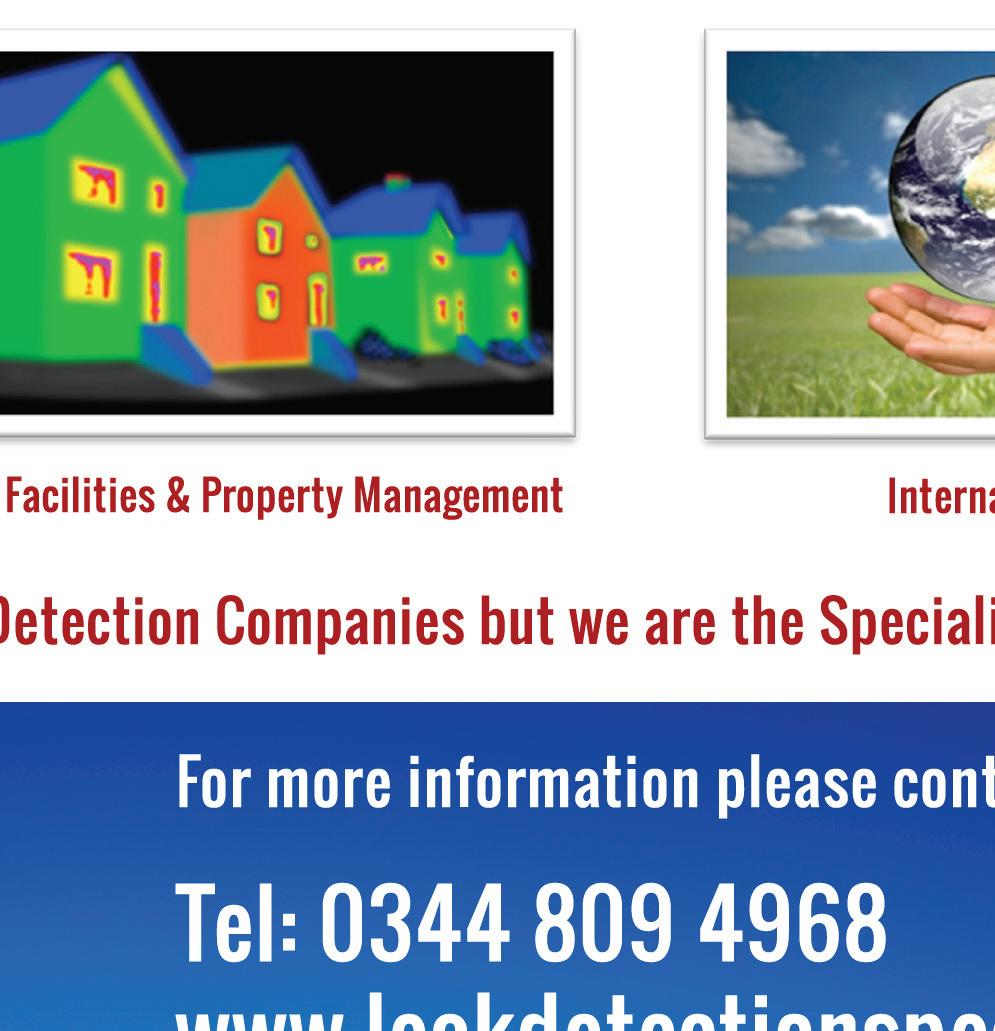
LDS 280x210 bleed.indd 2 LDS 280x210 bleed.indd 2 14/12/2017 12:56 Acoustics Correlation Tracer Gas Thermal Imaging Inspection Cameras Dye and Salt Testing Moisture Detection For more information please contact LDS Tel: 0344 809 4968 www.ldsleakdetection.com info@ldsleakdetection.com
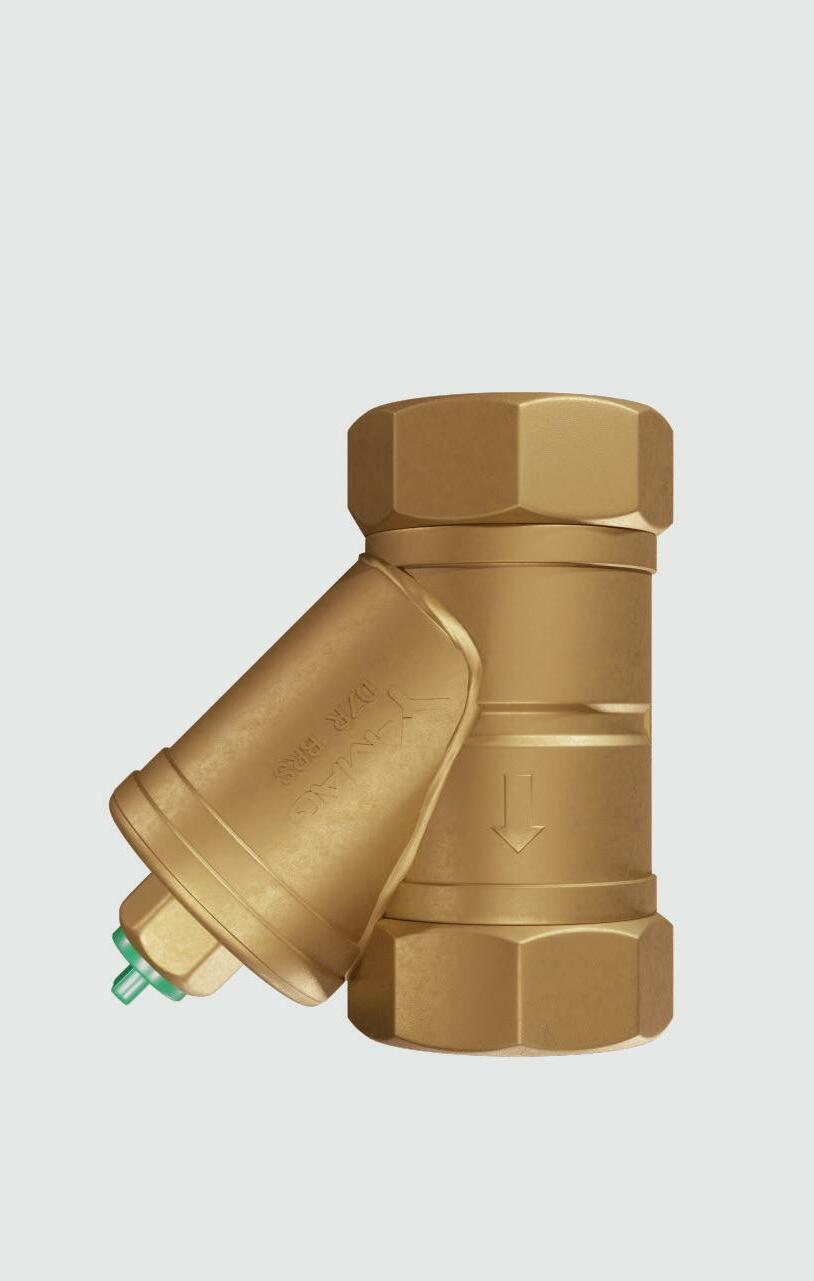

MAGNETIC FILTER AVAILABLE FEBRUARY 2022 HIGH CO2 AND ENERGY USE HIGH CO2 AND ENERGY USE DECREASED PERFORMANCE DECREASED PERFORMANCE ENHANCED PUMP PROTECTION ENHANCED PUMP PROTECTION ENHANCED PUMP PROTECTION IMPROVED WATER QUALITY IMPROVED WATER QUALITY IMPROVED WATER QUALITY SIMPLE MAINTENANCE SIMPLE MAINTENANCE SIMPLE MAINTENANCE IMPROVED PERFORMANCE IMPROVED PERFORMANCE LOWER CO2 USE LOWER CO2 USE LOWER CO2 USE LOWER ENERGY USE LOWER ENERGY USE LOWER ENERGY USE DECREASED PERFORMANCE THERMAL DISCOMFORT THERMAL DISCOMFORT SYSTEM DAMAGE SYSTEM DAMAGE POOR WATER QUALITY POOR WATER QUALITY Y-MAG INTERVENTION


























































































































































































































































































































































































































































































































































